+39 3500 437 896

- Oct 19, 2023

Traveling by train in Sicily: everything you need to know for a railway adventure.

Today, in our travel blog, we will tell you everything there is to know about traveling by train in Sicily, the enchanting island in the middle of the Mediterranean. Together, we'll discover how to get around the island by train, useful details to plan your trip, and the main routes to visit the major Sicilian cities. Pack your bags and hop on board!
How to travel by train in Sicily
In Sicily, the rail service is mainly managed by Trenitalia, which offers several options for getting around the island. You can choose from regional trains, InterCity, and for some connections, the high-speed Frecciargento trains.
Booking and purchasing tickets
To book and buy train tickets, you can do so directly on the Trenitalia website (www.trenitalia.com), at ticket counters in stations, at authorized travel agencies, or using dedicated smartphone apps. We recommend booking in advance, especially if you are traveling during the tourist season, to secure the best seats and take advantage of any promotions and discounts.

Useful details for train travel
Schedules and frequency: Regional trains are quite frequent on the main routes, while InterCity and Frecciargento trains are less so. Check the schedules on the Trenitalia website to best plan your trip.
Punctuality: Regional trains can experience delays, especially during peak season. Keep this in mind when planning your movements.
Luggage: Typically, there are no weight limits for luggage on regional trains, but storage space might be limited, especially during rush hours. For InterCity and Frecciargento trains, two hand luggages and one checked luggage per person are allowed. Ensure your luggage is properly labeled with your name, surname, and address.
On-board services: Regional trains offer basic services, such as air conditioning and restrooms. InterCity and Frecciargento trains, on the other hand, have additional services like reserved seating, bar/restaurant service, and free Wi-Fi.
Discounts and deals: Trenitalia offers discounts for children, youths, groups, and travelers with disabilities. Visit the Trenitalia website for more information on rates and special offers.

Main routes in the major Sicilian cities
Palermo - Catania: This is the most popular route connecting the two main cities of the island. Regional trains take about 3-4 hours, while InterCity and Frecciargento trains take about 2-3 hours.
Palermo - Messina: This route connects the Sicilian capital with the city of Messina, located on the northeastern coast of the island. Regional trains take about 3-4 hours, while InterCity trains require about 2.5-3 hours.
Catania - Messina: This railway line connects two of the main Sicilian cities on the eastern coast of the island. The journey on a regional train lasts about 1.5-2 hours, while InterCity trains take about 1-1.5 hours.
Palermo - Agrigento: To reach the city of Agrigento and the famous Valley of the Temples, you can take a regional train from Palermo. The journey lasts about 2-2.5 hours.
Catania - Siracusa: To visit the historic city of Siracusa, you can take a regional train from Catania. The journey lasts about 1.5 hours.
Palermo - Trapani: To explore the western coast of Sicily and the city of Trapani, you can take a regional train from Palermo. The journey lasts about 3-4 hours.
Palermo - Cefalù: The picturesque town of Cefalù, known for its beaches and historic center, is easily accessible by regional train from Palermo in about 1 hour.
Remember, some of the smaller or more remote destinations may not be directly connected by a railway line, but they can be reached by combining trains and local buses.

Day trips from Catania:
From Catania, you can embark on several interesting train excursions to discover the beauties of Sicily. Here are some options we recommend:
Siracusa : This ancient city, located about 1.5 hours by train from Catania, is famous for its archaeological and architectural heritage. Don't miss the chance to visit the Neapolis Archaeological Park, the Siracusa Cathedral, and the Island of Ortigia.
Taormina: Located about 1 hour by train from Catania, Taormina is one of the most famous tourist destinations in Sicily. The city offers breathtaking views of the sea and Mount Etna, as well as landmarks such as the Greek Theater, Corso Umberto, and the Villa Comunale Gardens.
Etna: For an excursion to explore Europe's tallest volcano, you can take a train from Catania to Giarre-Riposto or Randazzo. From there, you'll need to use alternative transportation, such as buses or guided tours, to reach points of interest on Mount Etna.
Caltagirone: Famous for its ceramics and staircases decorated with majolica tiles, Caltagirone is about 1.5-2 hours by train from Catania. During your visit, don't forget to admire the Staircase of Santa Maria del Monte and the Regional Ceramic Museum.
Ragusa and Modica: These two Baroque cities, declared UNESCO World Heritage Sites, can be reached with a mix of train and bus from Catania. The journey takes about 2-3 hours. Once there, you can explore their charming historic centers and taste the famous Modica chocolate.
Piazza Armerina: To visit the Villa Romana del Casale, famous for its splendid mosaics, you can take a train from Catania to Enna and continue with a local bus. The overall journey takes about 2-3 hours.
Acireale: This coastal town, located about 30 minutes by train from Catania, is known for its Carnival, its Baroque churches, and natural beauties like the Timpa Nature Reserve.
Remember, for some of these destinations, it may be necessary to combine train and bus or arrange a guided tour. In any case, these excursions will provide you with an excellent overview of the various attractions and landscapes that Sicily has to offer.
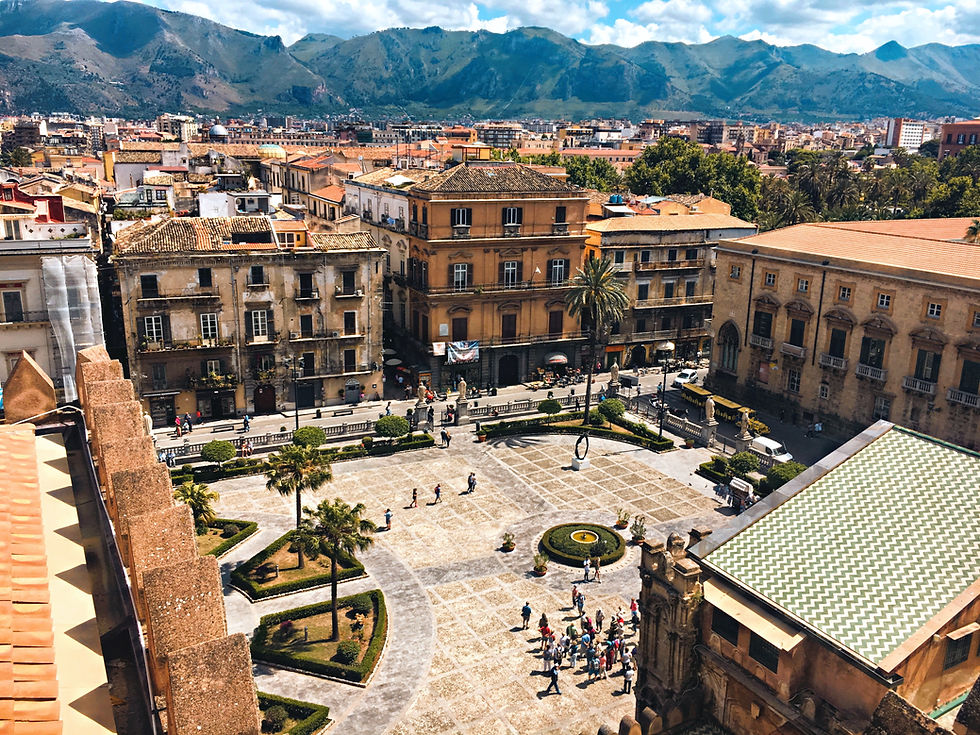
Day trips from Palermo:
From Palermo, you have several options for interesting and scenic train excursions. Here are some suggestions to explore Sicily starting from the island's capital:
Cefalù: This charming coastal town is just 1 hour by train from Palermo. Cefalù is famous for its beach, the historic center, and the Cathedral. Also, don't miss the Rocca di Cefalù, which offers a panoramic view of the city and the sea.
Monreale: Just 30 minutes by train from Palermo, Monreale is known for its splendid Cathedral, a masterpiece of Norman and Arab-Norman art, and the Benedictine Cloister. The panoramic view of Palermo from the Cathedral's terrace is a must-see.
Trapani: Located on the western coast of Sicily, Trapani can be reached in about 3-4 hours by train from Palermo. From here, you can visit the Trapani and Paceco Salt Pans, the Zingaro Nature Reserve, or take a ferry to the Egadi Islands.
Segesta: By taking a train from Palermo to Castellammare del Golfo (about 1.5 hours), you can visit the archaeological site of Segesta, which hosts a well-preserved Doric temple and an ancient Greek theater.
Agrigento: With a train journey of about 2-2.5 hours, you can reach Agrigento and visit the famous Valley of the Temples, one of the most important archaeological sites globally. The city of Agrigento also offers an exciting historic center and the Regional Archaeological Museum.
Marsala: About 3-4 hours by train from Palermo, Marsala is famous for its wine and history. You can visit the local wineries, the historic center, and the Tapestry Museum.
Erice: To reach this medieval town located on top of a mountain, take a train from Palermo to Trapani (about 3-4 hours) and continue with a local bus or cable car. Erice offers cobbled streets, ancient castles, and breathtaking views of the coast.
Bagheria: Just 15-20 minutes by train from Palermo, Bagheria is a location known for its 18th-century villas, including Villa Palagonia and Villa Cattolica. The latter also hosts the Modern Art Gallery, dedicated to the artist Renato Guttuso.
Keep in mind that for some of these destinations, it may be necessary to combine train and bus or arrange a guided tour. These excursions will allow you to discover the different attractions and landscapes of Sicily, providing you with an unforgettable experience.
- Travel Tips
Recent Posts
The White Lotus: A Tourist's Guide to the Show's Iconic Locations in Sicily
Enchanting Sciacca: A Journey Through Sicily's Hidden Gem
Isola dei conigli (Rabbit Beach): A Sicilian Paradise Crowned Among the World's Finest
Opmerkingen

Stay up to Date!
Subscribe to our newsletter to stay up to date with the latest news and exclusive offers reserved only for our subscribers. You will have access to special promotions, exclusive content, and advantageous offers.
An exceptional post today as well!

- BOOK TICKETS
- BUY RAIL PASSES
- TRAIN TRAVEL GUIDE
- ITALY TRAVEL TIPS
- RAIL PACKAGES
The best ways to get around Sicily

Almost touching the southwestern tip of Italy (the toe of the boot), Sicily is the largest island in the Mediterranean. About the size of the state of Massachusetts, it is world-renowned for its arts, cuisine, and a rich history dating back thousands of years.
With so much to see and enjoy, travellers need to consider how to travel in and around Sicily while balancing speed, comfort and cost.
Undoubtedly the most picturesque way to travel through Sicily, the train is usually the quickest way to travel between major cities. Second-class tickets are generally about two-thirds the price of first-class. Kids between 4-11 usually travel for about half the price of an adult fare, and kids three and under ride for free — which can be a great deal for travelling families. Book your Sicily train tickets on ItaliaRail.
Intercity trains are quicker, with fewer stops, but will cost you a bit more. Don’t forget to validate your ticket in one of the orange machines at the Sicily train station — inspectors can fine you if you don’t.
Cheaper than the train, especially if you get a round-trip ticket, buses comes in two flavors — orange for local, and blue for between cities. You can buy bus tickets in a dizzying array of locations — at ticket offices, newsstands, and even in some bars! As with your train ticket, remember to get it validated before you travel.
If you absolutely want to get behind the wheel, and are prepared to face traffic jams, tiny one-streets, and the eternal struggle for parking, there are many options to choose from. All the major global car rental brands are well represented in Sicily. For those looking for a little more flair, Lurento is a European leader in luxury car rentals. Ferrari, Lamborghini, Maserati, Bugatti and more, the supercar of your dreams just might be yours… for a day or two.
Whether you’ve just touched down at the airport, need to get back to base after a splendid night out, or are just in a bit of a hurry, a taxi can get you there. Make sure you have enough cash, as fares can increase on Sundays, holidays and late at night, and there is a surcharge for luggage.
It’s a bird, it’s a plane… it’s a private yacht!
Of course, if money is no object, consider seeing Sicily from the water by taking a cruise on a private yacht. The surrounding islands are famous for matchless turquoise waters, endless sun, gorgeous white and black sand beaches, picturesque villages, thriving nightlife and active volcanoes to top it all off.

Awesome, you're subscribed!
Thanks for subscribing! Look out for your first newsletter in your inbox soon!
The best things in life are free.
Sign up for our email to enjoy your city without spending a thing (as well as some options when you’re feeling flush).
Déjà vu! We already have this email. Try another?
By entering your email address you agree to our Terms of Use and Privacy Policy and consent to receive emails from Time Out about news, events, offers and partner promotions.
- Things to Do
- Food & Drink
- Arts & Culture
- Time Out Market
- Coca-Cola Foodmarks
- Los Angeles
Get us in your inbox
🙌 Awesome, you're subscribed!

You can now travel by train all the way across Sicily
The Frecciabianca line connects the two main cities of Palermo and Catania

Sicily: home to beautiful beaches, picturesque mountain ranges and truly delish food. It’s hard to think of a better way to while away the summer than travelling through the island’s gorgeous landscapes, sipping on Campari in every town. Well, that’s now got a whole lot easier, as a brand-new train line has just opened, joining up some of Sicily ’s remotest (and most beautiful) corners. The Frecciabianca route connects capital Palermo with the second city, Catania. You get to travel through the relatively tourist-free central swathe of the island, stopping off in Caltanissetta and Enna. The journey comes to an end on the coast, right by the port that takes people via hydrofoil to the mainland (where you can hop on direct lines to Naples , Rome , Bologna and Milan ). The journey isn’t exactly high speed just yet, but we reckon that makes it all the more charming. Currently, it’ll take around three hours, although this is going to be cut down to just over two hours by 2024.
Fancy exploring Sicily by rail? Find out more about the new line and book tickets via the ItaliaRail website .
Did you see that there’s a new high-speed train that runs entire length of Italy ?
- Sophie Dickinson Freelance contributor
Share the story
An email you’ll actually love
Discover Time Out original video
- Press office
- Investor relations
- Work for Time Out
- Editorial guidelines
- Privacy notice
- Do not sell my information
- Cookie policy
- Accessibility statement
- Terms of use
- Modern slavery statement
- Manage cookies
- Advertising
Time Out Worldwide
- All Time Out Locations
- North America
- South America
- South Pacific
How to get around Sicily: scenic train rides, ferries and countryside drives

Mar 14, 2024 • 6 min read
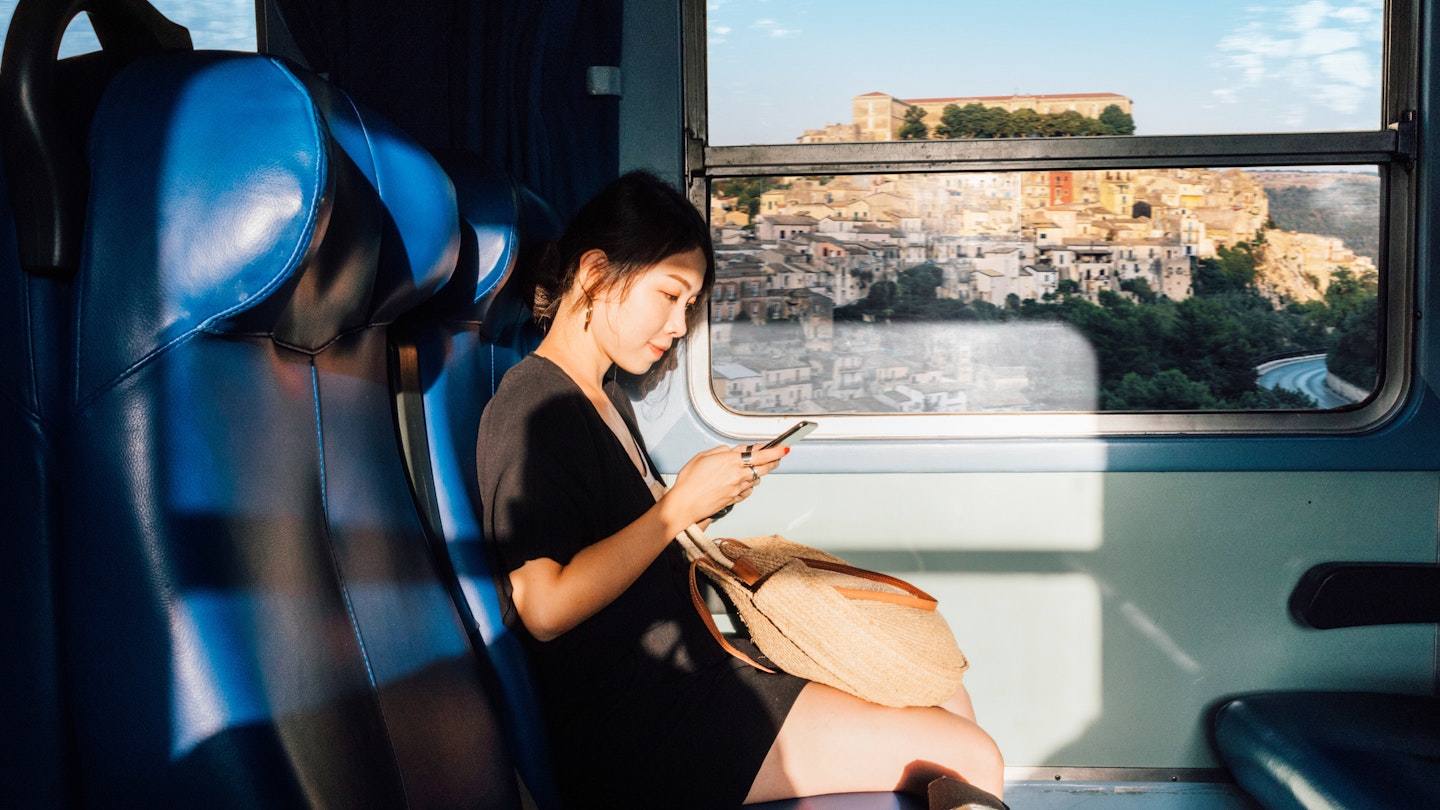
From scenic train journeys along the coast to navigating public transportation within cities, here are some top tips for how to travel around Sicily © Oscar Wong / Getty Images
The 19th-century chestnut ‘The journey is the destination: really doesn’t do justice to the epic-scaled scenery that accompanies every trip in Sicily , big or small. This Italian island straddling three seas might be modest in size, but its varied landscapes are larger than life. Bus, boat, car, train or two wheels: however you get around, Sicily throws up stupendous coastline, mountain and volcano scenery in spades. Going slow is key – but even then, you’ll struggle to ingest a fraction of the natural grandeur en route.
Palermo and Catania – Sicily’s largest cities – are petite. And bewitching. Join locals for a morning mooch around an open-air food market or ritual passeggiata (afternoon stroll), and you’ll instantly understand why exploring on foot is the only sensible way to get under the skin of these chaotic, soul-stirring urban beauties. Offshore, on the back-to-basics Aeolian islands, it’s three-wheeled Ape taxis ( Stromboli ), posh electric golf carts ( Panarea ) and donkeys (Alicudi) that fly.
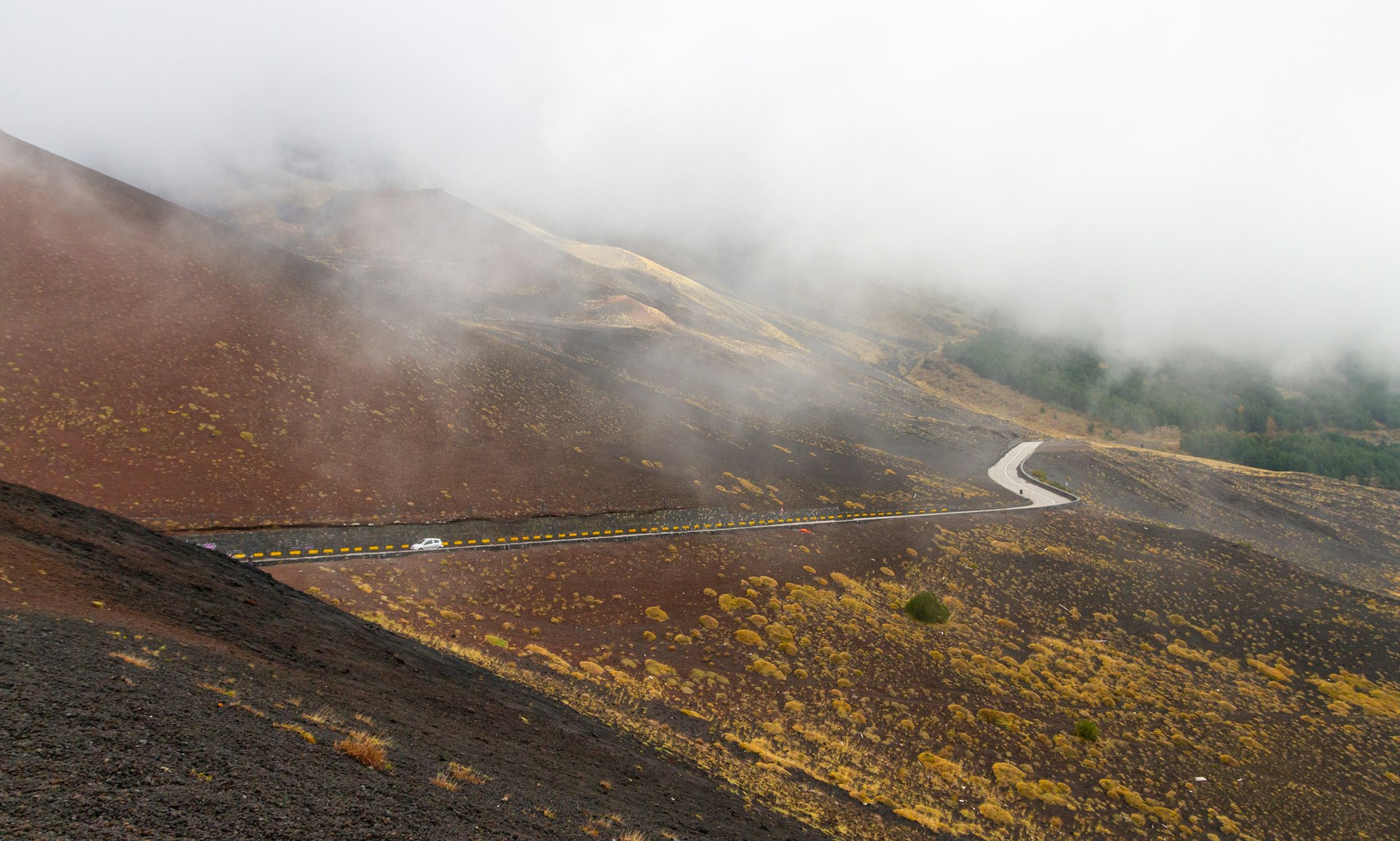
Rent a car to reach the island’s most remote corners
With world-famous sites such as Selinunte ’s ancient Greek temples and Segesta ’s must-see archaeological ruins tucked well away from any urban center, renting a car is the most convenient option. To explore the Madonie and Nebrodi mountains in the island’s remote interior or modern art marvels like Cretto di Buri tumbling down a hillside in the off-track Valle dei Belice, a car is a necessity. Ditto for wilder beaches, old-timer fishing villages, nature reserves and wineries on Sicily’s south-eastern tip and Ionian Coast .
Reserve wheels well in advance. Major car-rental agencies have desks at Palermo, Catania and Trapani airports. To rent wheels, you must be over 21 and possess a credit card. Driving licenses from EU member states are recognized, but drivers with licenses from elsewhere need an International Driving Permit.
Once on the road (always on the right), you’ll require nerves of steel. Even among Italians, Sicilians have a reputation for being the most unpredictable drivers in the country. Motorways (autostrada) and bigger secondary roads (SS/SP) are generally in good condition, but smaller roads can be pot-holed and poorly maintained. Tolls are charged on the A18 (Messina–Catania) and A20 (Messina–Palermo); have cash at hand in case the machine doesn’t like your card.
Planning Tip: Hire the smallest rental car you can to reduce the stress of squeezing your vehicle through impossibly narrow streets and into tight parking spaces.
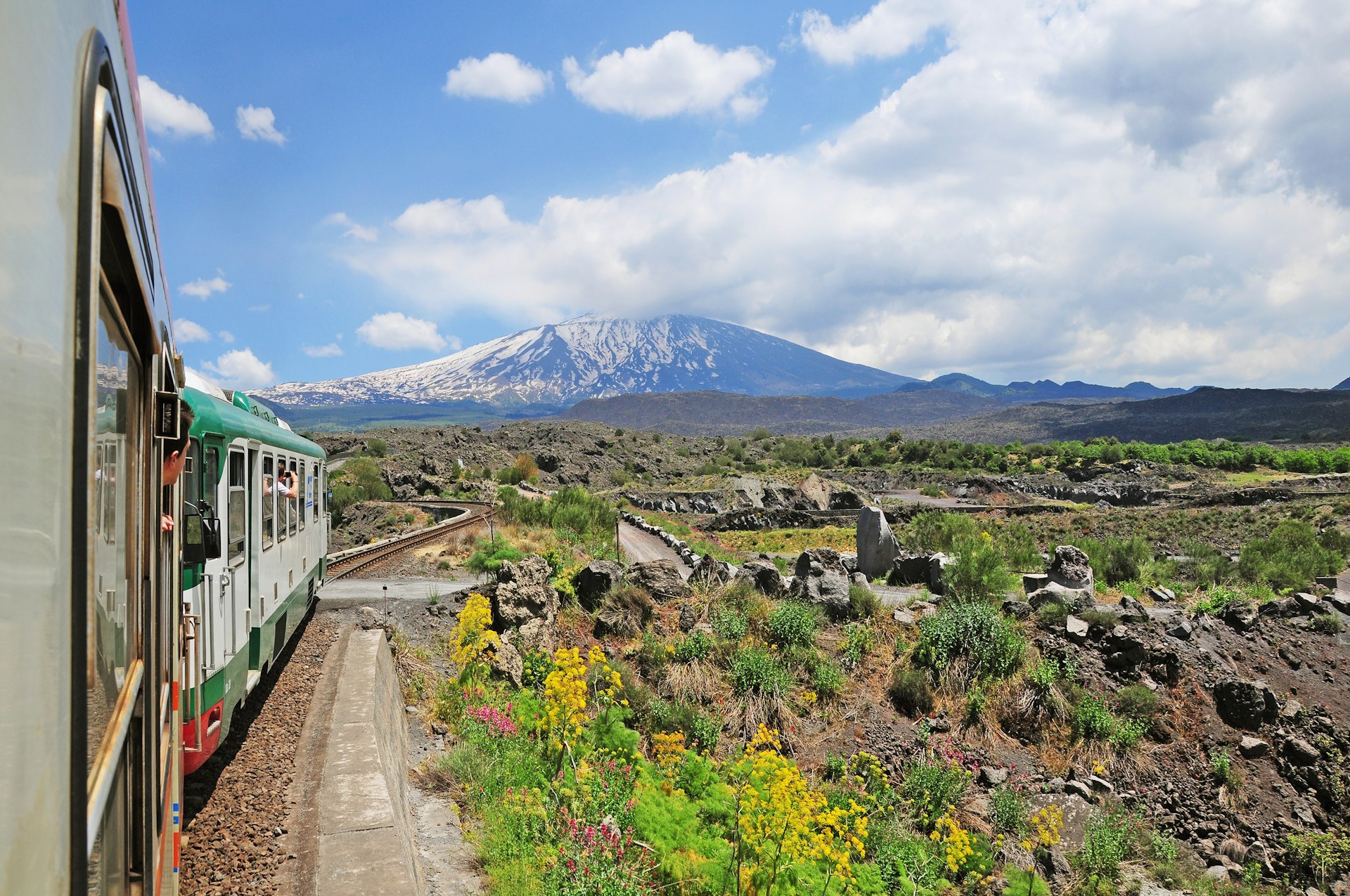
Ride the rails for glorious views
Chugging along the Tyrrhenian Coast by train between Palermo, Cefalù , Messina and Milazzo , and south from Messina to Catania on the Ionian Coast is a breeze – with breathtaking sea views to boot.
Trains operated by Trenitalia are frequent, cheap and dependable. Advance reservations aren’t necessary on slower Regionale (RV) trains – seats aren’t numbered, and ticket prices don’t fluctuate on availability, unlike faster Intercity (IC) trains, which require a seat reservation. Buy tickets before your train departs via the Trenitalia website or app. Old-school paper tickets purchased at the ticket counters and machines in train stations still need to be validated at yellow machines on platforms before boarding.
Little beats the parallel Mt Etna, and big blue vistas aboard private Ferrovia Circumetnea trains that trundle in a 110km-long loop around the base of Sicily’s feisty volcano via a narrow-gauge track constructed in the 1890s. The twice-weekly service is hands down the best way to visit wineries on Etna’s fertile slopes. Buy tickets (well in advance in summer) via the FCE Catania or DropTicket apps.
Town-hop by bus to cruise on a budget
Getting into town from the airport will most likely be your first encounter with Sicilian buses. Away from rail-serviced coastal areas, buses are generally the best way to get around; for most small inland towns, they’re the only form of public transport. In rural areas, bus services often correspond with school hours and market times – which can mean leaving incredibly early or finding yourself stranded after mid-afternoon. Check Sunday schedules extra carefully, when services are virtually nonexistent.
Buses are operated by a mind-boggling array of companies, including Flixbus for several intercity routes. Check schedules on the Moovit app or consult schedules displayed in situ at the bus station.
Planning tip: Faster, more direct buses trump trains on certain routes: Palermo–Trapani, Palermo–Syracuse and Catania to/from Ragusa, Noto, Syracuse and Agrigento.
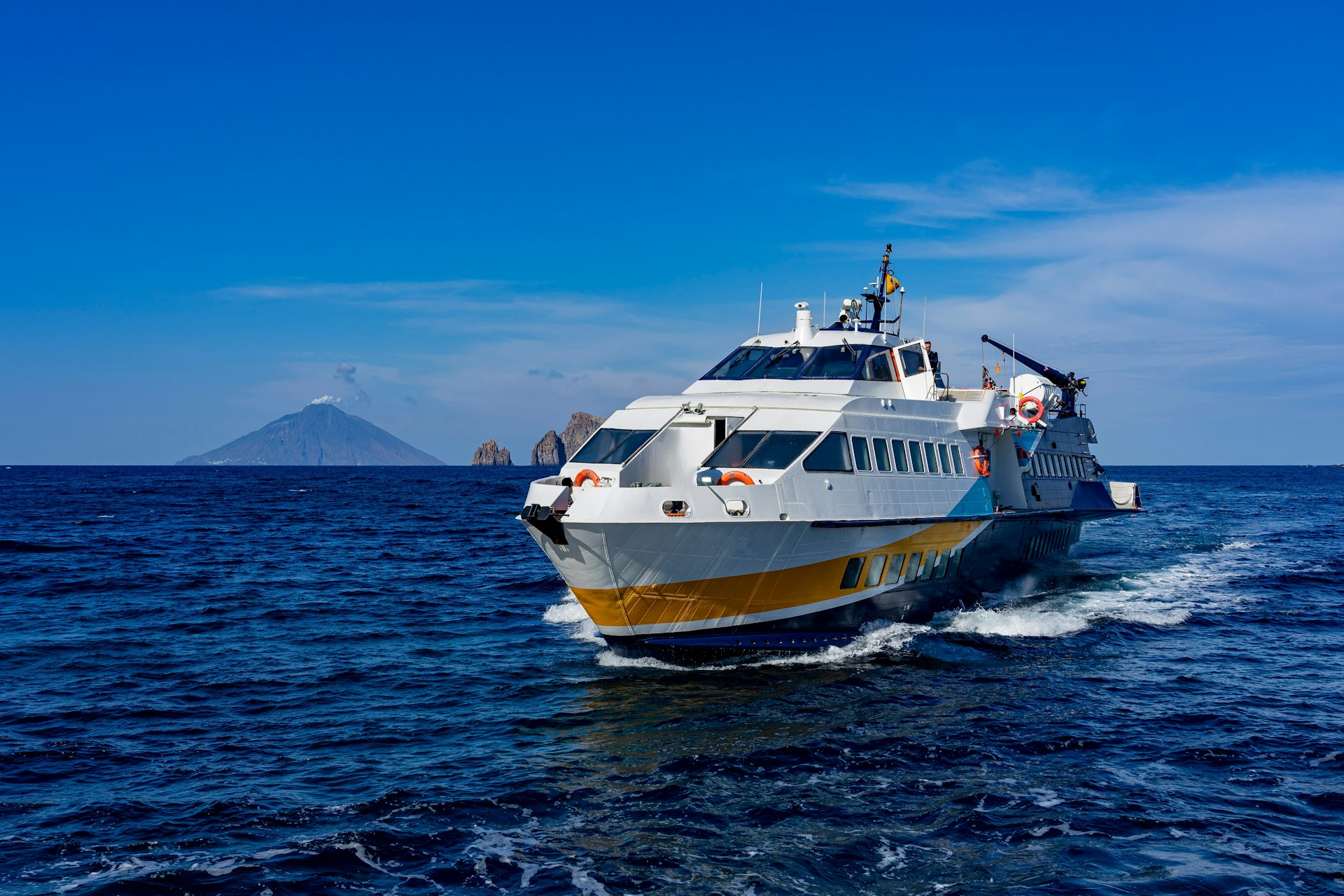
Sail to paradise in Sicily’s twinset archipelagos
It’s worth slotting western Sicily’s Egadi Islands or dreamy, UNESCO-recognized Aeolian Islands into your Sicilian itinerary, simply to sit back on a ferry or nippy hydrofoil in the Tyrrhenian Sea and admire tiny islands rising out of the cobalt-blue ocean.
Liberty Lines runs year-round hydrofoils to Favignana in the Egadi archipelago from the busy port of Trapani , and a handful to/from Marsala (better known for its honey-sweet dessert wine). Siremar operates slower car ferries.
Milazzo port is the launchpad for Liberty Lines hydrofoils to the largest Aeolian island Lipari , and beyond to its six smaller but equally charismatic sisters. Cheaper, slower ferries – limited space for cars so book well ahead – sail the same route. Inter-island sailings are most frequent from June to September; boats fill fast in July and August. Save queueing at Liberty Lines ticket offices by buying tickets online.
Once on your paradise island, private boat taxis are handy for accessing remote caves and hidden turquoise coves. Simply look for handwritten notes with mobile numbers pinned up by local fishermen and boatmen in island shops, bakeries and at ports. And remember: little beats the romance of a sunset aperitivo in barca (drinks afloat).
Zip around on two wheels
In urban Palermo, public sharing bikes and e-bikes (both operated by RideMovi – download the app to locate, pay for and unlock wheels) and free-floating e-scooters run by a fleet of operators make light work of longer distances. In Catania, download the AmiGo app to access shared e-bikes.
Further afield, road cycling – traditional and electric-assisted – is an exhilarating means of the island’s twisting backcountry and coastal roads. Roads inland can be steep and precarious, meaning bike shops offering rental and guided bike tours are most rife on the coast: in Syracuse , rent all manner of bicycles and hook up with guides at Siracuse Tour Bike to explore sea caves, medieval villages and the prized amphitheater where Greek playwright Aeschylus watched his tragedies unfold in the 5th century BC. The cinematic slopes of Mount Etna and nearby gorges of Alcantara are popular with mountain bikers ( Sicily Active arranges guided MTB tours), and on the Aeolian islands, Lipari is a mountain-biking hub.
Romantics aspiring to view Sicily from the back of a Vespa Audrey Hepburn-style can live the dream on Lipari and Salina – the two Aeolian islands with motorized traffic. Book 50cc and 125cc scooters ahead of arrival; scooters are snapped up fast in high season. Bring your driving license to rent wheels up to 125cc; anything over 125cc requires a motorcycle license. Helmets are provided and are required by law, despite the fact most Sicilians don’t wear them.

Accessible transportation in Sicily
Sicily is definitely not plain sailing for people with a disability. While some trains and buses are accessible to wheelchairs, cobbled streets in towns, narrow or crumbling pavements and hectic urban traffic are most definitely not. Some beaches are barrier-free. Sicilian airports, Liberty Lines boats and Trenitalia trains all provide assistance for passengers with reduced mobility, hearing or visual impairments.
For more information, consult online guides at Sicilia Accessibile and Lonely Planet’s accessible travel resources .
This article was first published December 2021 and updated March 2024
Explore related stories
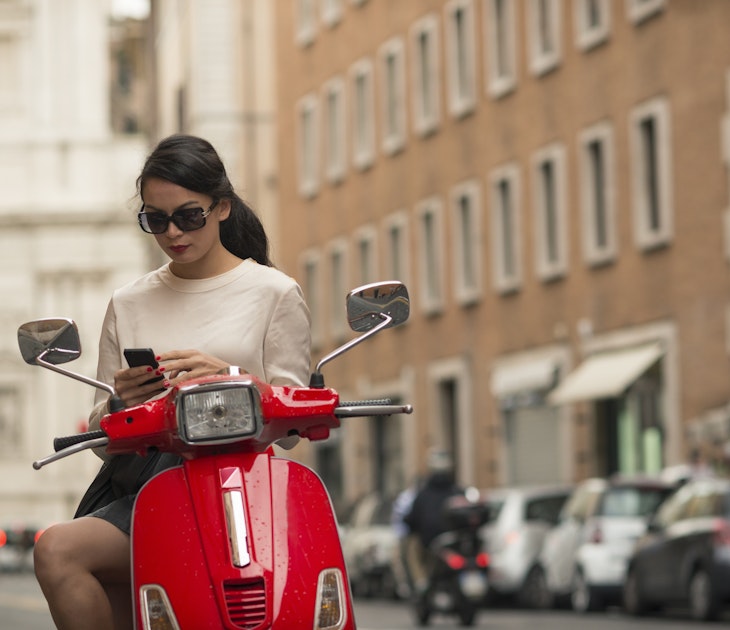
Destination Practicalities
May 30, 2023 • 14 min read
Your guide to traveling independently across Italy, from the Alps to the islands.

Apr 15, 2024 • 10 min read

Mar 21, 2024 • 6 min read

Mar 17, 2024 • 5 min read
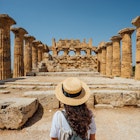
Mar 11, 2024 • 8 min read

Mar 10, 2024 • 6 min read
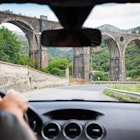
Mar 9, 2024 • 6 min read

Mar 1, 2024 • 5 min read
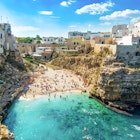
Feb 6, 2024 • 6 min read

Jan 5, 2024 • 20 min read

The Man in Seat 61
Train times, fares & tickets
Trains to sicily.
- Buy train tickets
- Buy ferry tickets
- Book a hotel
- Privacy & cookies
- Home
Train travel UK & Ireland...
Train travel in europe..., train travel in asia..., train travel in africa..., train travel in america..., train travel in australasia, rome or naples to sicily from €19.90.
Comfortable air-conditioned InterCity trains and time-effective sleeper trains link Rome & Naples with Messina, Palermo, Catania & Siracuse on Sicily from as little as €19.90. Yes, these trains are direct to Sicily, they get ferried across the Straits of Messina on board a train ferry, now the only place in Europe where passenger trains go onto ferries, a fascinating & unique experience - Watch the video! And Italy's longest sleeper journey is the Intercity Notte from Milan to Sicily, an epic ride in your own private room.
Train times southbound 2024
Train times northbound 2024, timetable notes.
These trains run every day, all year round. Each column in the timetable above is a train you can take. I won't update these times every time they change by a few minutes, so treat them as a guide and check exact times for your date at www.raileurope.com or www.trenitalia.com .
Each of these trains has two separate portions, one to/from Taormina, Catania & Siracuse, and another to/from Cefalu & Palermo, splitting or joining at Messina. I've shown them in one column to save space.
Rome to Palermo is 893 km (555 miles) by train. Rome to Siracuse is 843 km (524 miles) by train.
Milan to Palermo is 1,539 km (956 miles) by train via Genoa. Milan to Siracuse is 1,489 km (925 miles).
From Florence, Bologna & Venice , take a high-speed Frecciarossa to Naples, then a day train to Sicily, or to Rome for the sleeper to Sicily.
From Cinque Terre , take a regional train to La Spezia and the sleeper to Sicily, or travel to Rome and take a day or night train to Sicily from there.
From Amalfi , take a bus to Salerno then a train to Sicily.
From Sorrento , take the local Circumvesuviana train into Naples then a train to Sicily.
How much does it cost ?
Rome or Naples to Sicily by Intercity train
From €19.90 upwards in 2nd class or €29.90 upwards in 1st class if you book in advance, with a super-economy or economy fare.
Super-economy & Economy fares vary like air fares according to demand and how far ahead you book. The Base fare which you'd pay on the day is around €80 in 2nd class or €115 in 1st class. The Base fare is fixed and doesn't vary.
Milan, Bologna, Florence, Rome or Naples to Sicily by sleeper train
From €39.90 upwards in a 4-berth comfort couchette, €49.90 in a 3-bed sleeper, €59.90 in a 2-bed sleeper, €84.90 in a single-bed sleeper. Prices are per person per bed. These are the cheapest prices, fares vary like air fares according to demand and how far ahead you book.
How to buy tickets
Option 1, buy tickets at www.italiarail.com in plain English, in €, £ or $.
Italiarail.com is a long-established agency which connects to Trenitalia's ticketing system. They'll refund their €3.50 booking fee if you email them at [email protected] after booking. It's ticketless, you simply print out your booking reference or show it on your phone.
Italiarail.com lets you select your seat from a seat map on Intercity & high-speed trains. On the seat maps, the small grey rectangles between seats are tables.
Tip: When the search results appear, look for FILTERS, un-tick High speed and tick Direct if you want one of the direct Intercity or sleeper trains between Milan, Rome, Naples & Sicily.
Option 2, buy tickets at www.raileurope.com or www.thetrainline.com also in plain English, in €, £ or $.
They advantage of www.raileurope.com or www.thetrainline.com is that they also connect to the British, French, Spanish, Swiss, German, Austrian & Benelux ticketing systems, so you can buy tickets for much of Europe together in one place. It's ticketless, you simply print out your booking reference or show it on your phone. There's a small booking fee. Thetrainline.com lets you select seats from a seat map on Italian Intercity & high-speed trains.
Option 3, book at www.trenitalia.com . However, even when switched to English, you'll need to use Italian-language place names and understand the different sleeper types in Italian. www.italiarail.com , www.raileurope.com & www.thetrainline.com are easier to use.
Booking tips
Tip 1: Booking opens up to 4 months ahead , but dates after the mid-December timetable change usually only open for booking in mid-October. For the cheapest prices, book as early as possible & avoid busy trains, days & dates.
Tip 2: Italian sleeper trains often open for booking late, after high-speed and daytime trains are already loaded and appearing. So if you're looking several months ahead and the train is missing, don't panic, just wait . These trains are aimed at Italians living their everyday life and booking tickets days or weeks ahead, not months.
Tip 3: If booking Rome to Sicily (or vice versa), look through the search results for a journey with 0 changes. You may see faster Rome-Sicily journeys with 1 change, that'll involve a high-speed train between Rome and Naples or Salerno, but my advice is to stick with the direct train.
Tip 4: When you book a couchette, one ticket = one bunk = one person. If you book one bunk in a 4-berth, you get one berth and the other 3 berths are sold to other passengers. If you book 4 berths in a 4-berth you get the whole compartment.
Tip 5: You are shown your seat or berth numbers before you confirm & pay. In couchettes, if the first digit is the same for all 4 passengers, for example 41, 42, 43, 44, then you're all in the same compartment, in this example compartment 4. In sleepers, if the first digit is the same and the second digits are all odd or all even, then you're together in the same compartment, for example 21, 23, 25 are together in one compartment, with 22, 24 & 26 together in the compartment next door. When sold as a double, the middle bed number isn't used, for example 21 & 25 are together in one 2-berth compartment and so are 32 & 36. See sleeper numbering plan .
You can also book direct with Trenitalia at www.trenitalia.com , with no booking fee. However, even when their site is switched to English, you'll need to use Italian-language place names and understand the different sleeper types in Italian. It's easier to stick with www.italiarail.com , www.raileurope.com or www.thetrainline.com .
What are the Intercity trains like?
Intercity trains (IC) have with 1st & 2nd class seats in open-plan cars, arranged 2+1 across the car width in 1st class, 2+2 across the car width in 2nd class. Both classes are comfortable and have power sockets at seats, toilets in every car and plenty of luggage space. There is no WiFi, but there's 4G/3G and sometimes 5G mobile reception along most of the route. There's no catering car, so although you may get a refreshment trolley come down the train, you should bring a picnic and bottle of wine along for the ride.
This is the Rome-Sicily Intercity train on board the ferry for the voyage across the Straits of Messina. You can leave your heavy luggage on the train while you go up on deck for some sea air and a cappuccino... Courtesy Discoverbyrail.com .
Vesuvius & the Bay of Naples, seen from the Intercity train after leaving Naples. Courtesy Discoverbyrail.com .
The scenery between Naples & Villa San Giovanni is lovely, all along the coast with mountains inland, see the route map below . Remember that picnic and bottle of wine! Courtesy Discoverbyrail.com .
Villa San Giovanni . After calling at Villa San Giovanni station, the train draws forward, then sets back onto the train ferry. The train is divided into several sections, side by side on the ferry's train deck. Above, the view of the train ferry as the train pulls forward. That's Sicily in the distance, on the other side of the Straits of Messina.
What are the sleeper trains like?
The Intercity Notte (ICN) trains have 1, 2 & 3 bed sleepers and 4-berth couchettes. There are no ordinary seats, or 6-berth couchettes.
Below, dawn over Sicily as the InterCityNotte from Rome approaches Messina on board the train ferry. Courtesy of Richard Simcox, who went up on deck at 5am while his family slept on in their couchettes on board the train. Sometimes rising early has its rewards!
1 & 2 bed Excelsior sleepers
There are Excelsior sleepers with en suite shower & toilet on the Milan-Catania-Siracuse night train and on one of the Rome-Catania-Siracuse night trains. You won't find Excelsior sleepers to or from Palermo, or on most Italian sleeper trains. There's just one rebuilt T3S sleeping-car on each train and each car has just 4 Excelsior compartments with shower & toilet plus 6 standard Deluxe compartments with washbasin. It's nice to have your own toilet & shower, but don't be too surprised if no water comes out of the shower! Apart from the en suite shower & toilet, facilities & catering are the same as the regular sleepers described below. See layout of a T3S sleeping-car . Excelsior photos courtesy of Philip Dyer-Perry & Niklas Hoth. Click the images for larger photos.
1, 2 & 3 bed Deluxe sleepers
The regular sleeping-cars are branded Deluxe . A corridor runs along one side of the car off which open 12 compartments, each of which can be sold as 3-berth (triple or tripla ), 2-berth (double or doppio ) or single-berth (single or singolo ). There are two toilets at one end of the corridor near the attendant's compartment.
Each sleeper compartment has a washbasin and 220V power outlet (Italian 2-pin rectangular type), and locks securely from the inside. The beds come fully made up with clean sheets, pillow, duvet. For the daytime part of the journey, the beds fold away and a 3-seat sofa folds out to make a private sitting room (the centre seat folds back down to form a table between the two outer seats if there are only two of you).
A fresh towel and simple amenities kit is provided with soap, toothbrush, toothpaste, wet-wipe. A small bottle of drinking water is provided. Luggage goes in your compartment with you, on the rack above the window, in the large recess above the door, or on the floor.
There is a connecting door between adjacent compartments which can be opened if the bolt on both sides is slid back. The door connects compartments with berth numbers that share the same first digit, for example 21, 23, 25 connects to 22, 24, 26.
In the morning the sleeper attendant serves you a light breakfast with coffee & juice. Bring your own food & drink for the evening, with perhaps a bottle of wine!
Since the pandemic, Trenitalia no longer allows solo travellers to book 1 bed in shared sleeper compartments. Only entire 1, 2 or 3 bed rooms ( cabina intera ) can be booked in the sleeper category. So if you're solo you'll have to pay for a single if you want to use a sleeper rather than a couchette.
Above, the Milan-Palermo sleeping-car of the Milan-Sicily sleeper train has reached Messina, on time. Click the images below for larger photos.
4-berth Comfort couchettes
The economical choice, ideal for families or budget travellers. A corridor runs down one side of the car, off which open 9 securely-lockable compartments, each with 4 berths (2 upper, 2 lower). Each berth is provided with sheets, pillow & blanket, but unlike the sleepers you arrange these yourself. The upper bunks fold back against the wall and the lower berths become seating for evening and morning use.
There are toilets and washrooms at the end of the corridor. Luggage goes in the compartment with you, on the overhead racks, under the lower berths, in the large recess above the door or on the floor. There's no catering car, so take snacks and a bottle of wine with you. An attendant travels with each pair of cars.
In the morning, a light breakfast of coffee, orange juice and snack is included in the fare, served by the attendant.
In couchettes, berths are sold individually, so one person = one ticket = one bed. A solo traveller who books one ticket gets one berth in a shared couchette compartment. Usually these are mixed gender (Promiscuo) , but women travelling alone can choose a ladies-only compartment (Donna) . If you book 4 people you'll get a whole compartment (cabina intera) to yourselves. There's also a fare for 3 people to have sole occupancy of a 4-berth compartment (a more spacious option than a 3-bed sleeper, arguably a better choice if your journey involves a significant daytime element). See a trip report video .
Above, a Comfort couchette car on the Milan-Palermo overnight train, boarding at Milan Centrale.
Travel tips
Daytime or sleeper?
The sleeper is the time-effective option taking little more time out of your day than 4 daytime hours of getting to an airport, checking in, going through all that airport security, the flight, then the trek into the city from the airport. The sleeper is more fun and saves a hotel bill. Depending what time sleeper you take and the time of year, you can experience the train ferry and see the great scenery between Messina & Palermo or Messina & Siracuse, even on a sleeper.
On the other hand, the day trains are cheaper and take you south from Rome & Naples along the coast to the 'toe' of Italy before going onto the train ferry to Sicily. Bring a good book, a picnic and a bottle of Chianti, and you'll have a blast.
1st or 2nd class?
On the Intercity trains, 2nd class is absolutely fine for most travellers, there's no need to go 1st class unless you don't mind the extra cost. But see what prices you get because with dynamic pricing 1st class often costs only a little more. 1st class means more leg and elbow room and usually a quieter environment, that's all.
1st class also gets you solo seats and tables-for-two on one side of the aisle, as seats are arranged 2+1 across the car width rather than 2+2 as in 2nd class. In fact, the solo seats and face-to-face tables-for-two are why I prefer first class if I'm travelling alone or with Mrs 61.
Forward-facing seats
The reservation system doesn't know which way round the car will be, so you can't select forward facing seats. However, Naples Centrale is a terminus so seats that face backwards between Rome & Naples will be forward-facing between Rome & Sicily. My advice for a couple or family is to book seats facing each other across a table. You can select seats from a seat map if you book using www.italiarail.com , www.thetrainline.com or Trenitalia.com.
You can pretty much take any luggage you like, nobody cares how much it weighs or what size it is. You take it with you onto the train and put it on the luggage rack, there's plenty of luggage space in both classes. On the intercity trains, the racks above your seat take anything up to backpack-size, the racks at the end of each car will take large suitcases. More about luggage on European trains .
Power sockets & WiFi
There's no WiFi, but 4G/3G and sometimes 5G reception will work much of the way. Intercity trains have power sockets at seats in both classes, the sleeping-cars have a 220V outlet in the compartment, although this may go dead when the locomotive is changed, or on board the ferry.
Boarding your train
As with virtually all European trains, there's no check-in. Just stroll into the station, find your train and get on, any time before it leaves. The doors may be closed a minute before departure. See Rome Termini station guide . See Naples station guide . See Milan Centrale station guide .
Which side for the best scenery?
The coastal scenery is on the right hand side going south from Rome, left hand side going north from Sicily, although you cannot specify which side you sit as the reservation system doesn't know which way round the car will be. If going to Catania or Siracuse, the sea views with be on the left when going south from Messina, with views of Mt Etna to the right.
Food & drink, the most important tip!
Take a picnic and bottle of wine or some beer. This is the most important tip, as none of these trains have a restaurant or buffet car, though you'll find vending machines selling drinks and snacks in the service car of the Intercity trains. In sleeping-cars, a morning cup of tea or coffee and snack is included, but I recommend taking a picnic and bottle of wine.
On board the ferry between Villa San Giovanni & Messina
The ferry crossing between Villa San Giovanni & Messina takes 20 minutes, although shunting the train onto and off the ferry takes longer. On daytime crossings most people get off the train whilst it is on board the ferry and go up into the ferry's passenger accommodation, perhaps getting a coffee or sandwich from the cafeteria and going on deck for some sea air and the views. You can leave your luggage on the train, but should obviously take your valuables. On a sleeper train on a night-time crossing you can remain in bed on board the train whilst it is on the ferry, you do not have to get off unless you want to.
Do they run on time?
These trains can indeed run on time, surprisingly - but they can also run late, sometimes an hour or two. Don't stress, this is southern Italy where an hour or two doesn't matter. Just bear this in mind when arranging connections.
The alternative: Direct ferries between Naples & Palermo
You can sail from Naples to Palermo by comfortable overnight ferry, with a or shared cabin with en suite shower & toilet, and there are restaurants and bars for an enjoyable evening on board. Ferries typically sail every day at around 20:00 and arrive around 06:30 in both directions. See www.tirrenia.it & www.snav.it for times, dates, fares & online booking.
Traveller's reports
Traveller Andrew Clayton reports: " We took the daytime InterCity train from Naples to Siracuse, having first loaded up with essential supplies (water, bread, cheese, wine etc.) as there is no catering on the train. Rather than buy at Naples Centrale where there's only limited food shopping, we went out of the station and found nearby shops that sold all we needed – at much lower prices. There was attractive scenery - sea and mountains - almost all the way to Villa San Giovanni where the train is loaded onto the ferry to Sicily in two sections. We were in the last coach and discovered that, if you went to the end, you could look through a glass door to see the coaches go onto the ferry and be tied down. It is safe to leave large luggage on the train during the crossing when most people go up on deck."
Video : Loading the train onto the ferry
Back to home page

Traveling by Train in Sicily
Train travel in Sicily is not for those in a hurry. It is best suited to those individuals who need to atone for their sins by doing penance, and rumor has it that a one-way ticket on Sicilian rail can be redeemed for a week out of purgatory. At least you won’t be fighting traffic and clinically insane drivers, or spend your day looking for a parking space.
Most trains in Sicily are Regionale , which, no matter how you translate it, means slow. They usually offer only 2nd class tickets and no services other than bringing your bicycle on board, presumably so that when you get fed up with the painstakingly slow train, you can quickly pedal away. On the bright side, regionale train tickets are cheap and routes are often scenic.
One rail route in Sicily that holds promise as a sightseeing journey and a step back in time is the Ragusa-Syracuse route, which takes approximately 2 hours one way. (You can also board the train at Modica, one stop east of Ragusa, which has slightly more frequent service and trims about 30 minutes off the journey.) The train is usually a rickety 1-2 car contraption, redolent of sweat and dust, but with a friendly conductor, who occasionally stops for coffee along the way. This old Sicilian train wends its way through groves of gnarled olive trees, peeks into the vegetable gardens of ramshackle houses, stops for no reason under the shady canopy of a magnificent carob tree, dips down towards the shimmering turquoise sea, and as it nears the town of Noto, is engulfed by lemon trees. In spring the scent of lemon blossoms fills the train with a scent so intoxicatingly sweet you’ll feel like you’ve skipped purgatory and gone straight to heaven. When the train finally squeals into the station at Syracuse, you can stretch your legs by walking the 20 minutes into the old quarter of Ortygia, and stroll by the seaside eating gelato . Make sure you check the return train times if you don’t want to be stranded overnight in Syracuse.
Details: You can view train schedules for all trains in Italy at www.trenitalia.it and there is a clickable option to view an English language version.
16 thoughts on “ Traveling by Train in Sicily ”
What’s so bad about being stranded in Siracusa overnight? You can visit the puppets in Ortygia, watch the sea reflect the stars, eat a wonderful dinner, followed my more gelato.
Right you are-just remember to take your luggage with you when you leave Ragusa!
Hello, Is there a website where you can search for itineraries, hours and prices for travelling by train in Sicily? Thank you
Hello Romy- There is the national train system website of trenitalia, where you can search for schedules and prices by listing departure and arrival cities. http://www.trenitalia.com Be forewarned that it is difficult to travel all over Sicily by train, and that buses are often a faster alternative. If you do a search for “servizio pullman” or “autobus”and the name of a town, you can find bus company schedules. Buon viaggio! Ciao, Anita
I found the trenitalia site almost useless in trying to plan an itinerary in Italy. Routes of the network would be helpful.I couldn’t find any information on the circumetna line from Catania despite an evening’s search.However,I did enjoy 20 minutes of a video on this route found on another site.
The circumetnea minor train line is not part of the Trenitalia network. Many of the towns around Mt Etna are also served by bus. Look ofr further info here: http://www.circumetnea.it/mainen.asp?1
Will be cycle touring in Sicily in Sept 2013. Do you know how amenable they are to bicycles on trains?
Marion- If you look at the trenitalia website with train schedules, their is a bicycle icon if they take bikes. Train service is slow and infrequent in Sicily – it may be faster just to ride your bike! Have a wonderful trip and stay off the main roads. Get a Touring Club Italiano map, 1:200 000 scale, and you should be fine.
I am going to a little town called San Giuseppe Jato sicely, is there a public bus that goes to palermo,sicely? And how do I find a schedule of times .
Ciao Anita. Thanks for train travel info. Can you recommend any nice day trips from Palermo in January (train or bus). Grazie mille. Moira
Hi Anita, We are arriving in Palermo on the 13th August and plan to fly out of Catania on the 22nd. Is it possible in the time frame to use public transport to see Trapani, Taormina, Syracuse And fly out of Catania to Rome.
Hi Anita – husband and I will be spending the month on January in Sicily….moving around….hopefully by train or bus….can you offer information on a logical routing? We want to be in Palermo from the 23rd of January to the 29th to meet up with family members. I know the weather will not be great…but better in Sicily than Chicago!
I need to be in Palermo on an Oct. date when there are no flyer milage award seats from the USA, but I can get them flying into Catania, arriving 2:30 pm. Would you recommend I stay overnite in Catania and go by rail next a.m. or try to get to Palermo same day I arrive in Catania? P.S. We will see Catania for 3 days at end of tour.
I would take a bus the same day from Catania to Palermo or check the train schedules, as bus can be more frequent and faster.
I was in Palermo, Sicily and I took a train to San Nicola. How far can you go on this same train to see other towns, like Tribia? and further in a day?
what is the route of the train that goes into and out of Palermo, comuter route daily?
Leave a Reply Cancel reply
Your email address will not be published. Required fields are marked *
Italian Connection

- Things to Do in Rome
- Where to Stay
- Rome Restaurant Reviews
- Day Trips from Rome
- Shopping in Rome
- Explore Italy
- Life in Italy
- Practical Information
Taking the Train in Sicily

I have been told by many Italians that I am the only person who takes the train in Sicily. Sicilians prefer the chartered buses that create a patchwork of links to the smaller towns and connect to the larger cities across the island. However, it is entirely possible to take the train in Sicily – you just need to plan and know when to give in a take the bus.
Naturally, the best way to get around this part of Italy is by car. This frees you to set your own schedule and to reach all of the little towns and hidden beaches which your heart desires. I certainly would not recommend having a car (and dealing with parking) in Palermo – or even Catania – so try to pick it up as you are leaving the city if you choose to go this route.
You can also skip the cities entirely and rent a car at the airport to set out immediately on your merry way. Just keep in mind that travel times can be long even by car if you plan to visit the interior due to the road conditions. I 100% recommend getting the full insurance, and you will be paying extra if you want an automatic transmission, so renting a car in Sicily may cost you.
I am a train girl myself (whenever possible), so here is everything you need to know about taking the train in Sicily – the pros, cons, and tips for making it as easy as possible. For even more on using this form of transportation, you can read my guide to train travel in Italy .
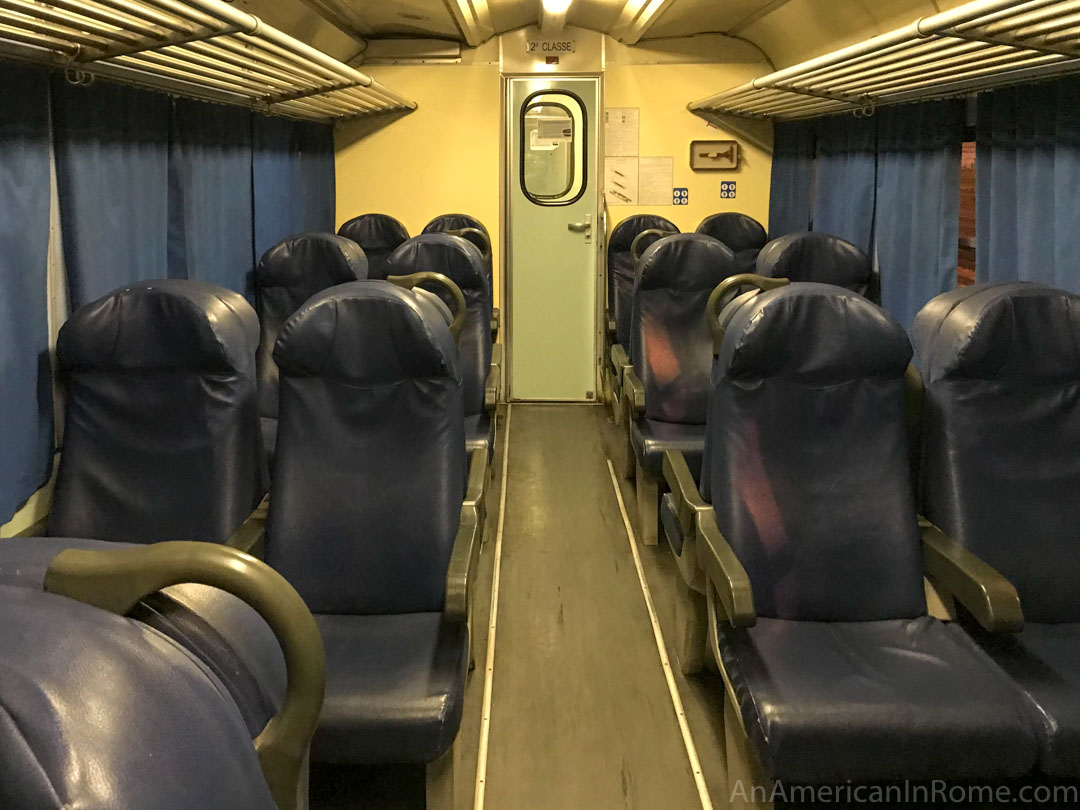
There is no highspeed train in Sicily so this is slow travel. In the rest of Italy you can find faster FrecciaRossa and FrecciaArgento options but the fastest train you will find in Sicily is a regionale veloce. This means that it makes fewer stops but still doesn’t reach a very high top speed. This is ok with me when the other option is the bus, which is slower.
Since not many people use the train in Sicily, the schedules can be pretty hard to work around. Certainly not impossible, but also not ideal. For me to get from Siracusa to Scicli (admittedly, not a crazy popular destination), I had to get a train at the painful hour of 5:29 am because the next one was not until nearly 11 am and that would have been too late for exploring the town before lunch. Upside? I was the only person on my train and I pulled into Scicli at 7:20 am with the day ahead of me.
There are sometimes bus substitutions. Even if you do manage to find a train, you might note that it says you need to make 1 cambio (change), and the change will be to a bus. This bus is operated by TrenItalia and will be right outside of the station doors.
There can be delays. I honestly don’t believe that the trains in Sicily are more unreliable than other trains in Italy, I think they are just more infrequent. There will be delays. These can be 10 minutes due to traffic on the track or hours because of other issues. The challenge is that, since there are fewer trains, you don’t really have a great option to switch to take a different train if the one you planned to be on is late. You simply have to wait. Or take the bus.
Places in Sicily You Can Travel By Train
Keeping all of the above points in mind, there are certain routes where it is quite easy to take the train in Sicily. You don’t have to worry too much about schedules, except on Sundays, because the trains along these routes are fairly frequent and reliable. Most of the time.
Palermo to Catania: This comes down to personal preference because the train does not save you too much time. The journey from Palermo to Catania takes about three hours and the bus to Catania takes about 3 hours and 15 minutes. The train takes you along the coastline for the first part of the journey so the scenery can be lovely. Then you travel through the countryside for much of the middle part of the train trip. There are trains about every 2-3 hours (or 5-6 a day). The trip currently costs €13.50 in one direction. I still take the train because I like having the space to spread out a bit and to get up and walk around with my little one if we need a break from the seats.
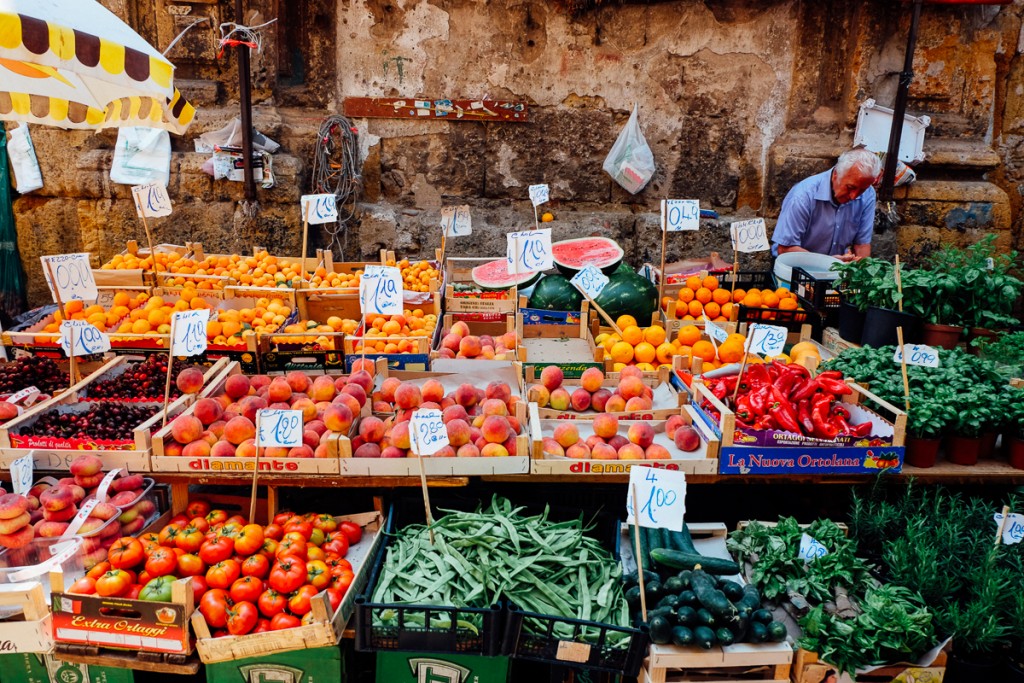
Palermo to Cefalù : Cefalù is absolutely worth the trip from Palermo. The seaside village has become a bit touristy but it is still a lovely beachside escape for a day or as a base for relaxing and exploring. The train from Palermo is very easy and reaches Cefalù in just under an hour and the trains depart about every hour and a half. I do recommend getting there a bit early to ensure you have a seat because this is a popular route and tickets do not guarantee you an assigned seat. The train station in Cefalu is about a 10-minute walk above town, but it is a fairly easy stroll and you do not need to take a bus.
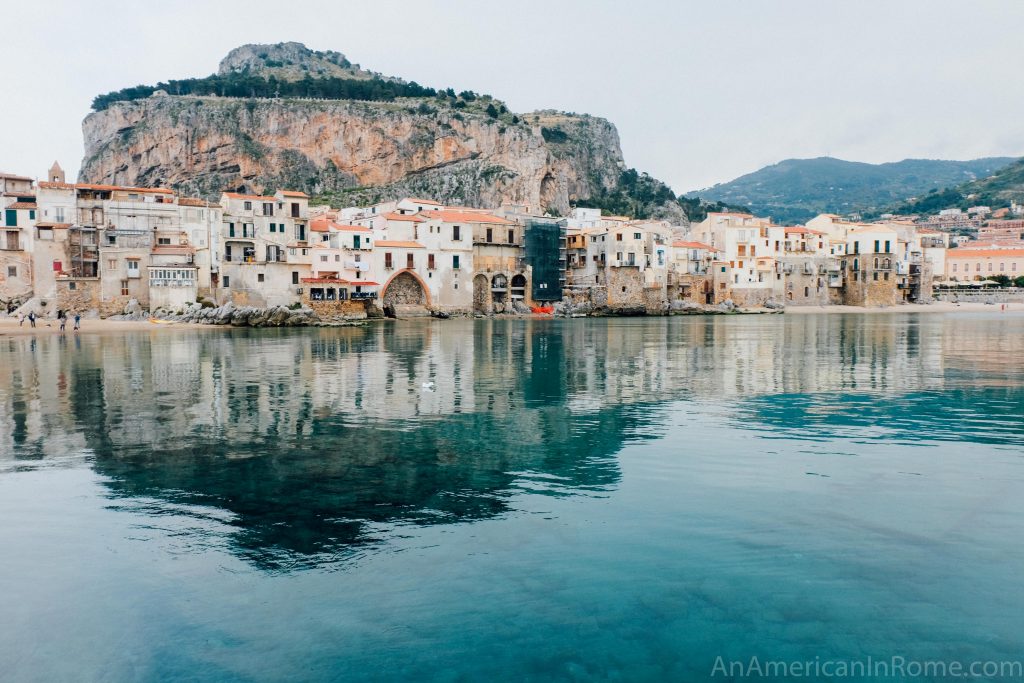
Catania to Taormina : Taormina is incredibly close to Catania and it is fairly easy to reach by train. You will actually take the train from Catania to Taormina-Giardini, the beautiful old fashioned station at sea level below Taormina. Most trains take about an hour, but sometimes the stops are more limited and you can get there is closer to 40 minutes. When you arrive at Taormina-Giardini, you will need to walk outside and take the bus up to the station just outside town. That bus ride is 10 glorious minutes up a twisting cliff road with beautiful views. The old town is a 10-minute walk away, and you do not need a car to see anything in the resort town. Buses also run from the center of Catania to Taormina, if you prefer to go directly.

Catania to Siracusa (Ortigia) : Catania to Siracusa is one of the easiest train routes in Sicily. Siracusa is the train station to reach Ortigia, a gorgeous, walkable island. It is one of the places I love most in Sicily and I highly recommend a trip. In this case, you would fly into Catania and catch the airport bus to the train station. The trip from Catania to Siracusa takes one hour and 50 minutes.
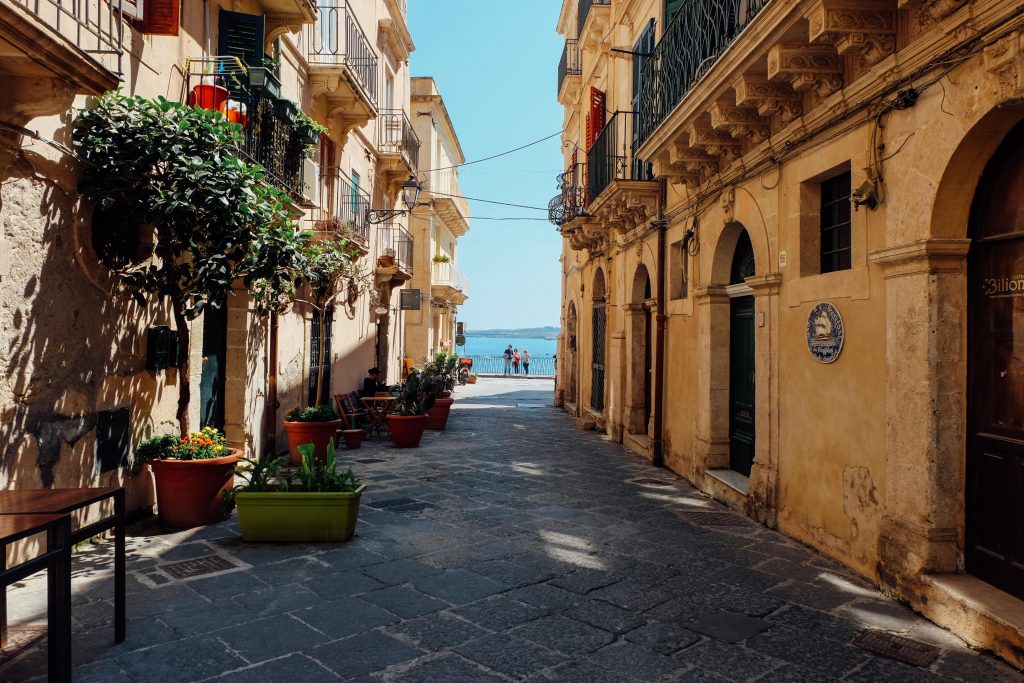
Siracusa to Noto : You can take the train from Siracusa to Noto, and even to other smaller villages in the Noto Valley. I went by “train” to Scicli, which is past Noto but I had to switch to a Trenitalia bus in Noto, which was timed with the train. The line to Modica was also under construction in 2019 and it was more confusing to find the substitute bus there. The train from Siracusa is usually only one car long so you can guess the number of people you will encounter on the journey. However, in this case, I do recommend taking the bus instead. The Noto train station is not in town, whereas the bus drops you right at the entrance to the pretty village. The bus station in Siracusa is just one street over from the train station and is easy to find.

Bus Companies in Sicily
If you don’t see a good way to travel by train in Sicily for your specific itinerary, then you might want to look into the buses in Sicily if a rental car is not in your future.
Some of the main private bus companies in Sicily that run various routes include:
- Interbus (Etna Transporti)

You can buy tickets on the bus or at a tabacchi before boarding. If you have luggage, large pieces are usually loaded underneath and small baggage can come up into the seating area with you. Keep in mind that these buses provide important intercity links between small towns and will be especially crowded around school times when some students use private buses to get home.
Enjoy your time in one of my favorite regions in Italy!
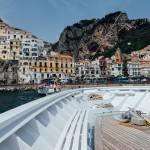
Natalie is a food and travel writer who has been living in Rome full time since 2010. She is the founder and editor of this blog and prefers all of her days to include coffee, gelato, and wine.
9 thoughts on “ Taking the Train in Sicily ”
Great post Natalie-I hope to visit Sicily with a car but in case not, this will be very helpful.
thank you very much for this information i have been to sicily many times but not by train .My grandmother was from a small town called ciminna in sicily .
If I have a ticket for train Palermo to Catania, can I get on and over several days getting there?
No, you will need to validate your ticket and the ticket will then only be valid for that journey within a couple of hours. It is not good for hopping on and off.
So helpful! Thank you!
Very interesting and informative blog. I took due note of the warnings about the trains in Sicily however I must say that my experience does not bear out the warnings. My friends and I thought the quality, speed and reliability of the train service was perfectly acceptable. True, timings are strange, not following any pattern. We travelled between Catania and Taormina, Catania and Palermo and Palermo and Cefalu. These are main lines so my comment certainly doesnt say anything about the south/west! What i would say is that you should allow time to buy tickets. Few counters were ever open at stations and ticket machines are unpredictable. One refused 3 different bank/credit cards and we gave up, missing our train. If you board a train without a ticket you may buy from the conductor but will incur a 50euro fine! Also make sure you have FFP2 facemasks. The conductors will evict you with anything less (apart from US equivalent). Strangely they dont insist you keep facemasks on though…
Very good tips. And yes, those are some major lines. Glad that they were all working.
Leave a Reply Cancel reply
Your email address will not be published. Required fields are marked *
This site uses Akismet to reduce spam. Learn how your comment data is processed .
- Skip to main content
- Skip to secondary menu
- Skip to primary sidebar
- Skip to footer
France and Italy by Train
Your Guide to Train Travel in France & Italy: Paris to Rome Trains & More
Rome to Sicily by Train
Bursting with Mediterranean character, Sicily is a world away from Italy’s big northern cities. Yet, the charismatic island layered with millennia of history is easily reached on direct trains from Rome to Sicily.
Traveling from Rome to Sicily by train is a long journey. But sleeper services and adapted rail ferries make it a true rail adventure. We look at how to get to Sicily from Rome by train and why the journey is a compelling alternative to air travel.
Sicily by Train Summary:
- Sicily has the largest rail network of any Mediterranean island, offering travelers the opportunity to explore the island’s rich architectural and cultural heritage by train.
- With 922 miles of coastline, magnificent views, and access to notable towns, Sicily’s extensive rail network provides reliable, convenient, and affordable transportation options.
- While some parts of the island may require bus or car travel, the train routes offer a unique and picturesque experience for those who prefer slower travels across Italy.
The instinct for many vacationers will be to look to the skies when considering the best way to get from Rome to Sicily. After all, the distance from Rome to Sicily is over 300 miles (482 km) and crosses the Strait of Messina.
However, trains to Sicily will please unhurried travelers happy to trade vacation time for an absorbing ride down the Italian peninsula and across the beautiful island.
When booking trains from Rome to Sicily, several options are presented. You can’t beat a direct InterCity train from Rome to Palermo or Catania for convenience and value. One ticket and one train, ferry included.
The drawback is that a direct InterCity train from Rome to Palermo, Messina, or Catania can take 1-3 hours longer than indirect services with multiple connections. But with fares starting at €22.90 and a choice of sleeper or daytime services, it is the smoothest and least expensive option.
Best of all, direct trains board specially adapted rail ferries. Daytime passengers are asked to disembark the train. It’s the ideal opportunity to stretch your legs, breathe in the salty sea air, and savor the Mediterranean views.
InterCity trains from Rome to Sicily are a step down from Frecce class trains, yet modern and comfortable. Power sockets, air-conditioning, and ample luggage space are standard.
InterCity second-class carriages are arranged 2×2, whereas first-class carriages are organized in a 2×1 formation. There’s not much to separate the experience. Although if you’re traveling alone, a single seat might be tempting.
InterCity trains do not have onboard catering and WiFi. With the Rome to Palermo train journey taking nearly 12 hours, you’ll want to stock up on food and refreshments before departure. There’s a decent market-like food hall, Mercato Centrale , right under Roma Termini station, or plenty of shops nearby.
In Messina, direct InterCity trains split and head to Palermo or Catania. You cannot move between these carriages during transit, so double-check you’re in the correct section.
The alternative to an InterCity Rome to Sicily train is a mix of indirect services on Frecce, InterCity, and Regionale trains.
As there are just 4 daily InterCity trains from Rome to Sicily, indirect trains offer a wider choice of departure and journey times. You can also consider breaking the trip up with a layover along the route.
Whichever route you choose, all services converge on Villa San Giovanni, Calabria. Almost within touching distance of Messina, it is the shortest and fastest route, with numerous daily ferry crossings.
Ferries from Villa San Giovanni or Messina are operated by Caronte & Tourist and Blu Jet . Crossings take just 20 minutes, starting from €2.50 for a single fare. The fare can be bolted onto all pre-booked rail tickets.
If you want flexibility on which Sicily trains to catch, book a Rome to Messina train and use fixed-price Regionale services on the island. You’ll need to bounce from Messina Marittima to Messina Centrale, a 5-minute walk or train journey.
Italo, the slick private Italian rail operator, offers a daily service from Roma Termini to Messina, ferry fare included. But if you’re heading to Palermo or Catania, further tickets must be booked with Trenitalia, the national rail operator, or an online service like Omio .
It is more practical to book the complete journey with Trenitalia, where you can compare direct and indirect services for the entire Rome to Palermo train journey.
Frecciarossa and Frecciargento trains are available to Naples on indirect routes. Among the best trains on the Italian network, you can expect free Wi-Fi, onboard FRECCIA Bistrò café-bar , and upgrades for roomier seats and complimentary drinks and snacks.
While the extra facilities on Frecce trains are tempting, traveling direct from Rome to Sicily by train eliminates the risk of missed connections and the need to drag luggage from train to train.
Our advice: book an InterCity service up to 4 months before travel. Stock up with a few Italian delicacies. Create a cozy nest for napping. Then sit back, relax, relish the views, and forget your troubles as your train snakes down lo Stivale, the boot of Italy.
There’s plenty to excite sightseers en route. Rome to Sicily trains pass through Naples and under the gaze of the still-active Mount Vesuvius.
The ferry crossing from Villa San Giovanni to Messina is a highlight. Rail buffs will love using the unusual train ferries. While the short crossing rewards everybody with striking views across the Strait of Messina. Far more exciting than arriving by plane!
Rome to Sicily by Train Details
- €22.90 for direct InterCity ‘Super Economy’ fares booked at least 5 days (up to 4 months) before travel. Ferry crossing included. First-class fares from €49.90.
- Higher priced ‘Economy’ fares are available up to 2 days before travel. Maximum price ‘Base’ fares are available within 48 hours of travel and start at €80.50.
- €38.80 for indirect services combining Frecce, InterCity, and Regionale trains. Each section of the journey is charged separately, so fares vary considerably.
- Prices are dynamic and rise as seats are sold. Book as early as possible with Trenitalia for the best fares.
- Frequency : 4 daily InterCity direct trains from Roma Termini to Palermo or Catania, including 2 sleeper services. Up to 5 indirect services from Rome to Palermo and Catania. Additional trains go via Naples to Villa San Giovanni, where ferries shuttle across the Mediterranean to Messina.
- The Rome to Sicily train time can be as quick as 5 h 40 mins on multi-connection services to Messina.
- Direct services from Roma Termini to Messina Centrale take 8 h 9 mins.
- Direct services from Roma Termini to Palermo Centrale take at least 11 h 39 mins.
- All routes include a 20-minute ferry crossing.
- Rome to Palermo: Omio (recommended)
- Rome to Catania: Omio (recommended)
Rome to Sicily by Sleeper Train
Overnight trains leap off the Trenitalia page when assessing how to get to Sicily from Rome with minimum fuss.
The two InterCityNotte sleeper trains match the day service but come with couchettes and cabins instead of seats.
Heavy sleepers can put their head down in the Eternal City, enjoy a night of uninterrupted sleep, and awake in Sicily as the sun rises. It’s a diverting escapade and economical use of precious vacation time. You’ll still be smiling when your credit card bill lands, having knocked a night off the vacation hotel bill.
Sleeper trains from Roma Termini head to various destinations in Sicily. The most popular are Messina (8 h 44 mins), Palermo (12h 57 mins), and Catania (11 h 10 mins.) Stops are made at other destinations along those routes.
Rome to Sicily sleeper trains depart at 20.31 and 23.00, so you can choose whether to arrive for breakfast or lunch. Barely sating hunger pangs until you hit the Sicilian trattorias is a basic trolley service. Snacks and other drinks can be purchased, but it pays to stock up with rations before departure.
When booking, choose between a couchette (cucetta) or a private cabin (cabina.)
Women-only (donna) and mixed-gender couchettes are provided. There are four couchettes per cabin, so you can book them all to create your own private family space. Beds fold into seating when not in use.
Complimentary coffee, juice, water, and a sweet or savory snack are included with a couchette booking.
The alternative to a couchette is a single cabin ( Vagone Letto Deluxe Uso Singolo ) at approximately double the price.
The upgrade is noticeable. Aside from a single bed, you get a personal washbasin and travel kit. Towels and ready-made beds await, along with additional snacks.
Although the process of boarding the rail ferries is far from silent, you might need an alarm set if you want to see the Straits of Messina. Passengers are not asked to leave the train but can alight and briefly enjoy the views and marvel at the peculiar sight of a train on a boat.
Whether you curl up in your couchette or chat the night away with fellow travelers, getting from Rome to Sicily by sleeper train is a fun and inexpensive journey. Economical in time and cost, the magic of falling asleep in Rome and waking up in Sicily is priceless.
Rome to Sicily by Sleeper Train Details
- €41.90 for a couchette (Cucetta Comfort) ‘Super Economy’ ticket. ‘Base’ fares cost at least €102.30.
- €80.90 for a single cabin (Vagone Letto Deluxe Uso Singolo) ‘Super Economy’ ticket. ‘Base’ fares from €216.90.
- Book up to 4 months ahead for inflexible ‘Super Economy’ tickets. ‘Economy’ tickets are available up to 2 days before departure. ‘Base’ fares are available at all times.
- Frequency : Two daily sleeper services from Roma Termini to Sicily depart at 20.31 and 23.00.
- Sleeper services from Roma Termini to Palermo Centrale take up to 12 h 57 mins. Services to Catania Centrale take 11 h 10 mins.
- Sleeper services reach the first stop in Sicily, Messina, in 8 h 44 mins.
Hotels in Sicily
Taormina: hotel metropole.
“…18th-century noble residence…with panoramic views, infinity pool.”
Palermo: Grand Hotel Et Des Palmes
“…elegant Art Nouveau building … 5-minute walk from Palermo’s Massimo and Politeama Theaters.”
Piraino: Just be
“…hidden gem with amazing views, close to small towns and beautiful beaches.”
Experiences in Sicily
Tours in sicily, read more: sicily’s top 5 rail routes for travelers.
Sicily by Train: 5 Popular Rail Routes for Travelers
Rome to Sicily by Train FAQ
Can i get to sicily from rome by train.
Yes – there are 4 direct daily services from Roma Termini to destinations in Sicily. Additional indirect services are also available.
Is there a sleeper train from Rome to Sicily?
Two InterCityNotte sleeper trains to Sicily depart from Rome daily.
How long is the train from Rome to Sicily?
Times vary, with indirect services sometimes quicker than direct services.
A direct InterCity service from Roma Termini to Messina (the first stop in Sicily) takes 8h 44 mins.
Rome to Palermo direct services take up to 12 h 57 mins.
How much does the train from Rome to Sicily cost?
Tickets from Roma Termini to Palermo Centrale start from €22.90 for direct InterCity ‘Super Economy’ fares. Fares rise to at least €80.50 when booking within 48 hours of travel.
A couchette (Cucetta Comfort) on a sleeper service from Rome to Palermo starts from €41.90. A single cabin (Vagone Letto Deluxe Uso Singolo) ‘Super Economy’ ticket starts at €80.90.
Prices are dynamic and increase as seats are sold. Book up to 4 months ahead for the best-value fares.
Download Railway Maps
Download a map of the Italian rail network.
Download a map of the French rail network.
search train routes
France & italy by train.
Sicily Without a Car – The Perfect Sicily Itinerary by Bus & Train
This Sicily itinerary will show you exactly how to see the most amazing places on the island without a car. Using a combination of buses, trains, boats, one bicycle and your own two feet, you’ll be able to see spectacular churches (like the one in Noto, above), breathtaking beaches (my favorite was on the island of Favignana) and charming medieval towns. Along the way you’ll get to taste delicious pizza, eat gelato for breakfast (it’s okay, it’s the Sicilian way!) and stop for more than a few Aperol Spritz(es?).
I recently visited Sicily without a car, and I felt so free without the burden of navigating, parking, refueling and, of course, paying! Sicily is a great car-free travel destination, and with a little bit of planning (often just the night before) you really can take in all of the island’s best destinations without a car. Keep reading to see how!
Sicily Itinerary Overview
Sicily transportation.
This Sicily itinerary is easily accomplished without a car. I should know, since I followed this exact route on my recent three-week trip around Sicily. Thanks to Sicily’s good intercity transportation connections and pedestrian-friendly city centers, I didn’t rent a car – or even take a taxi – at any time during my trip! When it comes to traveling in Sicily without a car, you should keep these points in mind:
- Sicily has frequent, affordable bus transportation options, but it often feels like you’re using a different company for every trip. Your route may involve buses on five, six or seven different operators.
- Buses typically run late. If your route requires a change (like Siracusa to Taormina, or Taormina to Agrigento, both of which change in Catania) leave yourself at least an hour between buses. You can always pass the time in a cafe near the bus station.
- Train service is decent along the coast but not practical for trips that require crossing the middle of the island.
- Regional trains to popular destinations are often standing room only. If you want a guaranteed seat, choose a more expensive intercity train (or take a bus).
- In high season, book your ground transportation at least one day in advance and your boat trips as as soon as you know your travel dates.
Sicily Hotels and B&Bs
I traveled with The Lonely Planet Sicily . Updated in 2022, this guidebook has up-to-date information about transportation, attractions and most hotels and restaurants. However, I often find their accommodation information to be either outdated (or missing some really well-loved, affordable options) so I rely on recent reviews from Booking.com (and their Genius discounts!) for accommodation. That link will take you right to their Sicily page, where you can find all of the properties I stayed at on my trip.
As a solo, mid-budget traveler in Sicily I preferred to stay in B&Bs and family-run guesthouses, rather than hotels. They were typically more affordable, often had very central locations and came with a level of insider local knowledge that you can’t always get from a front desk agent at a chain hotel.
Sicily Food & Drink
The food and drink in Sicily was amazing. As a vegetarian, I always had multiple options (and not just pizza and pasta!).
It’s common to start your day with a small, sweet breakfast, like a cup of granita (similar to shaved ice) or a pastry. At lunch, I looked for restaurants with vegetarian buffets (usually full-service, rather than self-service) or that served big salads. In the early evening I’d look for a nice aperitivo bar where I could have a cocktail and a few snacks, and that was often the last thing I’d eat (since I couldn’t stay awake long enough to have dinner too!).
I was in Sicily for the second half of July and early August, and it was hot . Remember to stay hydrated by drinking lots of water, and consider supplementing with a bit of Gatorade or Powerade if you’re feeling really run down from the heat. I often buy a five-liter jug of water and keep it in my hotel room to refill the reusable bottle I take out exploring; while Sicilian tap water is drinkable, it’s not exactly delicious.
Now, with all that information out of the way, it’s time to jump straight into my Sicily travel itinerary!
#1 – Arrive in Catania

Your Sicily itinerary will probably begin in Catania, which is home to Sicily’s busiest airport. Most of the island’s intercity buses stop at the airport, so you could head directly to another destination, but I think it’s absolutely worthwhile to spend at least two nights in this busy port.
From the airport, the public ALIBUS departs regularly for the city center. I suggest taking it to the end of the line, Piazza Borsellino, where it’s only two minutes by foot to the main plaza and to my recommended accommodation option: BAD (Breakfast & Design). This independent B&B has rooms with chic decor and the perfect, central location. Your host, Alessandro, will give you a map with the city’s walkable highlights, so you can drop your bags and start exploring by foot immediately.
Things to Do in Catania
- There’s a pretty figure-eight walking route through the city center. It takes about half a day (if you stop at one or two of the sights) and includes one uphill section. You’ll see the fish market , Piazza Duomo and the famous elephant obelisk, Teatro Massimo , the Roman Amphitheater and Castello Ursino .
- You can read about those attractions, and more, in my new Catania travel guide .
- On the uphill section of your walk, stop at NelsonSicily , a gourmet food shop where you can stock up on artisan products like Bronte pistachios, cream of pistachio, pistachio liqueur, pistachio chocolate bars… you get the idea.
Catania Restaurant Recommendations
- My favorite restaurant in Catania was La Cucina dei Colori . This is a healthy vegetarian restaurant with a full-service lunch buffet featuring local, seasons ingredients. On the day I visited they were serving rustic panelle (chickpea pancakes), fritters made from local greens and stuffed with cheese, stewed chard, farro salad and a house interpretation of ratatouille.
- Some people say you need to visit Trattoria del Forestiero while you’re in Catania, as its thought to have the best and most authentic pasta alla norma (and the nonna in the kitchen once taught Jamie Oliver how to make her iconic dish). I’ve had equally good pasta alla norma elsewhere, and with far better service.
- I’m a vegetarian, so I didn’t try any of the fish at Catania’s famous fish market. However, I did stop by fish-centric street food hub Scirocco Sicilian Fish Lab for a cone filled with their vegetarian fritto misto , with battered and fried veggies, fava beans and pistachio-stuffed arancini.
You can travel from Piazza Borsellino to Siracusa on Interbus . Buy your tickets a day or two in advance, if possible. Take the bus to the end of the line (Corso Gelone) in Siracusa.
#2 – Explore Siracusa & Ortigia

If you arrive in Siracusa by bus, you’ll half to walk about fifteen minutes to reach Ortigia, the island that was once the town’s historical center and that still offers the most evocative sightseeing in the city.
My recommended B&B option in Ortigia is right at the entrance to the island, which is ideal if you’re walking with your luggage. B&B Casa Verga is a family-run bed and breakfast with spacious, high-ceiling rooms, some of which directly overlook the stunning Temple of Apollo. Once you’ve dropped off your bags you can walk around the temple to the market, where you’ll find dozens of restaurants and sandwich vendors competing for your lunch patronage.
Things to Do in Siracusa & Ortigia
- While Siracusa and Ortigia draw a crowd, even the touristic center of Ortigia feels less crowded and more authentic than Taormina (more on that coming shortly!). This is one of the loveliest places to do nothing much beside wander the cobblestone streets with a gelato in hand.
- There is a small beach at the south tip of Ortigia. The water here was warm and relatively clean, but water shoes are definitely recommended because it’s quite rocky.
- In Siracusa proper (not on the island of Ortigia) there is a well-known and celebrated archeological park . It’s about thirty minutes by foot from Ortigia, and it’s mostly uphill, so I recommend taking a city bus up and walking back. Before you buy a ticket, check to see if the Greek Theater is covered with scaffolding for the summer performance series. If it’s even “partially” covered, don’t bother.
Siracusa and Ortigia Restaurant Recommendations
- Have you ever had pistachios on pizza? At Cosi Ristorante , in Ortigia’s market, they have a fun pizza with pumpkin cream, fontina cheese and pistachios (if you’re not vegetarian, it also comes with prosciutto).
- MOON (Move Ortigia Out of Normality) is a contemporary, upscale vegan restaurant with a pretty terrace right on Via Roma. I had a cocktail, the mixed salad and the “carbonara” with turmeric and smoked tofu. Reservations are highly recommended.
- The southwest tip of Ortigia is fantastic for sunset-watching with an aperitivo. The enter waterfront is lined with cafes, bars and restaurants. You can’t go wrong with an Aperol Spritz anywhere here, though I did enjoy nibbling on the rosemary flatbread and cream cheese trio at SunSet Ortigia .
Don’t miss a day trip to Noto! You can go by bus or train, but I recommend taking an AST morning bus there and the Trenitalia train back (more on that below). This route is also served less frequently by Interbus (link above).
One you’ve seen Noto, you can travel from Siracusa to either Taormina or Agrigento by bus, with a change at the Catania airport. Bus details are below.
#3 – Day Trip to Noto

As far as I’m concerned, no Sicily itinerary is complete without a day trip from Siracusa to Noto! This was one of the highlights of my time in Sicily and certainly a destination that I would love to revisit in the future.
Noto is a hilly town, with the historic center at the top of the hill and the train station at the bottom. To save yourself a significant trek, I suggest that you arrive by bus, which will drop you off at the top of the hill, and then return by whichever method of transportation better suits your schedule (trains are certainly faster, but are less frequent).
Looking for more inspiring Europe travel tips?
Follow Fearless Female Travels on Facebook for uncomplicated travel guides, stories from abroad and inspiration for your next trip (no annoying emails, I promise!).
Things to Do in Noto
If you take the 7:00 or 8:00 am intercity bus to Noto you’ll arrive before the crowds. Stroll down stunning Corso Vittorio Emanuele and snap a few photos of the beautiful church facades before they’re crowded with other sightseers. Then, pop into either of Noto’s two famous cafes for a typical Sicilian breakfast of brioche con gelato , or a sweet bun filled with ice cream. If that sounds like too much, you could also try a sweet and frosty glass of granita , typical Sicilian shaved ice. Both breakfasts are great at either Caffe Sicilia or Caffe Costanzo .
Once you’re suitably caffeinated and carbed-up, you can go back and explore the interiors of Noto’s famous buildings, including the Cathedral , Palazzo Ducezio (worth paying for terrace access to snap some beautiful shots of the Duomo) and the many other churches and monasteries on the surrounding streets.
I also really enjoyed visiting Palazzo Castelluccio , a private palazzo that has been preserved and opened as a museum. The opulent interiors and sun-drenched courtyards are so photogenic, and since few people venture this far (we’re talking less than ten minutes by foot!) from the Duomo, you could easily have most of the mansion to yourself during your visit.
If you end up falling in love with Noto, or are staying overnight for a special event, Hotel Porta Reale has a great location close to the bus stop and historic center. Breakfast on the rooftop terrace will take your breath away.
#4 – Luxurious Taormina

In some circles, Taormina is the must-visit destination in Sicily. However, it was actually my least-favorite stop in Sicily and the place I would have cut from my Sicily itinerary with the benefit of hindsight. Taormina reminds me of other “upscale” Mediterranean beach resorts, like Capri and Marbella. Prices are high, the streets are lined with expensive boutiques, people get dressed up to walk up and down the main street all evening, and there really isn’t that much to see or do.
Wondering if Taormina is like ‘The White Lotus’? Check out my guide to Sicily on The White Lotus versus Reality .
Taormina is built along and atop a steep, seaside cliff. The train station is at the bottom (near the beach), while the bus station is closer to the top (near the town). If you don’t have a rental car, you definitely want to arrive by bus. From Catania, the line with the most frequent trips is Etna Trasporti . From the bus station, it’s another ten minutes uphill, along a narrow sidewalk, to the main street in town. In high season, buy your Taormina bus tickets several day in advance.
There aren’t many budget accommodation options in Taormina. The place I stayed, Villa Mabel , isn’t up to my usual standards for accommodation, as the service was quite terse and the location about as far as you can get in town from the bus station and the cable car to the beach. However, I was willing to overlook the inconveniences to avoid paying double or triple the price to stay somewhere nicer.
If I was going back to Taormina, I would look at one of these hotels:
- Hotel Villa Nettuno or Villa Astoria – Both of these properties are on the road to the bus station and the cable car to the beach, making them ideal for anyone arriving by bus or train. As two of the most highly-rated affordable hotels in Taormina, they book early (both were sold out when I visited).
- Splendid Hotel Taormina – A few blocks uphill from the center of Taormina, this is one of the most affordable hotels in Taormina that has its own swimming pool. Again, book well in advance.
Things to Do in Taormina
- You can spend a day at the beach at Isola Bella. There’s a small public beach area, and a number of private beaches with sun chair rentals. In high season, you need to arrive early (or book the day before) for a sun chair, otherwise you’ll be towel-to-towel with strangers on the sand. Access from town via the cable car.
- You can also visit the actual Isola Bella , a private nature reserve on the namesake island.
- I went scuba diving in Taormina. It was my first time diving in the Mediterranean (I think?) and I wasn’t really impressed. I actually had more fun snorkeling directly off the beach.
- Taormina also has a Greek theatre and a public garden (curated by the woman who originally owned Isola Bella).
With two full days, you could spend one at the beach and one visiting the sights in town, like the Greek theatre, the public gardens and the numerous churches dotted around town. Again, though, if there is one place I would recommend cutting from your Sicily itinerary, it is Taormina. I know that most of my readers value authenticity in travel, and Taormina felt the most artificial of anywhere I visited in Sicily.
Taormina Restaurant Recommendations
- I had a nice, light vegetarian lunch at TreQuarti Taormina Antipasteria Siciliana , on an art-filled alleyway in the town center. They served me a bruschetta platter with four different vegetarian toppings, a fresh citrus salad and a lovely glass of red wine from their selection.
- I was in Taormina for two nights, and both nights I stopped at Arke for an aperitivo consisting of an Aperol Spritz and a little plate of snacks (potato chips, nuts, olives, etc.). Sitting on the cushions on the steps, facing the piazza, watching everyone go by… life felt simple at Arke.
- I was hungry after scuba diving, and I lucked out with some good beach food at Mendolia Beach Hotel’s restaurant at Isola Bella. They had a grilled vegetable plate served with a ball of fresh mozzarella, and it was kind of the perfect Italian beach meal, IMO.
From Taormina, I traveled across the island to Agrigento. This was one of my two long bus trips in Sicily, as the distance was more than 200 kilometers. To make this trip I took a morning bus from Taormina to the Catania bus station, stopped for lunch at a cafe near the station, then got on an early-afternoon bus to Agrigento. Both of these routes should be booked well in advance, if possible. The Catania to Agrigento section is operated by SAIS Trasporti and the Taormina to Catania route was with Etna Trasporti.
#5 – Agrigento and the Valley of the Temples

Agrigento’s bus station and train station are both about five minutes from the main street (Via Atenea). I stayed at the lovely little (three-room, I think?) B&B Le Vie d’Arte on the opposite end of the town center. It added about ten minutes to the walk each day, but in the evening it was nice to be on that side of town. If walking for ten minutes doesn’t appeal to you, B&B PortAtenea is just a minute or two from both the bus and train station, at the beginning of the main road.
Visiting Valley of the Temples
There’s heat, and then there’s Valley of the Temples on a summer afternoon heat. The first step in planning your trip to Agrigento’s Valley of the Temples is to decide if you want to go in the early morning or the late afternoon. The second step is to pack water, sunscreen and your favorite sun-protective clothing, because there’s approximately one square meter of shade throughout this entire 2000-square-metre site. (On the plus side, there is a cafe with cold drinks, granite, gelato and toilets!)
To reach the Valley of the Temples, you can take TUA Bus 1 or Bus 2/ (note the slash!) from Agrigento’s train station. Take whichever bus comes first. I accidentally took Bus 2 (no slash) and it wasn’t the end of the world – I just had to walk about 500 meters from the bus stop to the Porta V entrance. These are regular city buses; you can buy your ticket before boarding from any tobacconist.
There are entrances at the east (Bus 2/) and west (Bus 1) ends of the site, but when it’s time to go back to Agrigento it’s better to use the middle exit (near the security booth by the Temple of Concordia – exit only! ) as the bus stop here is used by every route.
I won’t spoil your visit by telling you everything there is to see at the Valley of the Temples. Just show up, avoid the mid-day heat and enjoy your stroll through history at one of the world’s most spectacular archeological sites. It is absolutely worth every minute you spend on the bus or train to get here, and the Valley of the Temples is, without a doubt, a can’t-miss stop on your Sicily itinerary.
Other Things to Do in Agrigento
I had really wanted to visit the Scala dei Turchi, a bright white rock beach just outside Agrigento. Unfortunately, it has apparently been closed for several years due to landslides. If this is on your must-visit list, be sure to confirm that it’s accessible before you head all the way there. From Agrigento, it’s accessible by the community-operated Temple Tour Bus.
In town, there are some nice churches, including one at the Monastery of Santo Spirito where you can buy homemade sweets and baked goods from the nuns who live on site. Just ring the “dessert doorbell” and they’ll tell you what treats are available.
Agrigento Restaurant Recommendations
- Caffe Concordia ‘s almond milk is out of this world.
- It’s a short uphill walk from the main street, but Terra&Mare Trattoria and Pizzeria is popular with locals (seriously, no tourists here!) and they have a great vegetarian pizza.
- For a light lunch before or after your visit to the Valley of the Temples, Siculo is close to the train station and has fun dishes like fresh panelle (chickpea fritters seasoned with rosemary) and salads served in crispy flatbread bowls.
The last long bus trip of your Sicily itinerary will be on one of the infrequent buses that go directly from Agrigento to Trapani. Autolinee Lumia operates this route (and they have one of the worst websites I’ve seen since 2003). The local ticket office is closed, so you have to buy your ticket on board the bus (cash, exact change recommended). I suggest you show up at Agrigento’s bus station twenty minutes early to secure your seat. At the time I visited, there were two morning buses and one in the early afternoon.
#6 – Trapani & Erice

Stay on the bus from Agrigento all the way to Trapani’s port (the driver might ask what stop you want if the bus isn’t very full). From the port bus stop it’s just a two-minute walk to a cute little bed and breakfast ( B&B Almaran ) or a proper hotel ( Hotel Trapani In ). You want to stay on this side of the peninsula for easy access to both the intercity buses and the ferry to Favignana – you’ll thank me for this tip when you have a 7:00 am boat to catch!
Half-Day Trip to Erice

You don’t need a rental car to visit Erice from Trapani. From the port, buses 21 and 23 (buy tickets at any tobacconist) weave through the modern city center to a cable car station. From there, it’s a quick ride up the hill to the medieval village of Erice, one of the most picturesque places on this Sicily itinerary.
At the top, head straight for the Duomo, where you can buy a ticket that includes access to a number of other churches and the neighboring tower. Visit the beautiful church and then spent an hour or two wandering the (slippery!) cobblestone streets that offer panoramic views of the lands below.
Most tourists make a stop at the Pasticceria de Maria Grammatico, whose journey from orphaned child laborer to world-famous pastry chef was told in the book Bitter Almonds . The service is a bit haphazard thanks to the crowds who pack this little pastry shop, but it is a good place to sample a wide range of Sicilian treats (without judgement, since everyone else also seems to have a heaping plate!).
Other Things to Do in Trapani
- Trapani has the best city beaches that I visited in Sicily. The sand is soft, the water is clean, and I swear the nearby salt flats make you extra-floaty. I went swimming near the lighthouse and at the Spiaggia delle Mura di Tramontana. Both are right in the historic center and easy to access by foot from the accommodation noted above.
Trapani Restaurant Recommendations
- I visited Locanda dei Poeti on their opening weekend. I hope this new vegan restaurant is successful, as their plant-based aperitivo plate was delish!
- One night, I splurged on a meal at Temptation of Taste . I couldn’t leave Trapani without having a bowl of pasta with pesto trapanese (made with olive oil, almonds, tomatoes and garlic), and I also sampled their caponata (a sweet and sour vegetable starter). This is a lovely option for a special occasion meal.
Lots of tourists don’t spend any time in Trapani at all. Instead they head directly to your next stop: the island of Favignana. Book your hydrofoil tickets on Liberty Lines well in advance, otherwise you may be stuck on the slow ferry (operated by Siremar ). If you’ve left it too late and can’t find any tickets, try going in person to the travel agency opposite the Liberty Lines office and they may be able to help you.
#7 – Beautiful Beaches of Favignana
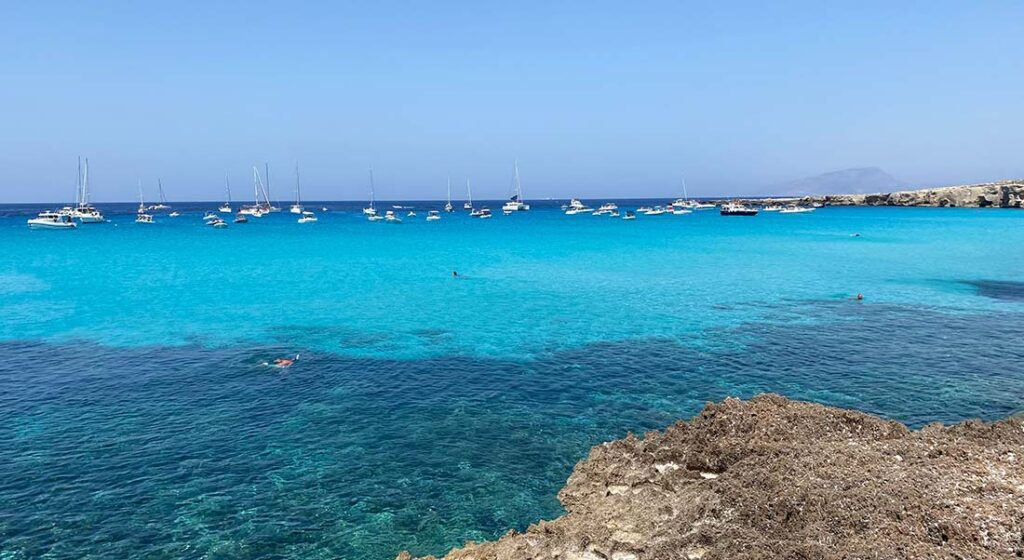
When I think back to my Sicily itinerary, the stop that makes me most nostalgic for the trip is Favignana, a small island off the coast of Trapani. The largest of the Egadi Islands (which also include Levanzo and Marettimo), Favignana can be visited as a day trip from Trapani, but on my next visit to the area I will be sure to stay for at least two or three nights. It’s just that amazing!
If you’re just taking a day trip to Favignana from Trapani, you can pack light. I wore a swimsuit under shorts and a tank top, and packed a tote bag with my boat tickets, a bottle of water, some cash, photocopies of my ID, water shoes, sunglasses and sunscreen. I left my passport, credit cards and most of my cash back in Trapani.
I’m not a confident cyclist, but I took the plunge and rented an eBike from one of the shops at the port. I looped around the east side of the island, visiting a number of famous beaches, but I ultimately returned to Cala Rossa (shown in the photo) for most of the day. It had the most beautiful, crystal clear water I’d ever seen and it was perfect for swimming.
#8 – Palermo

I made a terrible Italy travel mistake when booking my accommodation in Palermo. I chose a B&B with great reviews, but that was too far outside the historic center (down by Castello della Zisa) and poorly served by public transportation. When the temperatures hit forty-five degrees Celsius during my early-August visit, I could barely muster up the energy to walk to the nearest supermarket, much less all the way to the center.
If I was going to return to Palermo, I would stay right in the historic city center. I would probably start my search with Le Cupole if I was on a budget, or Hotel Principe de Lampedusa if I wanted to splurge a bit more. Both have great locations and great reviews.
Things to Do in Palermo
- Palermo has a lot of beautiful churches . However, unlike in Rome where you can walk freely into magnificent, world-famous churches like Saint Peter’s Basilica, it feels like every church in Palermo nickel and dimes you for an entrance fee. If you do pay to go inside, save your ticket as it often gives you a discount at the next church you visit.
- For me, the one church that was worth the admission price was Santa Caterina . The interior of the church itself is stunning, and a combined ticket gives you access to a number of vantage points on the upper level, as well as the historic monastery itself. Like Santo Spirito in Agrigento, the nuns here also prepare indulgent pastries and sweets that visitors can purchase.
- As you walk through the historic center you’ll also pass the Cathedral , the Quattro Canti (the Four Corners) and the Pretoria Fountain (pictured above).
- Although Palermo is famous for its street markets , I wasn’t particularly impressed. If you want to visit a street market in Sicily, I would recommend the fish market and surrounding streets in Catania instead.
Palermo Restaurant Recommendations
- Sicily is only 140 km from Tunisia, and the North African influence can be found in both the architecture and the food. Kus-Kus serves tagines (kind of like North African casseroles, you could say) with couscous (tiny pasta). I had their vegetarian couscous dish with hearty vegetables and flavorful broth, and can recommend it for anyone looking for a break from typical Italian dishes.
- There was one day in Palermo where I almost reached my breaking point. It was forty-five degrees out, I’d walked from my B&B into town, and then I’d walked to two restaurants that had good online reviews, only to find them both closed (despite their listed hours). I was ready to faint when I found Cuma , a restaurant focusing on healthy dishes like salads and poke bowls. The staff practically had to resuscitate me, but they did it with a smile! Poke Hawaiian Taste had a similar, but more limited, concept, and I also visited them for a salad one evening.
- Outside of the touristy area, but not impossibly far from the centre, Sapurito is a pizzeria and restaurant popular with locals. I had a lovely veggie pizza and glass of wine on their front terrace on my last evening in Palermo.
Keep reading for two great day trips from Palermo: Monreale and Cefalu.

#9 – Day Trip to Cefalu

Cefalu is an easy-peasy day trip by train from Palermo. The trip takes about an hour and is served by regional and intercity trains (I highly recommend the intercity trains as you can reserve a seat, while the regional trains can easily fill to standing room only during the high season). Once you arrive, it’s a short walk (less than ten minutes) to the beach, where there are free stretches of sand for the public, along with lots of sun chairs and umbrellas for rent from the beachfront bars and restaurants.
The water here can be quite rough. In fact, the beach was red-flagged for almost the entire day that I was there, with waves similar to those shown in the photo above (I went to add my own photo to the post and I realized I’d accidentally caught someone changing on the beach, so I decided to protect their modesty and use a stock photo!). If you’re not able to swim and don’t feel like suntanning, you can still explore the town’s attractions, including the beautiful Duomo (you can see its towers in the photo) and, rather funnily, the historic medieval laundry facilities (which are free to enter).
For lunch, I recommend Tatiana Melfa Bakery , where they have a surprisingly American-inspired menu (including veggie burgers and a scrambled egg breakfast… exactly what I’d been craving after eating so many brioches with gelato for the past three weeks!). On the way back to the station for the train ride home I detoured to L’Angolo delle Dolcezze , a gelateria popular with locals who flock to the little shop on the corner for creative, seasonal flavors. On a hot day you may have to queue, so leave yourself enough time!
Travel back to Palermo on the train and then onward to your next destination.
#10 – Day Trip to Monreale

From Palermo, it’s easy to travel to the hillside town of Monreale and its UNESCO World Heritage Site cathedral. I wrote an entire guide to the bus from Palermo to Monreale so that you’d have the most up-to-date information about bus stops, bus times, tickets and what to do when you arrive in Monreale. I recommend spending half a day in Monreale, and timing your trip to avoid the early-afternoon cathedral closure.
Travel back to Palermo on the bus and then onward to your next destination.
Sicily Itinerary Without a Car – Recommended Schedule
I followed this Sicily itinerary over about three weeks. Here is exactly how long I spent in each stop, and what I’d do next time:
- Catania – Three nights • Just right
- Siracusa & Ortigia – Three nights • Just right
- Noto – Day trip • Just right
- Taormina – Two nights • Either add a day (making one full beach day and one full town day) or eliminate entirely to add more time elsewhere
- Agrigento – Two nights • Just right
- Trapani – Three nights • Just right (when including a day trip to Favignana)
- Favignana – Day trip • Major regret! Stay at least one night!
- Palermo – Four nights • Move one night to Favignana
- Cefalu – Day trip • Just right
- Monreale – Day trip • Just right
- Overnight train to Rome – One night • Fixed duration
Should You Travel Around Sicily Without a Car Hire?
Absolutely!
Personally, I kind of went into Sicily without much of a plan, and I was so impressed by how well everything worked out for me, even without a car. It was so easy to get around and to find the things that I was looking for. Prices were generally quite low (outside Taormina) and even as a solo traveler I felt like I was getting a good deal on accommodation and dining out. If you’re able to visit in the shoulder season (April to mid-June, September and October) then you’ll get even better deals and encounter even fewer crowds.
Looking back, I am so glad that I chose Sicily as my Italian travel destination, and that I took the risk of managing the itinerary without a car. I can’t wait to return (seriously, I’m already thinking ahead to next summer and checking out apartment rentals on Booking.com)… maybe I’ll see you there!
Have you been to Sicily? What was your favorite spot on the island? Let me know in the comments!
(And of course, you can always ask me any Sicily travel questions in the comments too!)
Dreaming of Sicily? Pin this post for later!
Palermo to monreale by bus | how to visit monreale without a tour, how to get a pcr test in rome, italy for international travel, you may also like, the perfect jaipur itinerary for three days in..., the best things to do in cascais (a..., where to stay in calgary, canada – the..., is madrid worth visiting an honest traveler’s perspective, one day in barcelona, spain – an easy-to-follow..., what is the best time to visit the..., barcelona to paris train – tips for traveling..., visiting the alcazar of segovia – 10 things..., how to use the calgary transit app, the best places to visit in mumbai in....

Delightfully Italy
The insider's Italy travel guide for independent travelers

Perfect 7 days Sicily itinerary, by car or by train
Explore sicily with this optimized 7 days sicily itinerary. get an answer to your questions about sicily with my sicily travel guide and discover sicily top sights..
This 7 days Sicily itinerary gives you the possibility of discovering Sicily essentials in just one week. You will explore gorgeous Palermo, have a wine tasting in Erice, learn about salt-pans in Marsala, uncover ancient Greek temples in Agrigento, wander the ancient streets of Syracusa, climb the Etna Volcano and unwind in gorgeous Taormina. And, of course, enjoy the gorgeous and unique culture and gastronomy of this beautiful Island!
Sicily is still an off the beaten path destination for mainstream touristic flows, who focus on “the continent”. But if you love Italy culture, sights and life style, you simply can’t miss Sicily. A visit to Sicily could actually be a trip on its own, as well as a second or third visit to Italy.
So happy Sicily itinerary!

Do you feel uncomfortable planning your Sicily trip on your own? No problem, I’m here to help! Just have a look at my Italy Travel Advice page!
Page Content
- Why should you come to Sicily?
How many days do you need to visit Sicily?
How do you get to sicily, what is the best time to go to sicily, can you visit sicily without a car, day to day sicily itinerary, sicily travel guide, why should you come to sicily.
Sicily is simply gorgeous, and one of the most peculiar Italian regions in terms of history, sights and culture. Here you can find remains of Greek, Roman, Arab, Norman, French civilization. All left their mark and helped carve a unique culture and mindset, that you wont find anywhere else in Italy. So here are the main reasons in my view to come to Sicily.
1 – Culture and sights : in Sicily you will find the best preserved ancient Greek temples and theaters, amazing Roman and Byzantine mosaics, medieval palaces and churches, Arabic monument, Barocco palaces… and much more!
Sicilian nature is no less impressive: untouched countryside, gorgeous coasts, hidden gorges and lakes, and the highest active volcano in Europe won’t disappoint your hunger for beautiful and instagrammable views.

2 – True Italy : If you are hungry about the “real Italy”, you are likely to discover it here, in the many hamlets suspended in time, where old traditions and habits are still very present in day to day life. Something you could still find also in the larger city, especially in the traditional markets such as Palermo’s Vucciria or the ancient fish market in Catania. And it’s not uncommon at all to get caught in one of the many procession to honor local saints.

3 – Food and wine : thanks to its peculiar history, Sicily has developed a unique cuisine, mixing continental and Arabic tastes and fragrances, mostly based on fish and sea food. Thanks to the Sicilian sun and the fertile soils, Sicilian wines are among the best in Italy. Make sure you taste the one produced from the Etna volcano grapes, they have an unique mineral flavor.

4 – Beaches and islands : if you like beaches and sea, Sicily won’t disappoint you. Many gorgeous beaches here, like the Caribbean beach in San Vito lo Capo, and gorgeous islands such as the Aeolians, Lampedusa and Favignana. You could easily dedicate at least one week only to Sicilian beaches!

5 – Climate : being a Southern region, Sicily is extremely enjoyable all year round (well, maybe a little hot in July and August). It’s a perfect destination from March to May and from September to early October. During these months you could have the island to yourself!
Sicily is also getting more and more popular as a Christmas destination, due to the mild weather and the many Christmas traditions.
6 – Dolce vita : Sicily is a laid down, relaxed place. The perfect destination to take your time, unwind while sipping a local wine in a café, meeting locals, taste local food, read a book on a beach and enjoy your time. By the way, Sicily prices are much lower than in Central and Northern Italy.

That’s probably the weirdest question, since, like in most of Italy, you could probably spend one or to months on the island and still want more. Unfortunately most of us don’t have all that time so here are some options.
- 3-4 days: this is the minimum stay length in my view, barely sufficient to fly into Catania and visit Siracusa and Taormina. It could be a short but rewarding extention to a 2 weeks trip to mainland Italy
- 1 week: in seven days you can have a good glimpse of Sicily, and enjoy the essentials. You will likely not have much time to explore the islands and the northern part of the island (Cefalù). This is the idea behind this 7 days Sicily itinerary.
- 10 days: if you can add 3 days to your mainstream Sicily itinerary, you could dedicate time to explore the islands, with a day trip to Favignana from Trapani and a day trip / overnight stay to the Aeolian islands from Milazzo.
- 14 days: in 2 weeks you can explore the entire island, including the center. Cefalu and Piazza Armerina (amazing Roman mosaics) could be included in your tour. You can spend more time in the single places or dedicate a whole week to relax on an island.
The official Italian Tourism office site could give you some additional clue to plan your trip.

Low coast airlines, such as Easy Jet, Ryan Air, Volotea and similar connect Sicily with most of the large Italian cities. If you reserve well in advance and avoid peak periods, you could find surprisingly low air fares.
You can fly to Palermo or to Catania, an “open jaws” flight plan (such as: landing in Palermo and flying back from Catania) would allow you to optimize your itinerary.
In case you wish to visit the Aeolian islands, an interesting option could be to travel from Naples by boat, either by hydrofoil (6 hours) or by night boat, a very convenient solution if you are short of time.

The best time to go to Sicily is Spring (March-May) and Fall (September – October). During these months you could have the island all for yourself, with a lot of accommodation options and fairly low rates.
Temperature is mild and, especially in September and October, you can easily swim at sea, the water keeps pleasantly warm.
June and Beginning of July are also an option, perfect for beach stay even though more crowded.
Do avoid July and August, high season and very hot temperatures, This is when Italians go on holidays, and all the beaches are awfully crowded.
Yes you can, even though you would get much more flexibility with your own car. That said, you can travel in most of the main places by train and by bus.
The main trains you could consider with are:
- Parlemo – Cefalu (1:00 hour)Your 7 days Sicily itinerary continues with
- Palermo – Catania (3:30 hours)
- Siracusa – Catania (1:10 hours)
- Catania – Taormina (0:34 hours)
You can have a look at the Trenitalia web site for schedules and reservations.
Local buses are also convenient, such as on the lines:
- Palermo – Siracusa (3:30 hours)
- Siracusa – Noto (0:55 hours)
Here is the web adress of one of teh main local bus companies, Etna Trasporti.
In case you decide to use public transports to visit Sicily, add a couple of days to this 7 days Sicily itinerary to accommodate trains and buses schedules.
If you want to treat yourself, you could also get a private driver to drive you around the whole itinerary, or just some parts of it.

Sicily itinerary day one: land in Palermo, Palermo sight Seeing
Your 7 days Sicily itinerary starts with Palermo, one of the most interesting and history rich towns in Italy. Palermo, with its culture, history, food and energetic atmosphere has become a popular destination, full of charm.
The Phoenicians founded Palermo as a trade port in 700 BC, and a long string of rulers followed. Carthage was the first to conquer it, followed by the Romans, who named it Panhormus. After the fall of the Roman Empire, the Vandals took over, followed by Arabian rulers who turned Sicily in to an emirate. Palermo transformed in to a magical city with mosques, minarets and markets. It is said that its beauty measured up well with Cordoba and Cairo.
During the crusades, the city’s wealth was discovered by the Normans who conquered the city, but continued building on the Arabian legacy of tolerance and enlightenment. That era is known as “the Golden Years”.
Today you discover a city with an exciting mix of medieval areas where washing is still hung on lines between buildings to elegant residential districts with palm trees and palatial villas.
You could spend days wandering in Palermo ancient streets, discovering something new and exciting at each road turn. In one day, make sure you don’t miss the cathedral, the Palazzo dei Normanni and the beautiful mosaics in the Capppella Palatina, the Vucciria market, the beautiful Santa Caterina Church, the spectacular Piazza Pretoria and the remains of the Santa Maria dello Spasimo church. For a late evening on the beach, and to eat delicious food dishes, head to the Mondello beach, a few Km from Palermo. .
Sicily itinerary day two: Monreale e San vito lo Capo
Close to Palermo, Monreale hosts one of the most amazing Sicilian Jewels: Monreale cathedral and its byzantine mosaics.
The Cathedral of Monreale is one of the most beautiful churches in all of Sicily, a masterpiece of Byzantine art not to be missed, with its finest mosaics famous throughout the world and more than 1800 kg of pure gold used to tell the story of Christianity. Since July 2015 it has been declared a World Heritage Site by UNESCO, along with the Arab-Norman Palermo circuit.
These are the larger byzantine mosaics in Italy, even larger than the San Marco ones in Venice.
Legend says that in 1171 the Norman king William II, very devoted to the Madonna, was seized with sudden fatigue during a hunt and fell asleep under a carob tree. That sleep, besides restoring his tired limbs, was the source of an incredible revelation. In fact the Madonna appeared to him in a dream and revealed to him that right under that tree there was a treasure of inestimable value. When he woke up the king had the tree cut down, he dug deeply and when he was found the gold decided to have a church built in honor of the Madonna.

Leaving Monreale and driving west, you will get in a couple of hours to one of the most beautiful beaches of mainland Sicily: San Vito lo Capo.
San Vito lo Capo is renowned not for its Caribbean sea, but also to be the main place to eat the famous Cous Cous alla Trapanese, a local fish adaptation of the Arab cous cous dish. If you plan to be in Sicily end of September, don’t miss the Cous Cous festival , which takes place every year in San vito lo Capo.

Sicily itinerary day three: Marsala salt pans, the Valley of the temples and Ragusa
Your 7 days Sicily itinerary continues with the Marsala salt pans. They are among the largest in Europe and are a really amazing place to visit, especially if you are travelling with kids.
The Saline (salt pans) reserve extends between Trapani and Paceco and comprises a coastal strip of almost 1000 hectares. Much of the reserve, consists of privately owned salt pans where salt is extracted according to traditional techniques in use for centuries.
The many wind mills and the scattered salt mounds make the landscape even more impressive. July to September are the best months to visit, but the salt pans can be accessed all year round. As the sun sets behind the Egadi Islands, the entire landscape gets colored in red, orange and yellow in contrast to the white of the salt, offering a magical and unforgettable view.

When you are done with Marsala salt pans, proceed to Agrigento, where you will be able to admire the amazing Valle dei Templi.
The Valle dei Templi is one of the most extensive, representative and best preserved archaeological sites of classical Greek civilization, granted UNESCO World Heritage status in 1997.
The archaeological area corresponds to the remains of the ancient Akragas, the original nucleus of modern Agrigento. Along a long rocky scarp, chosen as the southern limit of the town, are still sited the great Doric temples dedicated to the gods.
Within the area of the ancient city there is also the Pietro Griffo Regional Archaeological Museum, which houses over 5.000 finds that illustrate the history of the territory from prehistory to the end of the Greco-Roman age.

Sicily itinerary day four: Noto and Siracusa
A UNESCO Heritage site, Noto is a destination not to be missed in your Sicily tour.

The original town (“Noto Antica”) was completely destroyed by the terrible 1693 earthquake (you can still visit its fascinating ruins, a few Kilometers away from the “modern” Noto).
Noto was then rebuilt from scratch, in the sublime elegance, originality and fantasy of the Sicilian Baroque style.
Noto is very easy to visit. Simply wander the length of the Corso Vittorio Emanuele, along which many of Noto’s most representative buildings stand. And if you feel lazy in a hot Sicilian summer day, have a tourist ride in a delightful APE (typical Italian motorized tricycle).
When you are done with Noto, drive to Siracusa, one of the highlights of your 7 days Sicily Itinerary.

Siracusa is an ancient town on the sea, which was of immense importance as Greek Syracuse. It has a superb archaeological zone and a lovely historic center on the island of Ortigia. This is where I suggest you to spend the afternoon.
Much of the island’s charm lies in wandering down narrow medieval lanes, past romantically-crumbling – or lovingly-restored – Baroque palaces and churches.
To head straight to Ortigia’s most attractive piazza, turn right and head for Via Cavour (which continues as Via Landolina), a narrow thoroughfare lined with restaurants and souvenir shops. At its end lies Piazza Duomo, an elliptical open space lined with harmonious and impressive buildings. Don’t miss the cathedral, built around an ancient Greek temple!

For a complete overview of the many things to do and to see in Noto and in Siracusa, have a look at my posts: Siracusa: Sicily at its best and Noto: Sicily baroque perfection
Sicily itinerary day five: Siracusa, Etna Volcano and Taormina
Wake up early and visit the archaelogical park with the impressive Greek and Roman remains. The Greek theater is particularly impressive and is still used to perform ancient Greek tragedies. If you are a fan of ancient Greece, the local archaeological museum is worth a visit.
Also interesting is the deep quarry to the east of the theater called the Latomia del Paradiso (Paradise Quarry) It’s a peaceful and green spot, filled with vegetation and lemon trees. The most famous sight here is the huge cave called the Ear of Dionysius (Orecchio di Dionisio).
When you have completed your visit, take your car and drive towards the mount Etna, the largest active volcano in Europe and in winter you can actually ski on top of it! You can just drive the road around it, or spend 3-4 hours to climb on top of it, a really exciting experience. In this post you can read more about mount Etna .

End your day indulging in Taormina main square, with a fantastic view on the Mediterranean sea.
Sicily itinerary day six: full day in Taormina

The overwhelming feeling of being on such a high ground, the breathtaking panorama and the fusion of nature and art at its best have made Taormina an exclusive travel destination. And definitely one of the highlights of your 7 days in Sicily itinerary!
A former Greek settlement, the city was then conquered by Romans and Byzantines and the splendor of that golden Era has lasted throughout the years. Here in fact, the beauty of the nature has been enhanced by human hands and culminated in the Greek Amphitheater which dominates the scenes.
The vibrant center of the city is Piazza IX Aprile, beautifully adorned by the 17th century Sant Agostino and San Giuseppe´s churches; once you cross Porta di Mezzo (literally “middle door”), you will enter the ancient part of the city where the Clock Tower was erected over 300 years ago.
The quaint Corso Umberto I is the main road that runs through the whole city, which, with a myriad of shops and restaurants, will lead you from the city center to Porta Catania and the magnificent Badia Vecchia.
Taormina is not only a captivating historical site – it’s beautiful coastal line, its marine grottoes and faraglioni (rocks) have enchanted numerous generations and they are only a cable way ride away from the city center.
The medieval town can probably be walked within one day and, despite its tiny area, this little gem located on the East coast of Sicily has a unique charm that has an enchanting force on travelers.
The lovely historical center with its white, tiny houses, the beautiful Corso Umberto I with its shops and traditional Sicilian restaurants, the crystal water beaches and the numerous solutions for a day trip in the Sicilian surroundings are some of the ingredients that make the so called “pearl” of the Ionic Sea so unique and charming.
And of course, last but not least, the Greek theater and it’s amazing view on the Etna volcano, arguably one of the most iconic Italy views.
For a complete overview of the many things to do and to see in Taormina, have a look at my posts: Taormina in one day.
Sicily itinerary day 7: Catania and flight to your next destination
Catania, like other Sicilian cities, it has been heavily influenced by its rulers – Romans, Arabs, and Normans to name a few. The largest impact came from its neighbor, the volcano Etna – when it erupted in 1669 it devastated the city and killed 12,000 inhabitants. Catania was rebuilt in the Baroque style preserved to this day, complete with large boulevards and squares.

Over the last few years, tourism has become one of the biggest sources of revenue. With the sixth largest airport in Italy, Catania is a natural hub for tourists travelling to the island’s east coast. It is easy to take day trips from here to the spectacular Mount Etna, to the ceramics centre of Caltagirone, and to the picturesque mountain villages like Randozza and Linguaglossa.
Catania boasts a plethora of incredible cultural sights. Pay a visit to Piazza del Duomo, marvel at the splendid Catania Cathedral, and walk down the historic Via dei Crociferi (named a UNESCO World Heritage Site).
Catania airport is just a few kilometers from the town. Give back your car and fly towards your next destination.
Enjoy Sicily!
Like Delightfully Italy? So why don’t you support it!
All you need to do is to use Booking.com by clicking on the banner below to book you next trip to Italy or anywhere else. Plus you’ll get the best deal on accommodation available anywhere!
Booking.com
Share this:

- Share on Tumblr
- Skip to primary navigation
- Skip to main content

Esplora Travel
exclusive cultural, expert-led small-group tours

Sicily by train
New for 2022 – available to travel september – november.
Just a few years ago, touring Sicily by train would have been unthinkable. But with ultra-modern rolling stock, a convenient timetable and affordable prices, travelling Sicily by train has suddenly become appealing. It allows you to travel independently, meaning you can choose arrival and departure dates to suit. And we can also tailor the route to your interests.
In addition, there are none of the stresses and headaches associated with driving in Sicily: you don’t have to worry about navigation or picking up a parking ticket or speeding fine. And you don’t have to worry about returning the car in good condition.
In addition, journeying by rail is cheap and an eco-friendly way to travel.
Of course, there are some parts of Sicily which are not accessible by rail, and others where the track is still slow. But the majority of the routes are excellent. So don’t leave it to chance, count on our expertise and knowledge of Sicily to organise your holiday.
Below is just a sample itinerary:
If you would like us to give you a detailed quote just fill out the form below and we’ll get back to you within 48 hours.
Explore more.

- Tour Account ›
- Travel Forum ›
- Travel Forum
Sicily by train
We need some help with planning our 3 week trip to Sicily in May 2020 as we want to travel by train only. A true rail holiday, preferably no bus journeys. Any tips, do's or don'ts, and suggestions are more than welcome. We also would love to hear about hotels near railway stations as we will travel with (light) luggage. We fly into Palermo and want to build our itinerary from there.
Depending on where in Sicily you'd be traveling, the train is not necessarily the best option because the station is not centrally located and there would be quite a bit of walking to get to the center (e.g. Taormina, Noto, etc.). I think the best way to get to Monreale is by bus, and there is great bus service crossing the island from Catania (Airport). So my recommendation is not to write off the bus altogether. For me, they were much more pleasant than the slow, old local "Regionale" trains. Caveat: I traveled in southeastern Sicily only, but I don't believe there are modern, high speed trains anywhere in Sicily.
You absolutely should not attempt a 3-week trip to Sicily and limit yourself to trains only. There are many places you cannot reach by train. Here's a schematic map of the railway lines in Sicily. I hope it's accurate; it fits with my vague recollection of the situation at the time of my 2015 visit. My advice is to dig into guide books; Rick's first guide book to Sicily was released recently, and he is always really good on logistics. Figure out what you want to see, then delve into the best way to get there. Don't omit great destinations just because you need to take a bus.
Even when rail service is available, it may be much slower than a bus and you may have fewer departure-time options. Buses are heavily used in Sicily, and they were reliable for me once I obtained the schedules locally. It was not easy in 2015 to find the schedules online. Whatever you think is accurate before you leave should be verified once on the ground in Sicily and reconfirmed at the departure bus station for each trip. One thing several of us have discovered is that there are few buses on the road on Sundays and holidays, so keep that in mind as you lay out your itinerary. Schedules can be different on non-school days, so the academic calendar makes a difference. I have no idea whether there is any sort of school break in May.
Off the top of my head, these are places not reachable at all by train: Monreale, Noto, Piazza Armerina (for the Villa Romana del Casale), Selinunte and Segesta. I used buses to get to some other places as well, because they were more convenient for me than the trains. As already mentioned, the nearest train station for Taormina is not actually in that town; it's called "Giardini-Naxos". You either take a bus to Taormina from whatever is your origin, or you take the train to Giardini-Naxos and then the frequent local bus that goes up the hill.
Three weeks in Sicily and we never saw one train. I know they exist but they are not prevalent like buses. We found a rental car the beat way to tour Sicily.
I agree with the previous posters.
I spent 3.5 weeks in Sicily last Spring, and only took a few trains, and multiple buses to get to my destinations.
I’d suggest getting a couple of guidebooks to help you figure out where you’d like to go.
Here’s my trip report if you’re interested.
Happy planning!
Thank you for all your replies, they are so much appreciated. We realize that the train is not the best travel option for a number of destinations in Sicily, so we will look into the bus schedules as well. I hear travel on a Sunday is difficult, so we'll need to keep that in mind too. We're planning to stay 3 nights in Palermo and then stay 1 or 2 nights in Cefalu. We want to travel by ferry from Milazzo and stay on one of the islands for a couple of nights. Then visit Catania, mount Etna, Taormina, Siracusa. And then on to Noto and Agrigento, Selinunte, Marsala and Trapani. And back to Palermo. Or would it be better to travel counterclockwise ?
Traveling counterclockwise worked best for my itinerary.
This was my itinerary: Milan > Palermo (day trips to Cefalù & Monreale) > Trapani (day trips to Segesta, Erice and Favignana) > Agrigento > Piazza Armerina > Siracusa (day trip to Noto) > Milazzo > Lipari > Acireale (day trip to Taormina) > Milan > home.
If you chose to travel counterclockwise, do plan to fly out of Catania so you don’t have to backtrack to Palermo.
Hi, MaryAnn,
I also traveled counterclockwise, and spent two weeks in Sicily, this past April, 2019. We landed in Trapani (yes - there are several direct flights from Rome every day, for about the same price as the flights to Palermo). We used Trapani as a base to visit Erice and Segesta. Next: one-day private transfer to Palermo, with stops at the Marsala Salt Flats and Selinunte. Palermo was a base to see Monreale (skipped Cefalu). Next: Train to Agrigento for two nights. Next: Private transfer to Ortigia/Siracusa with stops at Piazza Armerina (for Roman mosaics and the archeological museum) and Caltagirone (for ceramics shopping). Three nights in Ortigia and flight back to Rome from Catania. If you absolutely must travel by train only, and skip all buses, please consider using local buses for day trips (like to Segesta from Trapani or Palermo, and to Monreale from Palermo). You can travel by train from Trapani to Palermo, but it takes all day instead of 3 hours or so. You can travel Palermo-Cefalu-Catania-Taormina-Siracusa by train, but the train does NOT go all the way around the island in a way that would get you to Agrigento. Also, as noted above, many of the train routes are very slow and very occasional. My research for a Dec/Jan trip coming up soon has us taking a bus from Palermo to Siracusa. It will take about half the time, and runs on a much better schedule, than does the train.
Here's our trip report from a few months ago (April 2019):
https://community.ricksteves.com/travel-forum/trip-reports/sicily-trip-report-april-2019-2-weeks-2-sisters-part-1-trapani-erice
Gosh, we are spending thirty days next spring and renting a car. Yeah, don't drive in Palermo but there are places trains don't trek and you will spend extra time on busses. Rent a car.
This topic has been automatically closed due to a period of inactivity.

30 Super Useful Sicily Travel Tips for First-Time Visitors
Visiting Sicily for the first time? You will love it! To make your trip absolutely amazing, here are my 30+ super handy Sicily travel tips you need to know before embarking on the Sicilian adventure.
I travelled around Sicily twice so far (and I am pretty sure I will be coming back). During my two road trips (one and two weeks respectively), I got familiar with local culture, the best ways to get around, what to see, and also how to plan a great Sicily road trip .
Whether you are going for a day, a week, or a month, let me guide you through some practical travelling in Sicily tips, as well as share some inspiration on why you should visit Sicily.
In this Sicily guide, you will find the most important topics and questions answered about Sicily travel: when is the best time to go to Sicily , how to get to Sicily and the best way to travel around Sicily (public transport or driving), how many days in Sicily and which part of Sicily (east or west) to choose for nature, history and architecture, as well as insights into culture, food, and Sicilian lifestyle .
- Related reads: 21 practical tips for driving in Sicily stress-free .
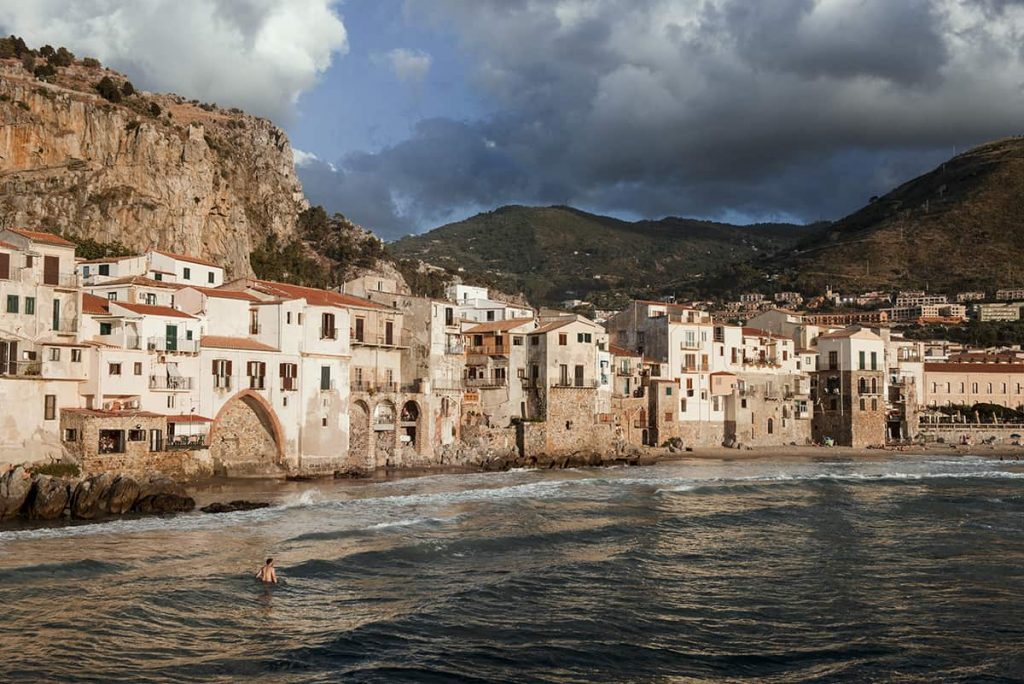
Disclaimer: This post contains affiliate links, which means that I may earn a commission if you make a purchase by clicking a link (at no extra cost to you). This helps to keep my blog running and growing by creating more awesome free content for you.
30+ essential tips for travelling in Sicily: plan your perfect visit
Sicily travel essentials.
- My TOP TIP : The best way to explore Sicily is self-driving. Rent a car at the best rates at Discover Cars .
- Best flight deals: Use Skyscanner to find the cheapest and fastest flights to Sicily from your location.
- Sleep: find your perfect accommodation in Sicily on Booking.com .
- Peace of mind: always remember to get travel insurance to be on the safe side. Get a quote at World Nomads or SafetyWing .
- Local SIM Card: Get a tourist pack of local data and calls at TIM or Vodafone. Advisable to purchase from a local store in town as airport costs are much higher.
- Learn Italian: take a fun interactive online course Rocket Italian which will help you learn spoken and written Italian language quickly. Study at your own pace either on a desktop or using a mobile app, lifetime access, and a free trial available upon signing up.
GETTING TO KNOW SICILY
1. there is italy and then there is charismatic sicily.
Kicked by the toe of mainland Italy, the volcanic island of Sicily developed its own identity with a distinct character. Sicily has delightful mischief that you won’t find anywhere else in Italy.
Sicily, although part of Italy, could easily be a country on its own (historically it used to be the Kingdom of Sicily before it became an autonomous region of Italy). Locals proudly call themselves Sicilians and even get offended if you refer to them as Italians.
Indeed, everywhere you go you will see Sicilian flags stretched between the balconies. Meanwhile, colorful Sicilian ceramics are a statement of Sicilian house decor. However, the most obvious way to understand Sicilian identity and witness the pride of being Sicilian is while interacting with locals.
We stayed in different parts of Sicily during our road trip. Every host we met was raving not only about how wonderful Sicily is but also pointing out that the area they are from is the best on the island.
And trust me, the way Sicilians describe their hometown will make you excited to explore it. We got particularly lucky in Palermo with our host Mario whose passion for the town and food made us fall in love with the underrated capital of Sicily.
In short, when the place has a distinct character and identity of its own ready to be explored, it makes traveling way more fulfilling than just scratching the surface of main tourist sights. And Sicily definitely has the charisma!
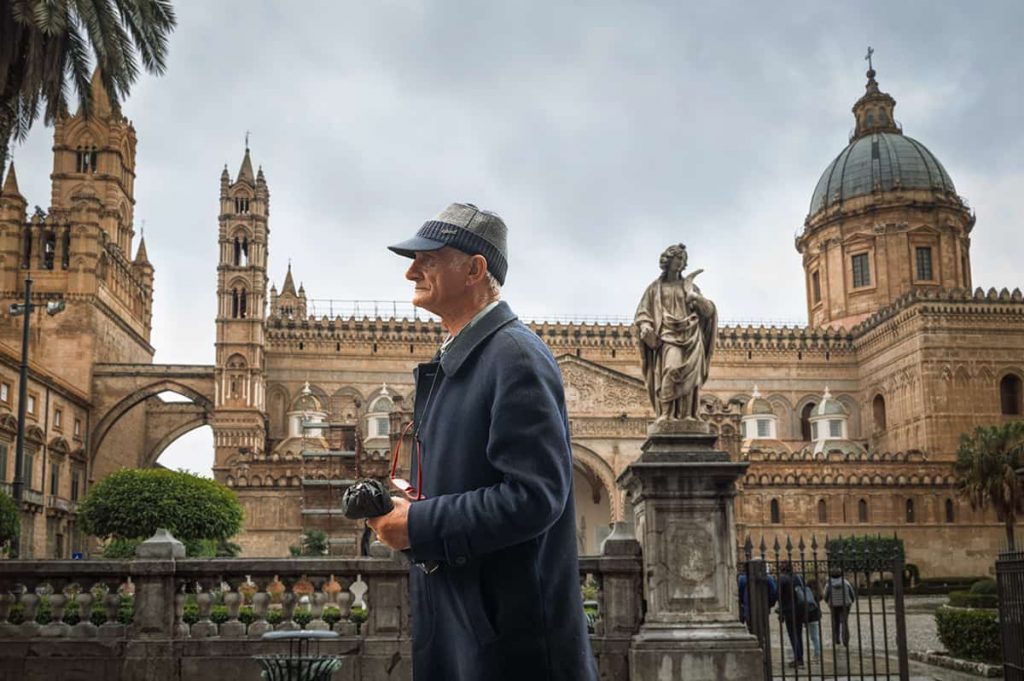
2. Sicily has some of the most diverse histories in Europe
Sicily has been invaded dozens of times by Arabs, Spaniards, Normans, Greeks, and Romans, to name a few major ones. Therefore, if you have an interest in history, discovering Sicily’s layered and diverse past through many remaining historical sites will definitely keep you busy.
Today’s Sicily is like a living museum, a historical artwork celebrating and commemorating some of the most powerful cultures and civilizations.
With a history that stretches over thousands of years, you will find out about the ancient Greek settlements in Agrigento and Syracuse, learn about Baroque architecture in Val di Noto, Roman cultural influence in Villa Romana del Casale mosaics, Arab and Norman impact in Palermo, as well as discover frozen in time medieval villages of Madonie mountains.
To sum up, Sicily is a perfect place to travel back in time and get acquainted with its turbulent history.
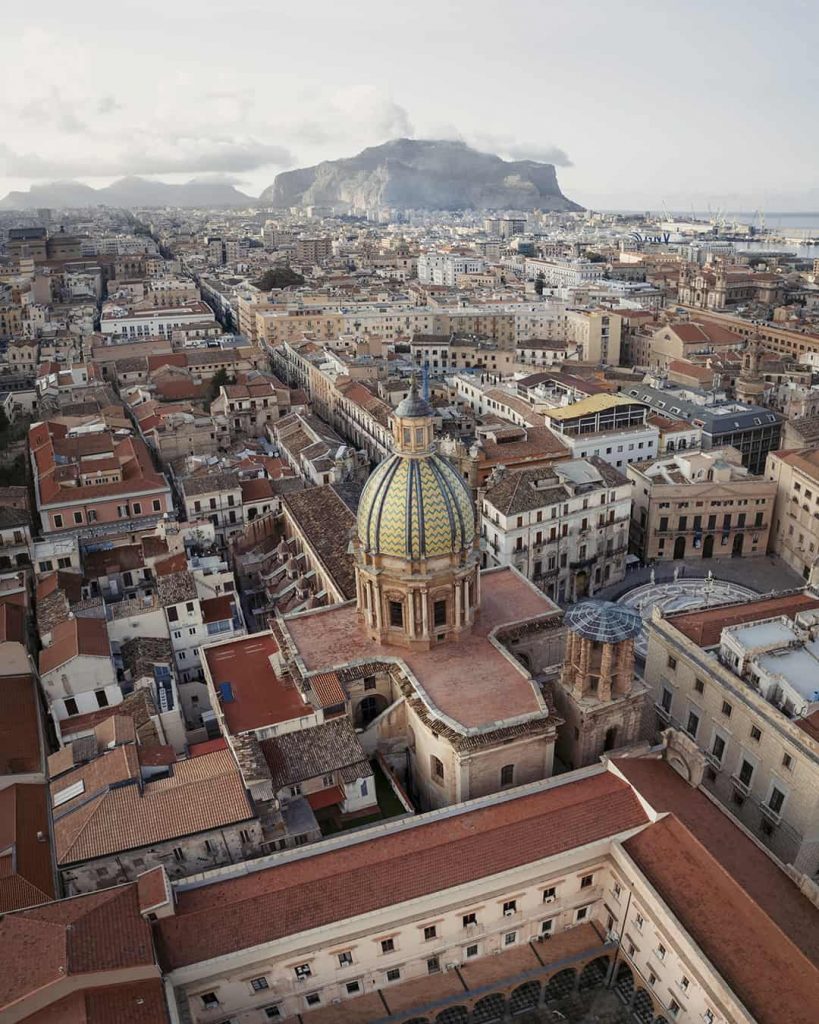
3. Is Sicily worth visiting?
Sicily is a must-visit place in Italy. You can expect to have a very different travel experience even if you have already been to other parts of the country.
You may already know that Italy is very diverse, with different regions having distinct landscapes, architecture, and even cultural nuances. But even if you have been all around Italy, and think that there is just so much more you can expect from yet another region, you will be pleasantly surprised how different from other parts of the country Sicily is.
Sicily can satisfy any kind of traveler as it has everything- fantastic beaches, nature reserves , mountains with hiking trails, some of the most impressive architecture (Syracusa, Val di Noto, Palermo), important historical sights like the valley of temples in Agrigento, frozen in time mountain villages of Madonie , and even wonderful low-key Egadi and high-end Aeolian islands you can easily catch a ferry to.
But above the scenery and cultural sights, Sicily’s highlight is the locals. To me, Sicilians appeared to be some of the friendliest people compared to other parts of Italy. Locals in Sicily are genuinely happy to see you and are very welcoming, curious, and outgoing.
- Make sure to also check my post about 21 must-visit places in Sicily .
- Find The most beautiful small coastal towns and fishing villages in Sicily.
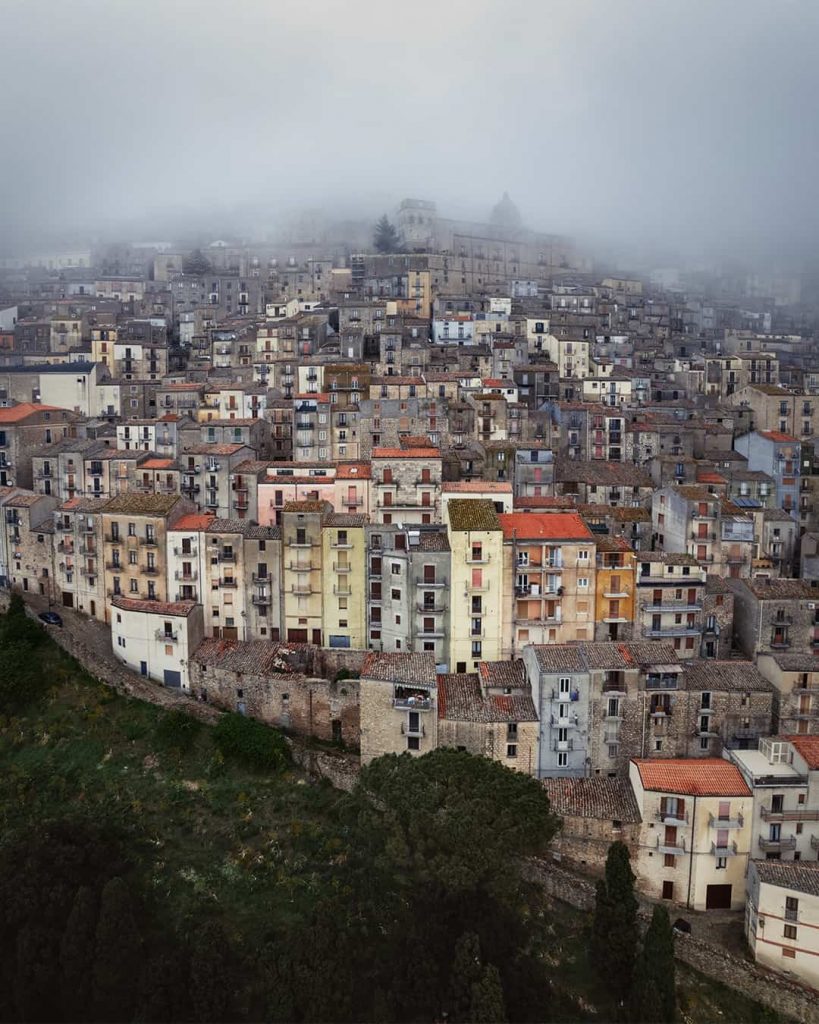
4. Is it safe to travel to Sicily – the birthplace of the Mafia?
Travelling in Sicily is very safe. From my personal experience everywhere we went felt extremely safe in Sicily. People are very welcoming, kind, and genuinely curious about travelers.
Leaving the luggage in the car was probably my biggest safety concern while road tripping in Sicily . Leaving bags in the car was heavily advised against on other travel blogs, but in reality, it wasn’t an issue at all. Of course, there is no need to irresponsibly display your digital camera, laptop, or wallet on the seat which could seduce some robbers. But even if you left some of your belongings in the back seat, it doesn’t mean someone will definitely break into your car.
The only place I was looking over my shoulder was when we walked in the Ballaro neighborhood in Palermo. Later on, however, our local host explained that there was nothing to be worried about. Apparently, Mafia owns many hotels and restaurants in the capital of Sicily. That means tourism is one of their main businesses and travelers are sort of looked after. Thus, small criminals don’t dare to touch a tourist.
Regardless, I would still suggest keeping your guard up in busy areas of Palermo as pickpocketing certainly happens. Just make sure to keep your wallet and phone somewhere safer than the back pocket of your jeans when walking in crowded areas of Palermo, or Catania.
WHEN TO TRAVEL TO SICILY
5. the best time to visit sicily-when should you go.
The best time to visit Sicily is from May to the beginning of June, and from September to the beginning of October. These are shoulder seasons when the weather is great both on the coast, in the towns, and in the mountains. Also, around these months tourists either haven’t arrived yet or already departed.
If you love beaches, September will be better than May as the water in the sea is still warm as opposed to slightly chilly late spring temperatures.
If you don’t care much about the beaches and swimming, and prefer cultural activities, like wandering UNESCO-listed towns and small villages, then any time of the year is a good time as Sicily has a pleasant island climate all year round. You might encounter some fogs and rain if you visit during autumn/winter. On the bright side, it may add to the mysterious atmosphere and interesting photography scenarios.
I would suggest avoiding July and especially August when the majority of Italians are on vacation. Prices of accommodation and car rental shoot up, while beaches and towns are packed with people- not the greatest time to travel to Sicily.
Nonetheless, if you only have summer months, you can still have a great time and pick some less visited places around the Island. Sicily has plenty of hidden gems waiting to be explored.
- READ MORE: Planning on hiring a car in Sicily? Here are my 21 Useful Tips for Driving in Sicily, Italy.
6. Go before it is too late!
Is Sicily very touristy? Yes and no, depending on which place and when you choose to go.
In recent years Sicily has definitely seen a quick increase not only in local but also in foreign tourism. The rough towns like Palermo which used to be considered a bit dangerous, are now completely tourist-friendly and adapted to serve the foreign visitor.
Meanwhile, even remote villages are slowly but steadily opening up cozy B&Bs and getting completely booked out during the peak season.
While many popular beach towns are packed with sun-seekers and local holidaymakers during summer, still there are enough places on the island where you can have an authentic Sicilian experience without crowds. But don’t wait too long, as with social media being so proactive, Sicily is getting on tourist radar pretty fast. Some of the seemingly remote places I have discovered on Instagram!
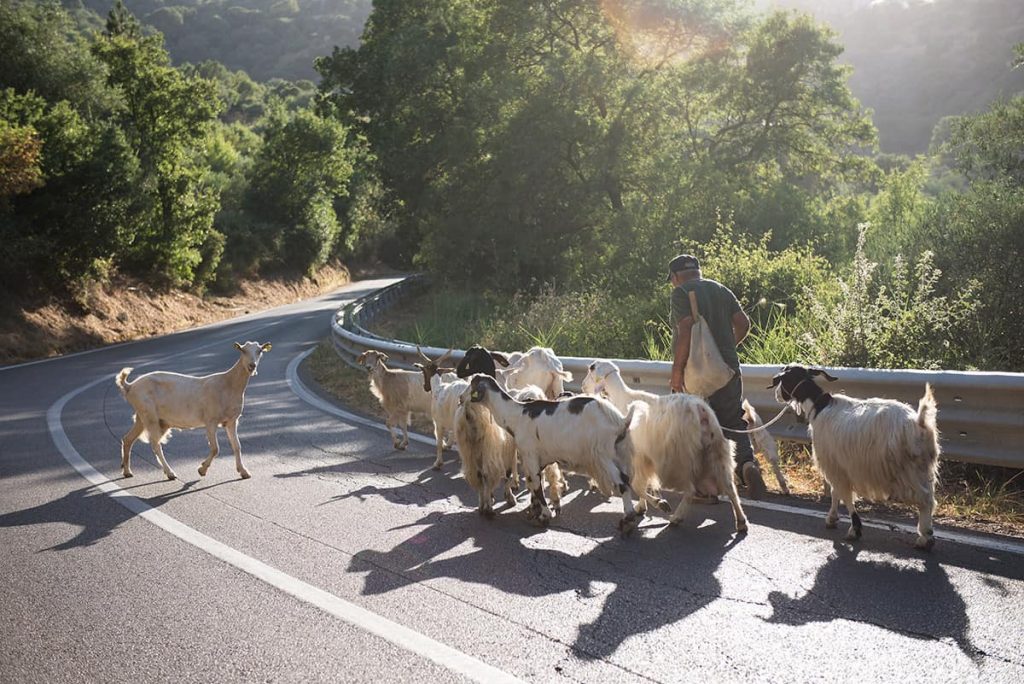
GETTING TO AND AROUND SICILY
7. three ways of getting to sicily: airplane, ferry, or train.
Sicily is an island separated from the mainland of Italy by the narrow strait of Messina. The good news is that Sicily is very well connected not only to mainland Italy but also to the rest of Europe and even other parts of the world.
Getting to Sicily by air
As expected, most travelers come to Sicily by air. There are 3 airports in Sicily-one in the capital Palermo in the West North, one in Catania in the East, and one in Trapani in the West of the island.
If you are flying from Europe, sometimes you can get insanely cheap deals to land in Sicily. Search for the best flight deals using KIWI flight search aggregator .
Getting to Sicily by ferry
Another also quite popular option to reach Sicily is taking a ferry, both nationally and internationally.
Nationally, the main places from where you can reach Sicily are Rome, Naples, Salerno, Genoa, and San Giovani in Calabria (southern Italy-the toe of the boot).
The overnight ferries from Naples, Salerno, Genoa, and Rome arrive in Palermo. Meanwhile, if you are traveling by land from Southern Italy, you can take a 30 min ferry from Villa San Giovani to the port town of Messina, Sicily. This is precisely what we did on our combined Sicily and Calabria road trip.
Internationally, you can reach Sicily from Malta and Tunisia.
Top tip: Ferries to Sicily also accommodate various vehicles. Therefore, if you travel by car, instead of driving long distances, you can “jump” onto the ferry.
- You can easily search for the ferry schedules from your selected departure place using the Directferries website.
Popular ferry routes to Sicily
- Palermo-Naples: 10.5- 11.5 hours; from 50 EUR one way (foot passenger); book tickets here
- Palermo-Rome (Civitavecchia): 14.5 hours; from 60 EUR one way (foot passenger); book tickets here
- Palermo-Genoa: 19.5-20.5 hours; from 45 or 75 EUR one way (foot passenger); book tickets here
- Messina- Salerno: 9-10.5 hours; from 52 EUR one way (foot passenger); book tickets here
- Messina- Reggio Calabria (South Italy) : 30 minutes; from 10 EUR one way (foot passenger); book tickets here
- Catania- Valletta (Malta): 4 hours 45 minutes; from 80 EUR one way (foot passenger); book tickets here
- Palermo-Tunis (Tunisia): 10.5 hours; from 85 EUR one way (foot passenger); book tickets here
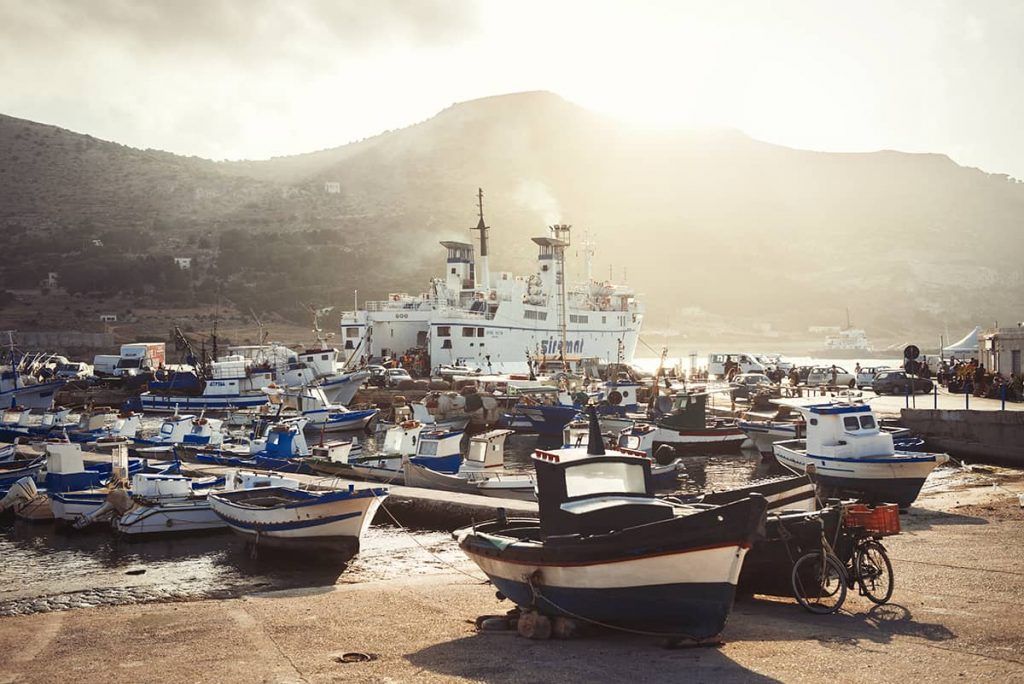
Getting to Sicily by train
The third way is taking a train from the mainland of Sicily. There are train departures from Rome (12 hours) and Naples (9 hours) to Palermo. The train also has routes heading to East Sicily and stops in Taormina, Catania, and Syracuse.
Question- how on Earth does this train get through the water? Apparently, there is a special ferry which transports, yes, the train! This could be an interesting and fun travel experience.
- You can find a train route and book tickets from Italy to Sicily using Omio train search aggregator.
8. Driving is by far the best way to explore Sicily
I am a huge fan of road trips, and Sicily is a perfect place to go on one (check out my 2-week in Sicily Itinerary ).
I am sure you have heard that driving in Sicily might be challenging, which is partially true (if you don’t know what to expect).
However, driving is by far the most convenient way to get around Sicily as you don’t have to rely on irregular and not frequent public transport schedules. Also, hidden gems are only accessible by car (well, in some cases by boat-like Favignana island ). Finally, you will be able to travel at your own pace and get from place to place much faster than with a train or a bus.
Therefore, I strongly recommend renting a car if you are planning to see more than just bigger towns like Catania or Palermo (those places don’t require a car).
Important: book your car well in advance to get the best deal! We booked 3 months ahead to secure a good deal (20 EUR per day). If you leave it to the last minute, chances are, the car rental rates will be much higher.
I found the best car rental prices for my road trip in Sicily with DiscoverCars.
Rent a Car in Sicily
Look for the best rates for your rental car at Discovercars.
9. Getting around Sicily with public transport
Public transport in Sicily connects main destinations and more popular tourist towns like Palermo, Catania, Agrigento, Taormina, Messina, and Trapani. If you are not willing to drive you might be able to find your way around using only busses, or trains. Also, you can join organized day trips to places like Taormina, Etna Volcano, and Agrigento.
When it comes to using public transport in Sicily, buses are known to be the most complicated to deal with. I have read stories of buses having completely unreliable schedules, lack of accurate timetables online, needless to say not the most frequent service.
All this makes travelling and planning your time quite tricky. Although, larger companies like Interbus are pretty good. However, regional buses, unless you have unlimited time in Sicily, you can forget about. More often than not, you will have to rely on asking around for accurate information when travelling between smaller towns.
I personally would avoid using buses, except if you are planning to get between main towns and are not going to explore beyond the main tourist destinations. Even some of those places do not always have a guaranteed regular connection.
Trains mainly connect the coastal part of Sicily but are not available for the inland due to its mountainous terrain. Trains as far as I have researched are quite efficient and run according to schedule.
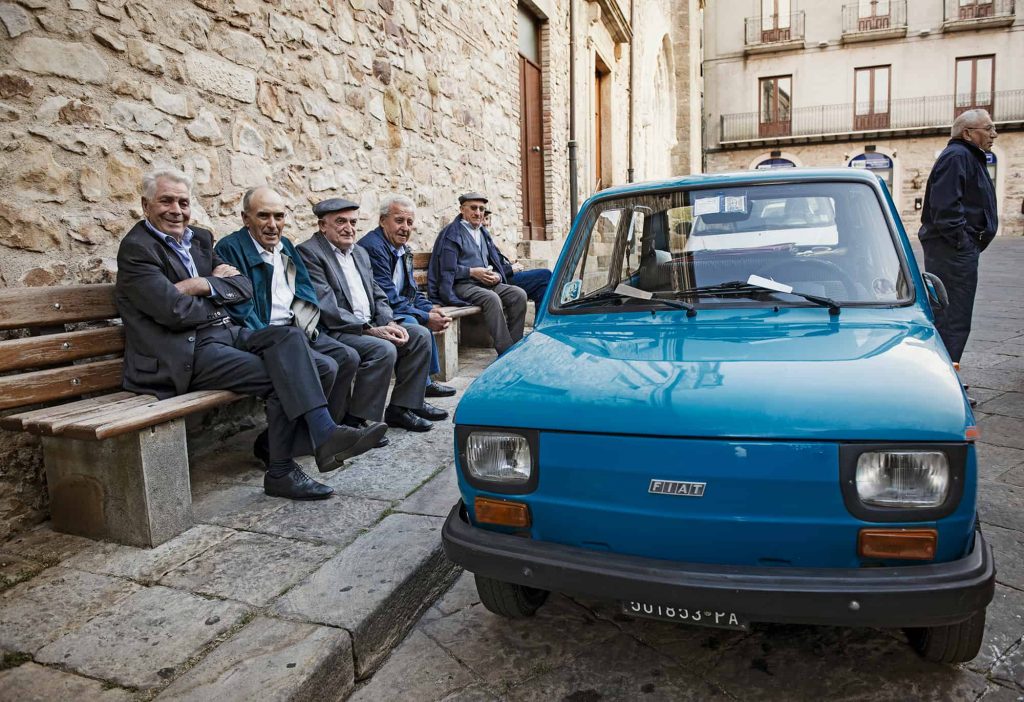
HOW TO PLAN YOUR SICILY ROUTE
10. how many days do you need in sicily .
You need at least 2 weeks and at least 5 different overnight bases to explore the whole perimeter of the island at a medium pace .
To see all the highlights plus some hidden gems of Sicily you will need at least 3 weeks, ideally a month. Having this amount of time, you can slowly drive all around the island discovering different parts of Sicily. Those would include beaches, mountains, archeological sites, baroque towns, fishing villages, Etna volcano and you can even squeeze in a trip to Egadi or Aeolian islands.
Do not try to see the whole island of Sicily in one week. Sicily is bigger than it looks at a first glance. Driving time from West to East of the island is around 4.5 hours.
Understandably, not everyone has a month worth of time to allocate for their vacation. Still, as a bare minimum, I would recommend 10 to 14 days in Sicily . However, you will have to be strategic about how and where you spend your time. You will definitely have to trim down the long list of places of interest in Sicily leaving only what excites you the most.
If you have only around one week in Sicily, the best is to focus on one side of the island. For example, highlights of the west and northwest part, or highlights of the east and southeast part of Sicily, depending on which airport you land at. Definitely don’t try to move all the way from west to east as you will end up spending most of the time in a car.
- Check my two-week road trip itinerary for inspiration and help to you plan your own vacation in Sicily.
11. Choose West Sicily and the hinterlands for a more authentic experience and wild nature
If you are landing in Palermo or Trapani, you are for a treat of wild beaches and nature, the unfiltered lifestyle of Palermo, sleepy Madonie mountain villages, and a slow-paced Favignana island. Western and Norther parts of Sicily are less touristy than the Eastern part. This means you will have a very authentic travel experience wherever you choose to go.

12. Choose East Sicily for Baroque and Greek architecture, Etna volcano, and famous archeological sites
If you are landing in Catania on the Eastern part of Sicily, then you are getting a treat of unparalleled architectural gems-Val di Noto baroque towns like Ragusa, the Greek amphitheater of Taormina, the valley of temples in Agrigento, spectacular Syracuse with Ortigia at its heart, and mighty Etna volcano which you can explore up close by hiking .
Note, that the Eastern part of Sicily is more touristy (due to its cultural wanders and a large number of UNESCO heritage sights which indeed made Sicily famous).
13. The best beaches in Sicily are on the northwestern side of the island.
If you are seeking the sun and going to Sicily mainly for the beaches, then head to the North West. Here, you can find crystal clear waters and some of the most spectacular beaches in Sicily.
The mountainous backdrop characterizes the northwest of the coast. There you will find a perfect natural combination of mountains and the sea offering an array of hiking and swimming activities in one place.
You can find exactly that in Lo Zingaro Nature Reserve . To me, it was the best nature spot with the most incredible beaches in the whole of Sicily.
If you love sandy beaches, then San Vito Lo Capo at the northwestern tip of the island is a place to be. If you are looking for great city vibes with a close-by beach escape then Mondelo beach is just 30min drive from Palermo.
Finally, Favignana islands on the West side of Sicily will surprise you will azure waters and wild beaches to lay your towel at. Read my post about visiting Favignana island for more details.
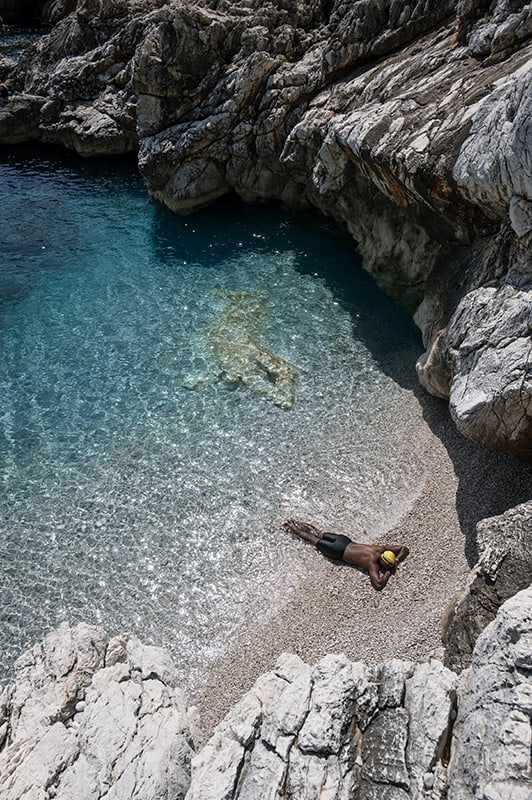
14. Mix up big cities, small towns, and the seaside for a diverse experience in Sicily
To get a real taste of Sicily, plan on visiting a mix of different parts of the island. To understand daily hustle and bustle as well as admire impressive historical buildings, aim for a few days in the biggest towns (Palermo, Catania, Ortigia Island in Syracuse), for the beach scene, go to smaller seaside towns (Cefalu, Castellammare del Golfo), you will find UNESCO listed Baroque architecture in Ragusa, Modica or Noto, for the important archeological treasures head to Agrigento, while for chilled island life- to Egadian islands, for raw nature – to Lo Zingaro Nature Reserve, and to get the sense of the frozen time drive up to medieval villages in Madonie mountains.
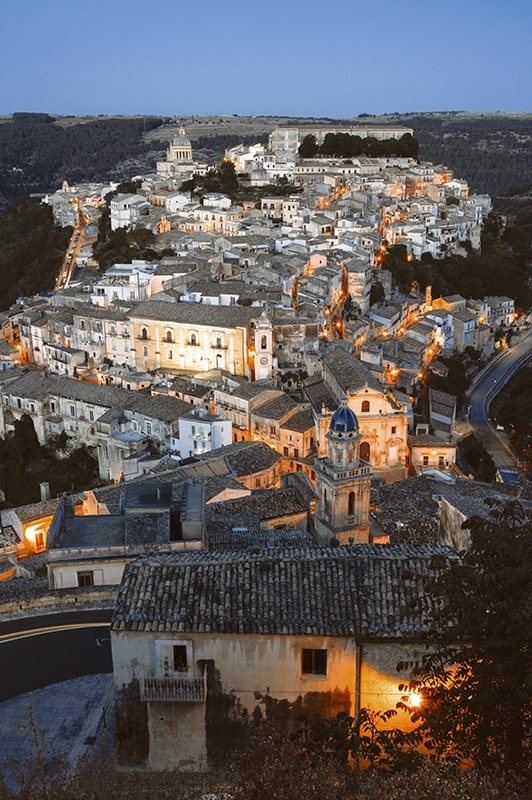
15. Get used to sweating up the hill-mountainous terrain of Sicily
Sicily’s climate and terrain can be very unforgiving in summer. It might become overwhelming if you are not used to almost African heat and hiking. Many Sicilian towns are located in mountainous areas. Getting from landmark to landmark on foot will require broken-in shoes, a hat for shade, lots of sunscreen, and good stamina. Indeed if you are planning to visit some of the small mountain tows, be ready to burn a few calories (which is great considering the carbs intake you will have while in Sicily).
ACCOMMODATION – WHERE TO STAY IN SICILY
There is no shortage of accommodation in Sicily. Depending on your budget, you can pick a room in a boutique hotel, stay in a dorm or in a fancy timeless hotel, rent a cozy apartment or opt for a homestay. Bigger towns like Palermo and Catania or Trapani will have all these options. Meanwhile smaller villages may only offer homestays and boutique hotels. In remote locations, you may not always find dorms in Sicily.
The only type of accommodation I have not seen (gladly) was monstrous seaside hotels. Okay maybe a couple of ugly ones in Cefalu were ruining the scenery, but they weren’t nearly as massive as the ones you can find in the UAE or Turkey, for example. And I hope it will stay this way.
16. Stay in homestays for the best local experience in Sicily
I always aim to support local small businesses when travelling, and one of the best ways to do so is to stay in a family-run B&B. Not only do you bring business to a local family but in return, you get more personal and warm treatment as opposed to the very formal approach in regular hotels.
Finally, Sicilians are very knowledgeable about their local area and they are more than happy to share some tips for sightseeing, the best places to eat, and sometimes they even cook for you!
For example, we were very lucky with our host in Palermo who was extremely passionate about his town and Sicily overall. He shared some insider tips, and fantastic stories about Palermo, and gave some great insights about Sicily. It enriched our travel experience and helped us understand the local culture much better.
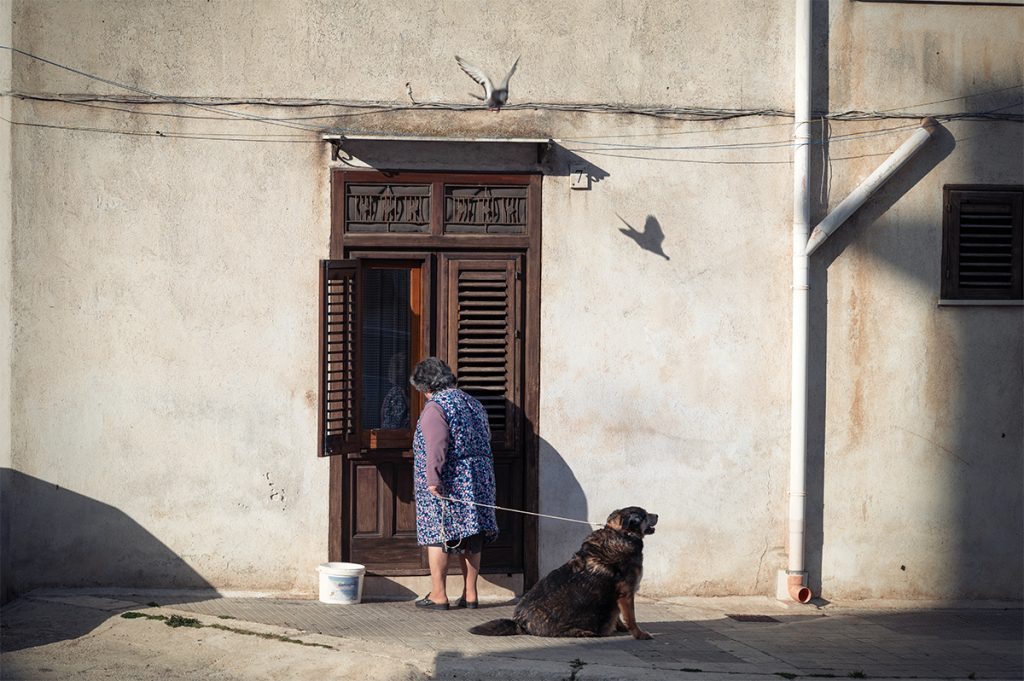
17. Book your stays in popular destinations in Sicily early in advance
Some of the towns in Sicily receive way more visitors than the others during the high season (July/August). Therefore, booking early is strongly recommended.
The most popular places which get booked out are Cefalu, Taormina, Syracuse and Ortigia, Favignana (Egadi islands), and Trapani.
For example, even at the beginning of May, accommodation in Cefalu seemed to be 70 percent occupied when I looked it up on the booking site. So I can imagine it can be pretty tough finding a place to stay in summer, let alone getting a reasonable deal.
Alternatively, if you are driving, there are countryside guesthouses called Agriturismo- those are usually fantastic family-run getaways not too far from the main towns.
Book Accommodation in Sicily
Look for the best rates and perfect places to stay on Booking.com
18. Make sure to check if the parking is available and is not in the ZTL zone
If you are driving, parking is one f the factors you will be making your decision about whether or not you should book a place. Often in towns like Cefalu, there won’t be any parking included in accommodations located in the historic center. Thus, you might have to look for a place to stay outside but close enough to the historic center.
Also, in case you manage to find a place to stay which offers parking in the historic center, double-check with your host if it doesn’t fall under ZTL (Zona Trafico Limitato) , which only permits registered vehicles. You can read more about sneaky ZTL zones in my post about driving in Sicily .
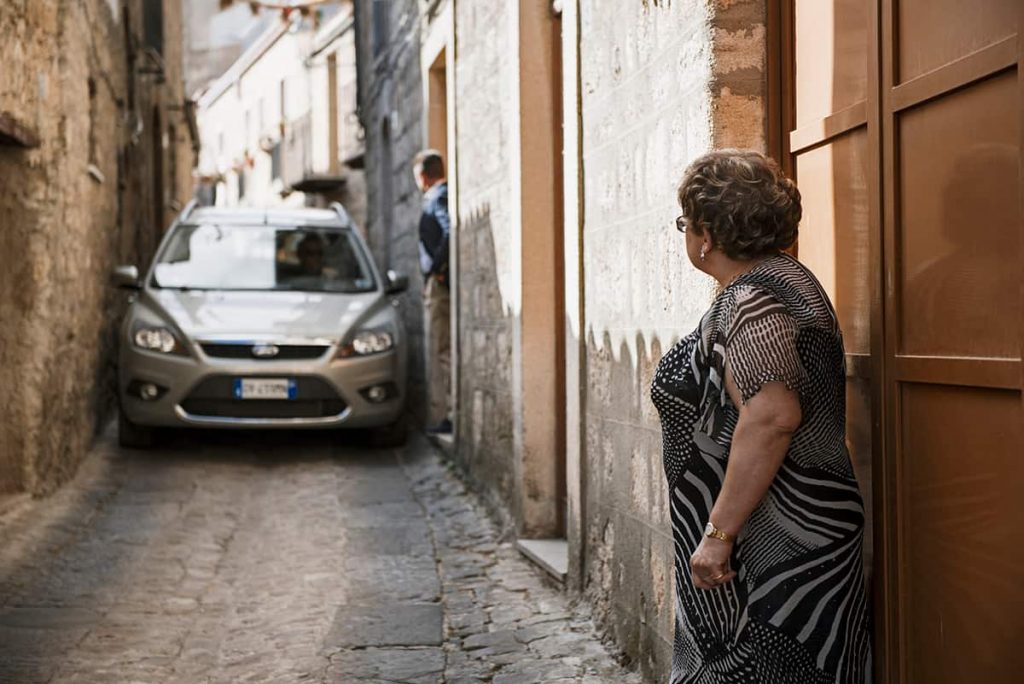
GETTING ACQUAINTED WITH SICILIAN CULTURE
19. travel to sicily just for food.
You could travel to Sicily just for the food. From the famous Pasta alla Norma , tuna burgers, couscous with fish, all sorts of arancini , pizzas to ricotta-filled pastries with cannoli being the king of all, brioche with ice cream, and many more- eating Sicilian specialties can keep you busy all day long. Just looking at the menu in trattoria you can quickly realize that Sicilian cuisine adopted the crossroads of civilizations. There are flavors from Europe and Africa on one plate.
Moreover, Sicily’s capital Palermo is worldwide famous for the best street food. Therefore, forget about fancy restaurants, and go try the fast food- it is fresh and delicious.
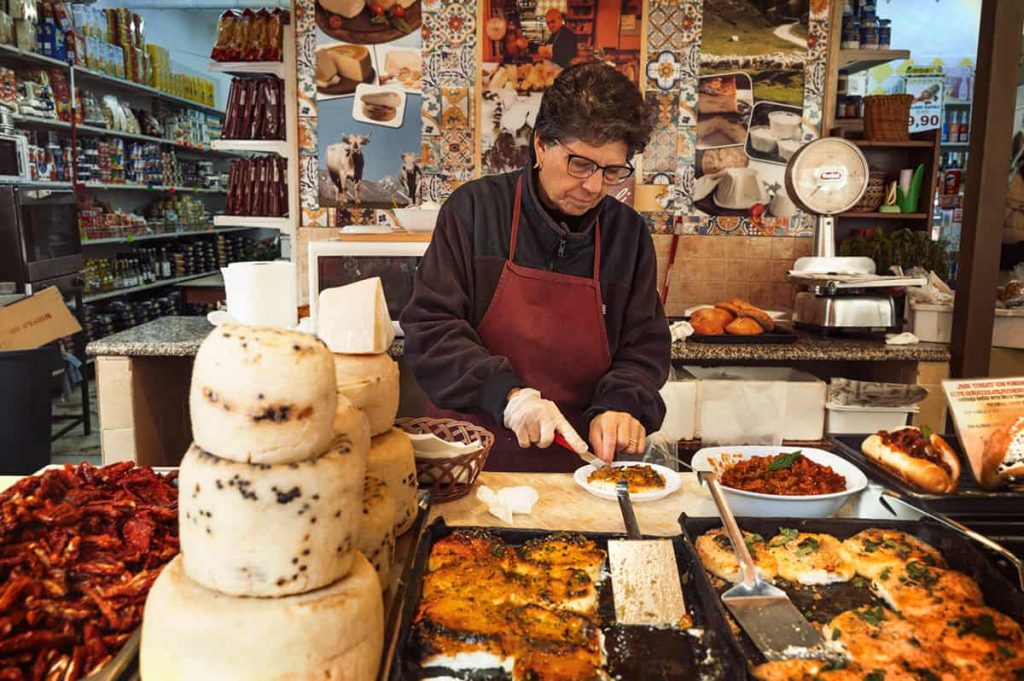
20. Breakfast is not the main meal of the day, but in Sicily, you can fuel up with ice cream in a bun
Sicilian breakfast (as common everywhere in Italy) is always sweet. But having ice cream in brioche is something unheard of and probably only to be found in Sicily.
I know that eating an omelet in the morning sounds bizarre to Italians, but come on, ice cream with bread?! This is whole another level of weird…
Nonetheless, this combination is a guaranteed energy boost and is extremely filling. I have tried brioche with ice cream but decided to stick to the regular pastry and coffee.
Note: when you see breakfast included in your accommodation booking, do not expect English breakfast with sausages and beans. Usually, you will only get coffee and pastries. On a rare occasion, you may find B&Bs offering some panini (sandwiches with ham and cheese). Continental breakfast is only common in bigger hotels.

21. Catch up on your sleep during riposo – understanding Sicilian time (aka siesta)
You probably have heard of siesta in south European countries. Unlike any other timing-related matters, Sicily is taking the midday nap very seriously.
Shops, museums, and restaurants close for so-called riposo or siesta at around 12-1 pm and re-open at around 3-4 pm or even later. Siesta’s starting time is always on the dot while the finishing time is sort of flexible.
Longer siestas are very common in smaller towns. We have struggled to find a place to eat lunch in Madonie mountain villages-everything was closed, and there was no live soul to be seen in the afternoon. Taking into account Sicilian summer heat, having a power nap in the middle of the day is probably the best thing you can do.
Sundays are usually days off and shops and museums, and even some restaurants are also shut for the whole day.
However, in bigger towns like Palermo and Catania, as well as touristy places like Cefalu, Taormina, or Syracuse you can find quite a lot of cafes and gelaterias, and casual eateries which are open during siesta hours and even on Sundays.
22. There is time for aperitivo and then there is time for dinner
Restaurants and trattorias usually open at around 6-7 pm, however actual dinner time is around 8-9 pm in Sicily and Italy. Therefore, it is recommended to reserve a table to avoid the disappointment of having to wait for an even later meal.
However, before heading out for dinner, you should not miss aperitivo which is a time between late afternoon and dinner when people head out for a drink and a small snack before they actually go to have a proper meal.
23. What is coperto – tipping culture and service fee in Sicily, Italy
Coperto (or servizio ) in Italy and also Sicily is a fixed service fee that you pay per person for being served at a restaurant. The amount you must pay varies from place to place but usually it ranges between 1-2 euros. Some more expensive restaurants may charge 2.5-5 euros for coperto per person.
The amount of coperto is usually indicated on the menu. It is a fixed charge and doesn’t depend on how much or little you eat or how long you spend at a table.
If I pay coperto , do I have to leave a tip?
If you love the service and food, the tip will be highly appreciated but it is not a must in Sicily, Italy.
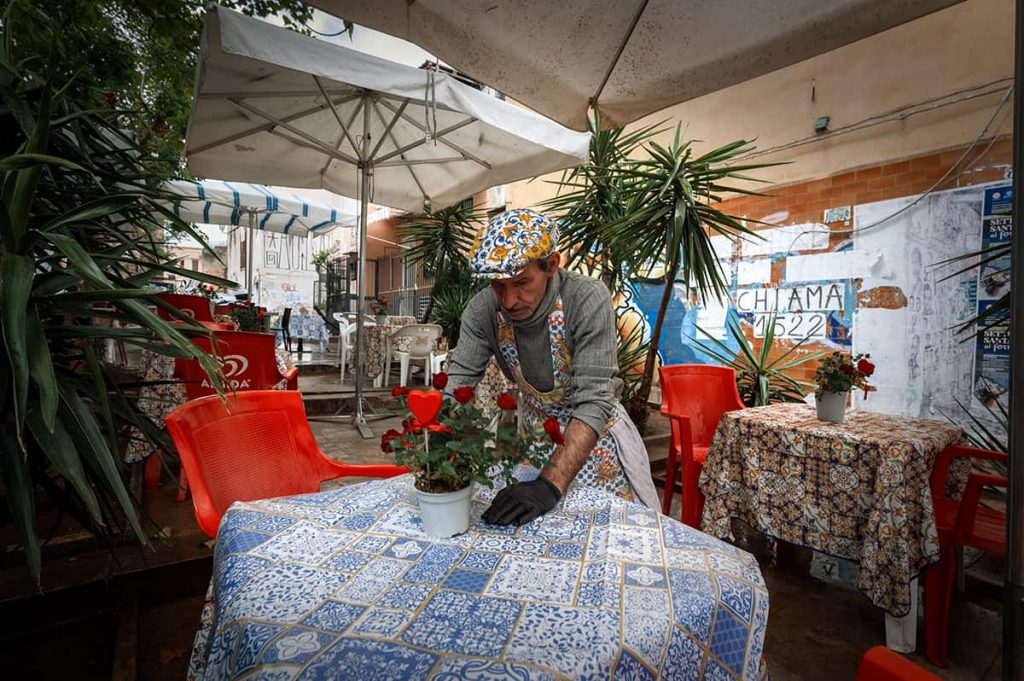
24. Coffee price at a bar vs at a table.
Note that you may have to pay coperto in some coffee shops/bars if you choose to have your cappuccino at a table rather than at a bar, as most Sicilians do. Most likely the cost of being served coffee at a table will range from 20 euro cents to one euro.
This doesn’t apply to all coffee shops though. Charging extra for a coffee at a table is more common in touristy and popular areas or famous fancy coffee places. For example, I have been to places in Venice, Rome, Amalfi Coast , and Naples where we had to pay extra for having our cappuccini at a table. Smaller and more casual bars and coffee shops do not collect this fee.

LANGUAGE AND INTERACTION WITH LOCALS
25. few italian phrases will go a long way but be ready for the sicilian language.
Sicilians barely speak English. Most of the locals don’t speak a word, especially in smaller towns and villages. I can count on my one hand fingers how many fluent English speakers we met on our road trip (when I think of it, probably only 3 or 4 people were very well versed in English and those guys were our hosts at the B&B). Nonetheless, you can still meet younger generation people working at bars and restaurants who can speak some basic English, but not as much as you may expect.
Moreover, even information in museums, churches, and even parking signs are in Italian! Therefore, learning some basic survival phrases in the local language will go a long way.
After many years of thinking about it, I finally signed up for an online Italian course just 3 months before my Sicily road trip. I could not be happier about dedicating some time to learning Italian. It really came in handy in Sicily and South Italy.
It seemed that Sicilians really appreciated my effort to speak in Italian, even if it was a very basic conversation. It also helped me to understand simple daily things related to accommodation questions and directions. And don’t worry if you don’t know how to say something properly, Sicilians will always try to help you out when you are lost in translation.
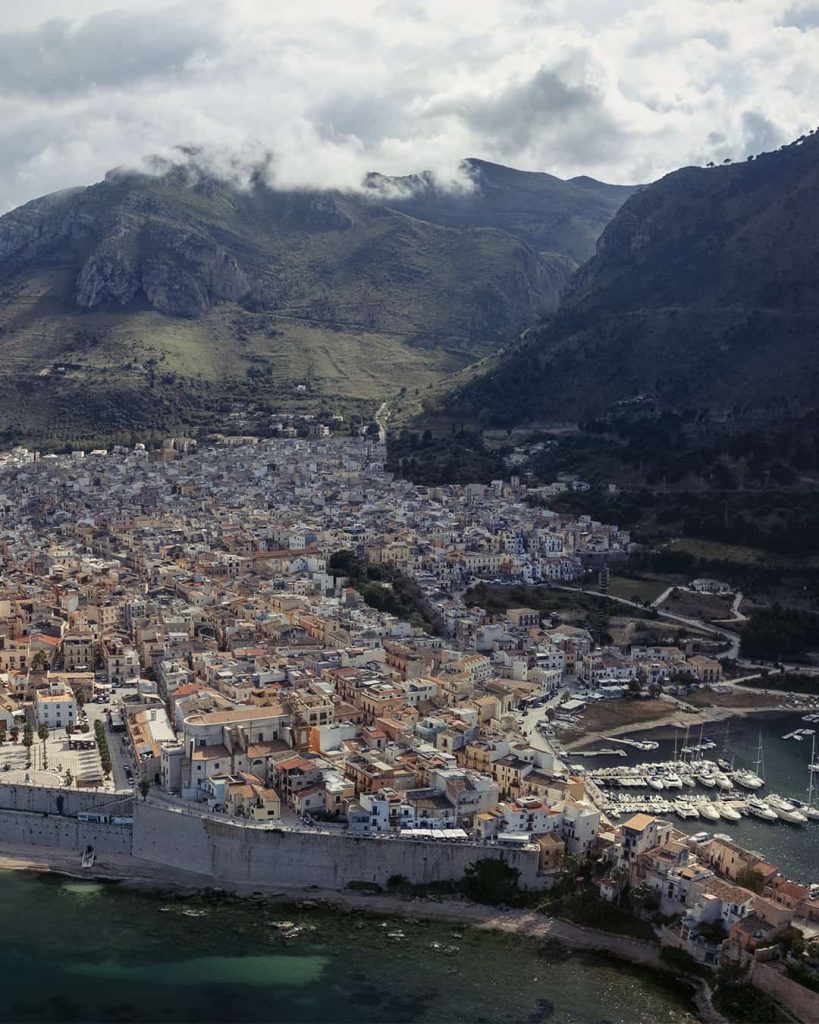
Nonetheless, there was a bit of a catch. Sicilians apparently often speak the Sicilian language (it is a language, not even a dialect). Although they do speak official Italian, there were times when they spoke in Sicilian and it sounded like a totally different language- I couldn’t catch a single familiar word!
However, this didn’t happen often. Most of the time people spoke regular Italian and if you are lucky- even a few English words.
If you are thinking of learning some Italian basics, the best interactive course that I found online is Rocket Languages. Rocket Italian course is a set of audio conversations, grammar, and written and oral practice. You can have it on an app on your phone or your laptop, and learn at your own pace, come back to it whenever you want to repeat something or skip ahead.
Subscribing to the course gives you a 2-week free trial, lifetime access, and also 60-day money-back guarantee if you don’t find it useful (I definitely find it super useful and I still continue to study after my trip).
Learn Italian
Sign up for Rocket Italian language course before your Sicilian trip
26. Make sure to meet the locals
Interact with locals.
Sightseeing is amazing, but the true joy is in those short (or long) conversations and cheerful interactions with the local people. Sicilians are very outgoing and friendly (I think I already mentioned that before).
Even if you don’t speak Italian, don’t shy away from the hand language. I am sure the minimum you can learn is a friendly ‘ciao’ when you meet a person on the street. Trust me, they will happily respond. Sicilians are often curious to know where you are coming from-‘ di dove sei? ‘.
Usually, their guesses revolve around the most well-known destinations such as UK, Germany, France, or America (apparently people from these countries are frequent visitors). Sicilians were extremely delighted to find out that we came all the way from the UAE to their beautiful island. In fact, many of them confessed that Dubai is their dream destination to travel to. To this, I always joyfully replied, that yes indeed it is a beautiful place to see and live, but there is no place as wonderful as Sicily (I do have a very soft spot for Italy- a perfect place to move to one day).
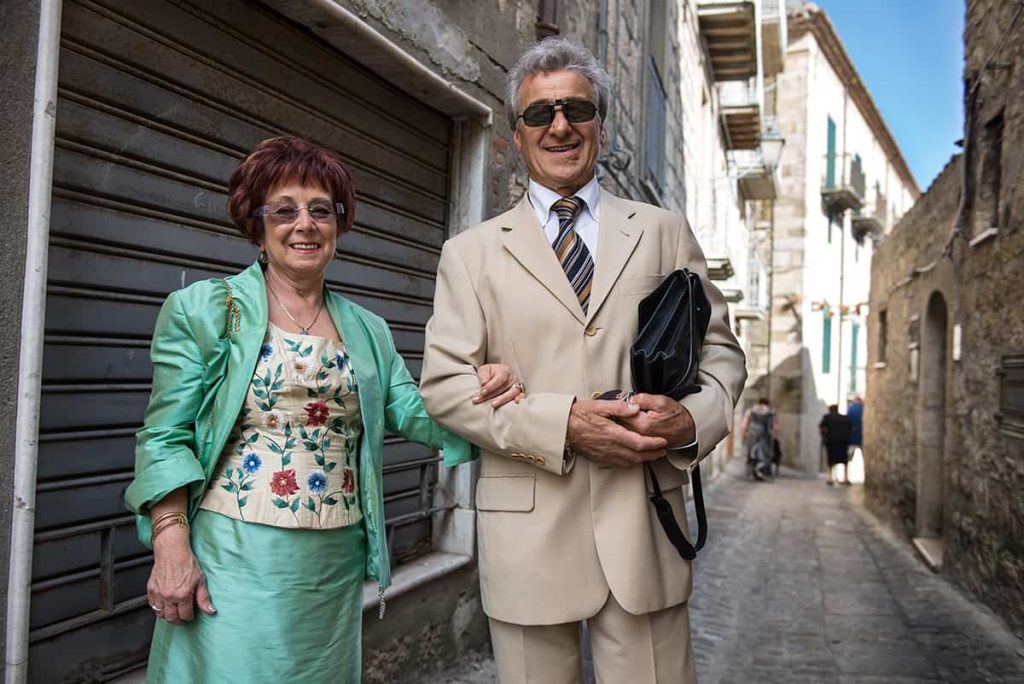
27. Avoid the “M” word
Sicily is often associated with the birthplace of the Mafia. Thanks to Hollywood films that have glorified organized criminal groups in the movies such as Godfather, there are a lot of misconceptions about past events. In reality, Sicilians had to deal with horror created by the local mafia and face consequences until today.
Therefore, this is a sensitive subject to bring up when talking to locals. It is not advisable to joke about it as you never know whose family member has actually been a victim of organized crime in Sicily.
Although the local mafia in Sicily still exists and operates today. In some places, business owners still pay a second tax that goes to organized crime and so-called protection.
However, as a tourist, you are not likely to come across any of these mafia-related aspects. Let alone experience any violence or dealings with the Mafia. Interestingly, in Palermo some hotels are owned by Mafia, while some actually set themselves free and signed anti-extortion charters – there is even a “pizzo-free” map with the list of these accommodations, in case you want to avoid supporting the bloody businesses.

MONEY, INTERNET, SIM CARD, GROCERIES
28. is sicily expensive to travel to .
Sicily is still less expensive to travel around than, for example, northern and central Italy. Especially if you go to smaller and less known towns like Castellammare del Golfo, you can find great accommodation deals. When it comes to food, you can get some bargain deals for street food in Palermo, amazing pizzas, and an unlimited supply of pastries everywhere.
You can check the budget breakdown on my Sicily Road Trip Itinerary post HERE to get an idea of what it costs to travel in Sicily.
29. Debit and credit cards are widely accepted in Sicily but always have some small change
Contrary to what I have read online before traveling to Sicily, debit and credit cards were widely accepted across the island. Even in smaller restaurants and shops. We paid for all our accommodation by card and very rarely needed to use cash (usually the possibility to pay by card is indicated on booking, or it is an automated advance charge prior to arrival).
Nonetheless, I still advise having some emergency cash for small spending. Not all the shops will have card machines, and even if they do, sometimes they may say it is not working so they can collect cash (as we learned from a local).
Some self-service petrol stations might also have card issues- which happened to us- and in this case, you definitely want to have cash.
Also buying small things like souvenirs or paying for toll gates is usually more convenient in cash.
30. Get a local sim card for cheaper data
If you are travelling for a couple of weeks in Sicily, it is well worth getting a local sim card with data and calls. It would usually be much cheaper than roaming. Tourist packs are available to purchase from TIM or Vodafone-those providers are offering pay-as-you-go tourist packages with the best coverage.
31. Be ready to allocate a couple of hours to sort out SIM card
Okay, there is a catch when it comes to sorting out the local SIM card in Italy, and also Sicily. It is probably one of the most complicated places when it comes to getting a data plan. The tricky part is that you may not be able to get SIM card at the airport which is the most convenient way when starting your journey in a foreign country.
Instead, you may have to look for a local TIM or Vodafone store in the town. If you are renting a car at the airport, the best way is to look up the nearest store and pre-download its location on Google Maps.
Be aware of your arrival time- if it is during working hours or not. Also, take siesta time into consideration (stores close from around 1-2 PM till 4-5 PM). Luckily, this might not be applicable if the store is located in a bigger shopping center. However, malls are not that common in Italy.
Once you are at the store, expect around 30 minutes to sort out payment, and installation, and then add another hour for activation of the SIM.
I am sharing my personal experience here. When landed at Naples airport, there was no SIM card shop available (2022). Therefore, we pre-downloaded Google maps with the nearest mall that had TIM shop (it was open during siesta time- made sure to check it). It took around 2 hours to sort out the internet but it was totally worth it to get this out of the way for our 3 -week-long journey in South Italy and Sicily. We purchased a generous 70GB plan for around 20 EUR, which was valid for 30 days, local calls included.
32. Big supermarkets are less popular than local specialty shops and markets
When travelling to Sicily, and also Italy, you may notice that big supermarkets are not that common. Thus, whenever you want to do grocery shopping, it might not be as per your usual habit of buying everything in one spot.
In Sicily, people still love using markets and specialty shops where they buy a specific product. There are separate pescaterias (fish shop), paneterias (bakeries), cheese, meat, fresh pasta, and vegetable shops. Those are the best places to get fresh produce.
Certainly, you can find mini-markets in every town where they sell the basics- milk, eggs, canned stuff, a small selection of cheese and sausages as well as some cleaning and shower products, detergents, and whatnot.
Talking about mini markets, we had a fun experience in Castellamare del Golfo. We were looking for a small bottle of olive oil to use for breakfast, but all shops had only 1-liter bottles which we couldn’t carry around and it would have been a waste of buying one. A lady working at one of the mini-markets in town understood our situation, and literally pulled out a bottle of olive oil and poured some of it into a small plastic cup for us to take away (at no extra cost). It was very kind of her and something you are not likely to experience in big shopping centers.
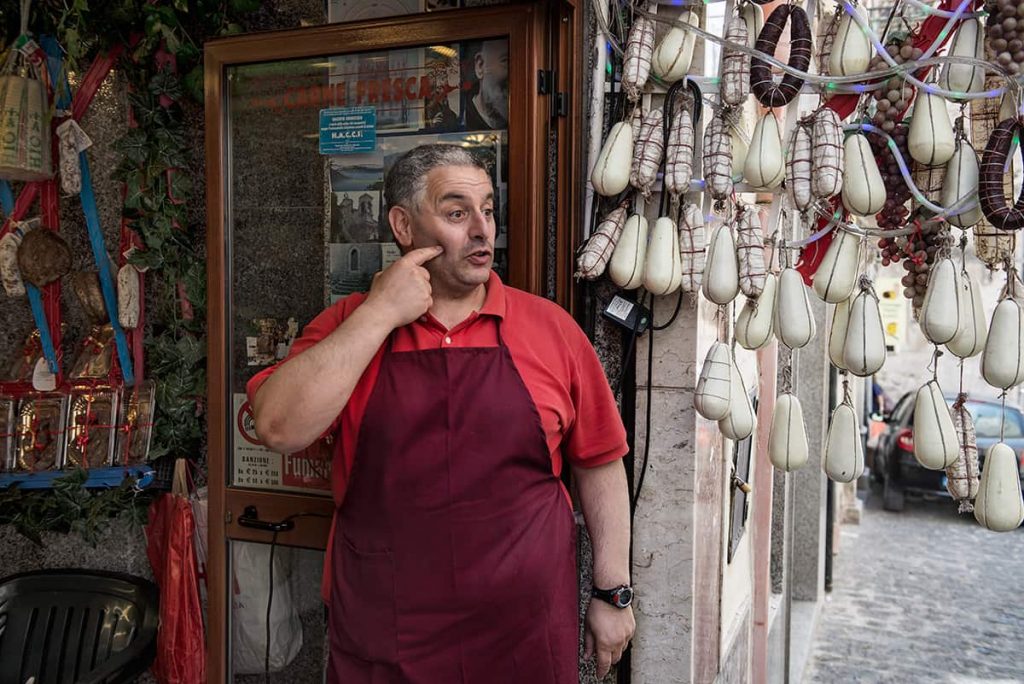
33. Covid – 19 in Sicily requirements
Today you can travel to Sicily and Italy by air for tourism purposes. All Covid-19 regulations have been lifted for travel to Italy. For more information about the requirements related to covid- 19 refer to this page .
Masks are still being worn inside supermarkets, churches, and museums. It was a strict requirement to wear a special medical mask (sold at the coffee shop at the port in case you don’t have one) on the Trapani-Favignana ferry. I have noticed that many elderly people still wore masks outside, and even in small towns. Knowing that Italy was one of the countries hardest hit by pandemics, it comes as no surprise.
Have you ever been to a destination where traveling felt challenging, or on the contrary- a complete breeze? Share your experience in the comments below. Also, if you have more questions about traveling to Sicily, please feel free to get in touch.
More Italy travel guides and resources
Sicily travel guides.
- Useful Tips for Renting a Car in Sicily and Driving Stress-Free
- Renting a car in Catania, Sicily
- Renting a car in Palermo: what you need to know
- Epic Road Trip for 2-weeks in Sicily itinerary
- Essential Sicily Travel Tips .
- 21 spectacular places to visit in Sicily
- How to visit Favignana island, Sicily
- Guide to hiking Lo Zingaro Nature Reserve
- Visit Gangi mountain town in Sicily
- The most beautiful small coastal towns and fishing villages in Sicily.
- The most charming mountain towns in Sicily .
- Which is better: Amalfi Coast or Sicily?
General Italy travel guides
- Browse all my blog posts about Italy HERE .
- Looking for romantic road trip ideas in Italy? Check my list of 15 Best Road Trips in Italy.
- The ultimate guide to renting a car in Italy
- Tips for driving in Italy for the first time
- Thinking of renting a car in Rome? Read my guide to How to rent a car in Rome .
- Best coastal towns in southern Italy.
- Explore Calabria- the least visited region in Italy.
- Visit Sicily- the biggest island in Italy.
Italy travel resources
Here are links to essential travel resources and services I always use when organizing my trips.
- HIRE A CAR : Rent a car at the best rates at Discover Cars .
- CHEAP FLIGHTS: find the cheapest and the best flight combinations with Skyscanner .
- ACCOMMODATION: find your perfect stay on Booking.com .
- VISA: apply for a Schengen visa easily at iVisa . Use OneWayFly to reserve dummy flight tickets/hotels if required for your visa application.
- TRAVEL INSURANCE: get 5% off your insurance by using my link on Heymondo , a travel insurance provider. For the cheapest travel insurance on the market check SafetyWing .
- eSIM CARD: Stay connected before you land. Airlo offers an eSIM card with up to 20 GB (7 to 30 days) data packages for Italy and Europe for reasonable rates.
- GUIDED TOURS: Find the best day tours in Italy on GetYourGuide , outdoor tours and activities with Manawa .
- PRIVATE TRANSFER: Book a private transfer to any location in Italy with GetTransfer .
- FLIGHT GOT CANCELLED OR DELAYED? You may receive compensation of up to 600 EUR. Consult and get support from AirHelp or Skycop .
Hi! I am a freelance photographer & videographer as well the creator of www.theroadreel.com. Born in Lithuania, and currently residing in the UAE, I have been traveling around the globe independently for over a decade. I created The Road Reel to share my passion for travel and photography through detailed road trips and city itineraries, and hiking guides, along with regular and drone photogragraphy tips.
Leave a Reply Cancel reply
Your email address will not be published. Required fields are marked *
Save my name, email, and website in this browser for the next time I comment.
- Share full article
Advertisement
Supported by
The Maya Train Will Get You to All of Yucatán’s Best Spots. But Not Yet.
In December, the train began running on its first route through Mexico’s Yucatán Peninsula. On a five-day journey a few months later, the author encountered enthusiasm, and scheduling hiccups.

By Elisabeth Malkin
Elisabeth Malkin has been visiting the Yucatán Peninsula for three decades.
I stepped off the platform at the gleaming new Maxcanú train station, eager to see the magnificent Maya archaeological site of Uxmal. All I needed was a taxi to take me there, a trip of about 30 miles away.
There are no taxis, said the stationmaster, as we stood on the polished limestone floors of the high-ceilinged station, which was cool and breezy despite the brilliant late-morning sun outside. And I was the third person in two weeks to get off at Maxcanú expecting to reach Uxmal, he said.
I was midway through a five-day trip to explore the brand-new Maya Train and several of its destinations in the Yucatán Peninsula of Mexico . Designed to run 965 miles (1,554 kilometers) around a loop of 34 stations when completed, the train will whisk passengers in cool comfort through colonial cities, archaeological sites, splashy resorts and tropical forests.
Now I was stunned. Wrangling a taxi has never been a problem in Mexico. But the drivers gathered in the main square of Maxcanú offered only beat-up vans that hopscotch through small towns, where I might or might not find a taxi to Uxmal. The next van was leaving in 45 minutes.
Yucatán’s layers of history have long held me spellbound. During earlier car trips, I have clambered up deserted Maya temples and palaces, stepped into the cool naves of massive 16th-century churches and visited restored haciendas, testaments of the ostentation — and hardship — of the peninsula’s 19th-century plantation economy. Traveling by train, I thought, would allow me to steep myself in more of that history.
But as I found in Maxcanú, a train won’t necessarily get you to where you want to go.
During my February trip, I traveled on the only route then available, an east-west leg that opened in December and runs from Cancún to Mérida, and then south through the port city of Campeche to the Maya site of Palenque (a short route between Cancún and Playa del Carmen opened last month, with three trains a day). I encountered scheduling confusion, unfinished stations and a dearth of trains — just two operating daily each way between Cancún and Campeche, and only one to Palenque. Overnight sleepers and special dining trains seem years away.
President Andrés Manuel López Obrador considers the Maya Train his showcase development project, and wants to inaugurate the rest of the train before he leaves office on October 1. Based on my experience, that goal seems elusive.
A $29-billion route through the jungle
I started my journey in Cancún, where in the pre-dawn gloom the station hovered like a glowing spaceship. An attendant scanned the ticket I had bought online and a half-dozen more pointed me toward my tourist-class car, which was about a quarter full. I planned to go to Campeche, about 300 miles away, stopping once each day. At 120 kilometers (about 75 miles) an hour, the train covers the route in about six hours, the same as a car. (When construction is complete, the train’s speed should increase to 160 kilometers an hour.)
The car’s wide windows looked out at a wall of low jungle. The blue-green seats were comfortable and there was ample space between the rows. I bought a very good cappuccino at the snack bar, but declined the plastic-wrapped sandwiches. The rest of the merchandise was fruit cups, milk boxes and junk food.
The train will ultimately cost much more than the $29 billion budgeted so far, and it’s not the first time ambitious planners have alighted on the region. Cancún was once a tiny fishing village, selected half a century ago as a tourist hub. Last year 10 million international tourists flew into its airport, more than the airports of Mexico City, Los Cabos and Puerto Vallarta combined.
But uncontrolled growth has stressed the Caribbean coast’s fragile environment. The Maya Train, scientists warn , will push those problems south, threatening the area’s water supply, its unique system of underground limestone caves and its vast nature reserves.
Mr. López Obrador has charged ahead, handing the train over to the military , and arguing that it will spread Cancún’s wealth and attract new visitors. Mexico received more than 42 million overseas tourists last year and they spent almost $31 billion .
Local governments see an opportunity. “The train will allow people to disperse throughout the peninsula,” said Michelle Fridman, the tourism secretary for Yucatán state, which promotes dozens of attractions far beyond highlights like Mérida and Chichén Itzá .
Now that the train is operating, transport companies will begin to connect stations with lesser-known sites nearby, she said.
It’s fair to ask whether the train is the most effective way to develop the peninsula’s tourism. Tour companies already run trips to many sites from major cities, which are well served by buses. Driving a rental car through most of the area is considered safe , according to U.S. State Department travel guidance .
Route of Mexico’s Maya Train
Canceled trip.
It took two hours (and one time-zone change) to reach Valladolid, a colonial city of handsome streets and ancient churches, where I bought the rest of my tickets at the station. A tourist-class ticket from Cancún to Valladolid costs 472 pesos (around $28) for foreigners and 355 pesos (around $21) for Mexicans. First class, with wider seats, costs 755.50 pesos and 566.50 pesos, and discounts are available for older travelers and residents of the five states along the train’s route. (A first-class bus from downtown Cancún to Valladolid costs between 222 and 344 pesos, depending on the time of day, and takes half an hour longer.)
It was impossible to run the new Maya Train tracks into dense city centers and the Valladolid station, like the rest, was outside the urban core. A waiting bus took disembarking passengers downtown, a 15-minute ride for 35 pesos.
That day I toured Ek Balam , the site of a ninth-century Maya kingdom that is dominated by a 100-foot palace distinguished by a facade of carvings depicting winged warriors, stylized animal features and geometric patterns bordered by giant fangs. Admission to the site includes entry to the X-Canché cenote, one of thousands of limestone sinkholes that were sacred to the Maya.
Later that afternoon, I was wandering through the Museum of Ethnic Clothing, a private collection of traditional dress, embroidery and hats, when a WhatsApp message from the ticket office blinked on my phone. My train scheduled for the following day was canceled.
I decided to deal with the problem in the morning and enjoy the city. As I wandered past the antique shops and boutique hotels of the elegant Calzada de los Frailes, it was clear that Valladolid’s tourism, and the infrastructure to handle it, was well established. The Maya Train is simply an alternative way to reach a city that tourists discovered years ago.
‘We’re on the Tren Maya!’
In the morning, I found that my train had not been canceled, but the station for which I had a ticket, Tixkokob, was closed. I got off instead one stop earlier at Izamal, known for its ocher streets and the giant Franciscan convent of San Antonio de Padua, built atop the ruins of a pyramid.
During the 90-minute ride, I heard widespread enthusiasm among fellow travelers who expressed a willingness to give the train time to work out the kinks. “We’re an experiment,” said Oliva Escobedo Ochoa, 64, who was vacationing from her home in central Mexico.
Leticia Iliassich, 57, who is Mexican, was traveling with her Croatian husband along with relatives from Mexico and Croatia. They had initially been scheduled on an earlier train to Mérida that had been canceled. “We knew that it was a new project,” she said. “We don’t mind.”
The group had already sent a video to friends declaring, “We’re on the Tren Maya!”
At the Izamal station I hitched a 15-minute ride into the town center with a man who had asked me to take his photo alongside the train and his father. From there I negotiated a taxi to Hacienda San Lorenzo Aké, a working hacienda that still turns the fiber from an agave plant called henequén into coarse rope. Global demand for henequén, known as Yucatán’s “green gold,” brought fantastic wealth to the region in the mid-19th century, speckling the peninsula with more than 1,000 haciendas. ( Many are now sumptuous hotels.)
Where geometry, nature and the divine merge
It was during my third day that I found myself stuck in Maxcanú, after a 90-minute train ride from Izamal. The stationmaster, an army captain, offered me a ride to Uxmal, just as he had to the stranded tourists before me.
Eying Uxmal’s 4 p.m. final ticket sale, I accepted.
My situation made it clear just how distant the Maya Train’s promises are for tourists seeking to explore more of Yucatán. In time, that will change, said Ms. Fridman, the tourism secretary. “The idea is to have more hotels along the train line,” she said. “That will happen little by little.”
But Uxmal , among the most stunning of the Maya sites, made up for the inconvenience. Uxmal’s grand buildings are faced with intricate decorative masks as well as friezes in which geometry, nature and the divine merge. New plaques at each structure offer detailed information in English and Spanish, part of the government’s investment in improving displays at Maya sites for the train project.
Most tourists either take day trips by car or bus to Uxmal from Mérida or stay at one of three nearby hotels. As I finished dinner at my hotel, the dining room began to fill up: 47 Polish tourists had arrived.
Panama hats and a cramped van
My plan for the day was to go by taxi to Bécal, a town where Panama hats are woven in limestone caves to keep the fibers soft, and then pick up the afternoon train in nearby Calkiní for the port city of Campeche.
But I spent so much time watching the hat-making demonstration and then fitting my new hat and buying gifts that we set off with little time to reach the station. To my chagrin, I missed the train, the last one of the day.
On Calkiní’s central square, I found a van that was leaving for Campeche. Cost: 65 pesos. Time: about 1 hour and 20 minutes, similar to what I would have spent on the train. Of course, I was trapped in a cramped seat and had to listen to the driver’s choice of sentimental ballads, but I was dropped off in downtown Campeche, close to my hotel.
The next day, I toured the Museum of Maya Archaeology , an expertly curated collection that included haunting jade funeral masks, glyphs and delicate ceramic figures.
José Madrigal, 45, an engineer from Fremont, Calif., was trying to make Maya pottery interesting for his twin sons. The boys had just turned 5 and their birthday present had been a ride on the Maya Train. “They love trains,” Mr. Madrigal said. Then the family moved on, keeping up a brisk clip through the museum. They had another train to catch.
Should you take the train?
Yes, if you are traveling between larger stations. The train also offers a way to get to Palenque, which is harder to reach and has roads with security concerns. Travelers can stow bicycles on board.
To see train times, check the destinations on the website . You cannot buy tickets online more than a week in advance. But when you finally board, the ride is smooth — and the coffee is excellent.
Follow New York Times Travel on Instagram and sign up for our weekly Travel Dispatch newsletter to get expert tips on traveling smarter and inspiration for your next vacation. Dreaming up a future getaway or just armchair traveling? Check out our 52 Places to Go in 2024 .
Open Up Your World
Considering a trip, or just some armchair traveling here are some ideas..
52 Places: Why do we travel? For food, culture, adventure, natural beauty? Our 2024 list has all those elements, and more .
Mumbai: Spend 36 hours in this fast-changing Indian city by exploring ancient caves, catching a concert in a former textile mill and feasting on mangoes.
Kyoto: The Japanese city’s dry gardens offer spots for quiet contemplation in an increasingly overtouristed destination.
Iceland: The country markets itself as a destination to see the northern lights. But they can be elusive, as one writer recently found .
Texas: Canoeing the Rio Grande near Big Bend National Park can be magical. But as the river dries, it’s getting harder to find where a boat will actually float .
- International edition
- Australia edition
- Europe edition
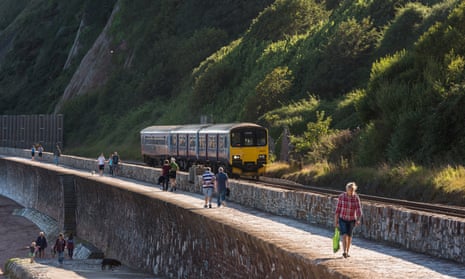
‘You can walk virtually everywhere in England by using the train’: the man connecting rail-based walks
A new website aims to offer a wide network of walking routes from British train stations, and is calling on hikers to add their favourites. Our writer accompanies the founder on a ramble to Bath Spa station
A British railway station can be many things. A place of tended flowers and toytown paintwork. A concourse of shuttered ticket booths and overpriced pasties. A terminus, a meeting spot, a gateway to escape. It can be heart-lifting or drab, bathed in birdsong or heaving with commuters. It can also be the starting point for a properly good walk.
National Rail serves 2,593 stations, their locations scattered across the map like cartographic confetti. Many of them sit directly on longstanding hiking trails or within a short distance of paths worth exploring. In a large number of cases, it’s possible to walk between two stations following rights of way, rendering a car or taxi redundant.
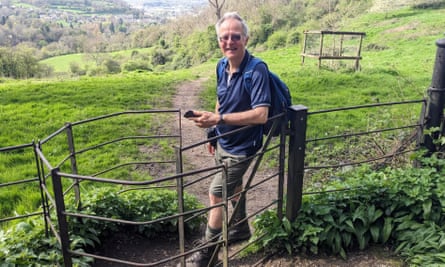
Such routes are frequently scenic but often little-known, giving value to the prospect of a dedicated database of station-to-station walks. Might a disembarkation at Ffairfach, Whatstandwell or Crianlarich be the passport to your next hike? Quite possibly – which is where the recently launched Railwalks.co.uk comes in. Its aim is to create a crowd-sourced national network of rail-based walking routes, mostly ranging from two to 20 miles.
“If you’d asked me 20 years ago how much of Britain you could walk through while using public transport, I would have imagined, like everyone else, not very much,” says founder Steve Melia, an academic, author and one-time Lib Dem parliamentary candidate who gave up flying in 2005 and driving in 2009. “I discovered that that’s not true. You can walk virtually everywhere in England by train – and bus, but mainly trains – and a lot of Wales and Scotland.”
I meet Steve near the station in the Wiltshire town of Bradford-on-Avon, from where we’re taking a nine-mile countryside walk to Bath Spa station. It’s one of the first truly fine days of spring, a breezeless morning of sunshine and plum blossom. Twenty four hours earlier we’d have got drenched, but today the skies are blue, the blackbirds are fluting and the dandelions are blinding. We head to the banks of the Kennet & Avon canal, bear west and begin.
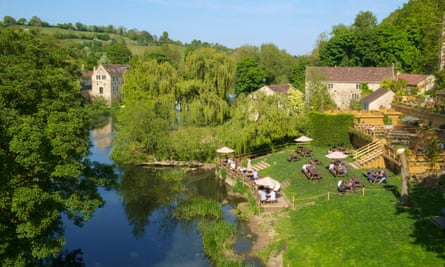
Steve first had the idea for the website, which was unveiled in January in partnership with like-minded walking organisation Slow Ways , when he moved to Bristol in 2009 to teach transport and planning at the University of the West of England. “I started doing public transport-based walks each weekend,” he says, as the canal path leads us past narrowboats and banks of forget-me-nots. Waggy-tailed terriers zigzag the other way. “I like to walk somewhere different every time I go out, and the fact I was able to do that for 15 years and still find new routes made me think there was more to this than people realise.”
Soon we reach a path across open fields. A herd of friesian cows graze in the middle distance. The route we’re following is one of many that Steve has plotted (he’s a fan of poring over paper maps) then uploaded online as a GPX file ( which can be found here ). He’s one of four volunteers managing Railwalks, an umbrella website that has gathered together relevant regional webpages listing local rail-based hikes. These include a wide variety of sources (with a varying level of detail) from walking and community groups to local authorities and individuals such as Steve. His collection of walks near Bristol ( greentravelwriter.co.uk/rail ) sit alongside other day-walk itineraries everywhere from the South Downs to the Scottish Highlands.
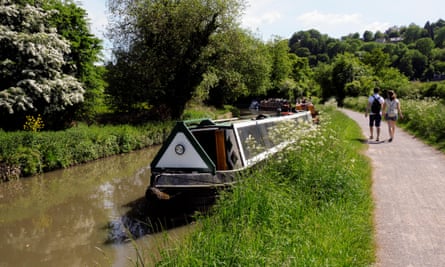
This, however, is just the beginning. By partnering with Slow Ways – which is midway through creating a web of walking routes that connect all Britain’s towns, cities and national parks – Railwalks aims to eventually offer a comprehensive, searchable, national network of rail walks, a mixture of station-to-station routes and circular hikes. And like Slow Ways itself, it needs your help.
“We’re asking people to add new walks,” says Steve. This involves signing up to Slow Ways via the Railwalks website or, for those already registered with Slow Ways, adjusting their profile settings to incorporate Railwalks (instructions for both options can be found at railwalks.co.uk/how-to-help ). “The idea is that our network will eventually go into a separate section of the Slow Ways site,” says Steve.
The concept at its core is admirable. Few pleasures are more simple than cross-country rambling with a trail at your feet and hours at your disposal. Our route to Bath winds up and down across the hills. We pass through pretty limestone villages with old-world names – Avoncliff, Limpley Stoke, Monkton Combe – and stop at the 16th-century Inn at Freshford for liquid sustenance. On the trail, wrens trill and the scent of wild garlic hangs on the woodland verges.
after newsletter promotion

Steve acknowledges that relying solely on trains can pose problems for hikers – not least the cost – but he and his fellow volunteers are passionate about spreading the word that rail-based walks aren’t only feasible but can also be deeply enjoyable.
Now in his early 60s, Steve goes walking at every opportunity. As we descend towards Bath down a long green meadow, the city’s Georgian crescents glinting in the afternoon sun, I notice his boots. They look as if they’re carrying the dust of a decade-long pilgrimage and I mention the fact. “What, these?” he laughs. “I only got them a few months ago.”
Three more station-to-station walks on railwalks.co.uk
Torquay to Teignmouth , Devon Distance: about 12 miles. Tracing a section of the South West Coast Path along a scenic stretch of the Devon coastline.
Cynghordy to Llandovery , Carmarthenshire Distance: about 7 miles. An undulating route between two stations on the Heart of Wales line, finishing in the market town of Llandovery.
Bempton to Filey , Yorkshire coast Distance: about 10 miles. A clifftop walk along the North Yorkshire Coast, with the chance to spot breeding seabirds on Bempton Cliffs in spring.
railwalks .co.uk
- Walking holidays
- Rail travel
- United Kingdom holidays
- Public transport trips
- Wiltshire holidays
- Bath holidays
Most viewed
It's a 'no-brainer': Passenger rail study supports Goldsboro route from Wilmington to Raleigh

After more than 56 years without passenger rail service in Wilmington, a newly commissioned passenger rail study has proposed routes for the Wilmington to Raleigh train service -- recommending travel through Goldsboro rather than Fayetteville.
"We think that the decision to go on this side is a no-brainer versus going the Fayetteville side," said Steve Unger, co-head of Eastern Carolina Rail , a nonprofit advocacy group dedicated to returning passenger service to the Port City. "This has been long identified as the best route ... but this is finally putting a stamp on it."
Previous Coverage: The return of passenger rail to Wilmington is 'not a done deal,' but it's in the cards
WGI Inc., an engineering firm of West Palm Beach, released a draft of the Southeastern North Carolina Passenger Rail Feasibility Study in April, citing decreased travel times alongside lower construction and maintenance costs as primary factors driving the routing decision.
The Goldsboro route would save approximately $170 million in estimated project costs and decrease travel time between Wilmington and Raleigh by approximately one hour in comparison to the Fayetteville route, according to a news release from Eastern Carolina Rail. Fayetteville will get a consolation prize, allowing for expansions in the passenger service between the city and Raleigh.
The current report calls for passenger stops at Raleigh's Union Station, Clayton, Selma's Amtrak station, Goldsboro, Wilmington, and two other additional sites yet to be chosen.
“This is excellent and exciting news,” said Gene Merritt, co-head of Eastern Carolina Rail, in the release. “This report (shows) we are finally on our way.”
Eastern Carolina Rail would like to see least one passenger stop in every county and has also recommended the Wilmington International Airport as a possible location for a stop, Unger said.
"We've already made presentations in Burgaw, Wallace, and Warsaw," Unger said. "Imagine if you could hop on a train in Burgaw and come into Wilmington and commute without having to drive down (I-40)."
In September 2023, Wilmington Mayor Bill Saffo expressed his support for the reintroduction of passenger rail in the Port City. "Wilmington can and should be a part of a passenger rail system in North Carolina," Saffo wrote.
Unger agreed that the implementation of the route has been long-awaited, highlighting the potential benefits in Wilmington and the surrounding areas.
"It would provide at a very reasonable cost, probably under $30 a ticket one-way, public transportation that moves just about the same speed as hopping in your car and driving to Raleigh or vice versa," Unger said. "The economic benefit to the towns and cities along the way is tremendous."
A second rail line is also being considered between Wilmington and the State Port, which would be used for freight. Currently, one sole track services Wilmington via Lumberton with no backup, according to the release.
"This would offer a second line and a direct route to Raleigh, a direct route to reaching the (North Carolina) Global TransPark, (and) it will also help connect the two state ports," Unger said. "For the military to be able to move goods in and out of Wilmington...having this line here would be a tremendous asset and a strategic asset."
Preliminary federal grants of $500,000 have been awarded for both projects in addition to five other passenger rail projects in the state. A portion of the funds will be allocated to track upgrades, allowing for trains to run at a 79 mile per hour speed, and the re-establishment of passenger rail depots.
Looking forward, planning and construction will eventually necessitate a combination of both federal and state funding, according to the release. The selection of the two additional passenger stops will ultimately depend on a variety of factors.
"Part of it is community interest ... how bad do you want service? The need (for cities and towns) to press their case is important" Unger said. "To some degree, (it's) up to the county and town officials...but we're making the case for the whole line."
Already underway is a local project in Goldsboro -- an effort to save the city's historic Union Station -- one that hasn't been used for trains since 1968. An event titled Saving Union Station Day , focused on fundraising and community awareness, will be held at the location on May 14 this year.
More: Book recalls bygone railroad that chugged between Southport and Wilmington, slowly
Following a public comment period for stakeholders in May, the next step is the final report, Unger said. This would lead to a Service Development Plan, or a "high-level business, operating, and capital plan with the objectives of demonstrating operation and financial feasibility," according to the draft report -- requiring a 10 percent state match to the 90 percent federal funding.
Three daily trains are expected to carry more than 80,000 riders annually from Wilmington, according to the release. With bus being the only current public transportation method connecting Wilmington to Raleigh, the potential for passenger rail would be "awesome," Unger said.
"It doesn't pollute nearly as bad as air travel does and it'll take a few cars off the road if people choose to ride the train," Unger said. With Raleigh developing into a major passenger rail hub, the route could allow for rail travel from Wilmington to other states like New York, Pennsylvania, and Maryland in the future.
Overall, the project would be expected to take between seven to 12 years to complete, Unger said, with a total cost of $810 million.
"The Hampstead Bypass ... which is about maybe a 10 mile stretch ... is going to cost well over $300 (million)," Unger said. "You think of 800 million being a lot of money, but in comparison to other transportation projects, it's a real bargain."

IMAGES
VIDEO
COMMENTS
Palermo - Trapani: To explore the western coast of Sicily and the city of Trapani, you can take a regional train from Palermo. The journey lasts about 3-4 hours. Palermo - Cefalù: The picturesque town of Cefalù, known for its beaches and historic center, is easily accessible by regional train from Palermo in about 1 hour.
The whole train goes onto a ferry from the mainland, and you can reach a few cities by train once on the island, including popular beach resort towns like Taormina. For the most part, Sicily is best explored by car. Photo credit: Anna Lurye. Seeing Sicily by train is easy of you are going between main cities. From there, venture further afield ...
Should you travel from mainland Italy to Sicily by train, you can take the Intercity trains during the day from Rome and Naples. Check the Trenitalia website for more info. HIGH-SPEED TRAINS. Finally, should you be a fan of high-speed trains the Trenitalia Frecciarossa and Italo high-speed trains reach Villa San Giovanni (Calabria). From there ...
Travel Sicily by train and enjoy its breath-taking landscapes, incredible architecture and amazing food. Thanks to the regional and Intercity trains operated by Trenitalia, you can easily reach not only Palermo but also Agrigento, Catania, Siracusa, the famous Gole dell'Alcantara and much more! Here's our complete guide to the Sicilian ...
Frequency: Up to 25 trains depart daily from Catania Centrale to Taormina-Giardini, reducing to around 16 departures on Sundays. Duration: The fastest train from Catania Centrale to Taormina-Giardini takes 35 minutes. Most trains take between 40-50 minutes. Onward bus connections into central Taormina take 15 minutes.
Undoubtedly the most picturesque way to travel through Sicily, the train is usually the quickest way to travel between major cities. Second-class tickets are generally about two-thirds the price of first-class. Kids between 4-11 usually travel for about half the price of an adult fare, and kids three and under ride for free — which can be a ...
Monday 21 February 2022. Sicily: home to beautiful beaches, picturesque mountain ranges and truly delish food. It's hard to think of a better way to while away the summer than travelling through ...
This Italian island straddling three seas might be modest in size, but its varied landscapes are larger than life. Bus, boat, car, train or two wheels: however you get around, Sicily throws up stupendous coastline, mountain and volcano scenery in spades. Going slow is key - but even then, you'll struggle to ingest a fraction of the natural ...
Milan, Bologna, Florence, Rome or Naples to Sicily by sleeper train. From €39.90 upwards in a 4-berth comfort couchette, €49.90 in a 3-bed sleeper, €59.90 in a 2-bed sleeper, €84.90 in a single-bed sleeper. Prices are per person per bed. These are the cheapest prices, fares vary like air fares according to demand and how far ahead you book.
Travel time: 1 hour 9 minutes In front of the train station of Taormina-Giardini, you can take a public coach for 1 euro to reach the old town of Taormina in about 15 minutes. 4 From Taormina to Catania. Travel time: 34 minutes You can either take a bus from Taormina's old town or a train from Taormina-Giardini to Catania.
This is why it is very important to know the train routes in Sicily in advance. Having in mind those train lines in Sicily, account for at least 10 days to cover the itinerary provided, and many hours in the train when you travel from West to East and vice-versa. Consult the train map of Sicily we designed to discover the perfect itinerary ...
One rail route in Sicily that holds promise as a sightseeing journey and a step back in time is the Ragusa-Syracuse route, which takes approximately 2 hours one way. (You can also board the train at Modica, one stop east of Ragusa, which has slightly more frequent service and trims about 30 minutes off the journey.) The train is usually a ...
The train takes you along the coastline for the first part of the journey so the scenery can be lovely. Then you travel through the countryside for much of the middle part of the train trip. There are trains about every 2-3 hours (or 5-6 a day). The trip currently costs €13.50 in one direction.
The Rome to Sicily train time can be as quick as 5 h 40 mins on multi-connection services to Messina. Direct services from Roma Termini to Messina Centrale take 8 h 9 mins. Direct services from Roma Termini to Palermo Centrale take at least 11 h 39 mins. All routes include a 20-minute ferry crossing.
2.8K. This Sicily itinerary will show you exactly how to see the most amazing places on the island without a car. Using a combination of buses, trains, boats, one bicycle and your own two feet, you'll be able to see spectacular churches (like the one in Noto, above), breathtaking beaches (my favorite was on the island of Favignana) and charming medieval towns.
This rail holiday to Sicily boasts historic cities, alluring coastline, glorious landscapes and the remains of the ancient kingdoms that shaped the island. ... All rail and coach travel throughout your tour; Accommodation. 4* Hotel Accommodation; 7 nights' 4-Star hotel accommodation - 3 nights in an elegant hotel in central Palermo, and 4 ...
The main trains you could consider with are: Parlemo - Cefalu (1:00 hour)Your 7 days Sicily itinerary continues with. Palermo - Catania (3:30 hours) Siracusa - Catania (1:10 hours) Catania - Taormina (0:34 hours) You can have a look at the Trenitalia web site for schedules and reservations.
New for 2022! - Available to travel September - November Just a few years ago, touring Sicily by train would have been unthinkable. But with ultra-modern rolling stock, a convenient timetable and affordable prices, travelling Sicily by train has suddenly become appealing. It allows you to travel independently, meaning you can choose arrival and departure […]
I'd arrived here on the eastern coast of Sicily earlier in the day, planning to complete a 2.5-week trip to document the Italian island's culture of regional train travel, but the weather didn ...
This two-week itinerary covers the country's top sights. Day 1: Fly into Palermo, begin sightseeing there (sleep in Palermo) Day 2: Sightsee Palermo; side-trip to Monreale (sleep in Palermo) Day 3: Pick up car, visit Segesta en route to Trapani (sleep in Trapani) Day 4: Day-trip to Mozia and the salt flats, and up to Erice (sleep in Trapani)
Sicily by train. We need some help with planning our 3 week trip to Sicily in May 2020 as we want to travel by train only. A true rail holiday, preferably no bus journeys. Any tips, do's or don'ts, and suggestions are more than welcome. We also would love to hear about hotels near railway stations as we will travel with (light) luggage.
19. Travel to Sicily just for food. 20. Breakfast is not the main meal of the day, but in Sicily, you can fuel up with ice cream in a bun. 21. Catch up on your sleep during riposo - understanding Sicilian time (aka siesta) 22. There is time for aperitivo and then there is time for dinner. 23.
Travel Style. Rail Escorted Tours. Prepare for an extraordinary journey through Sicily by Train, starting from the historic sites of Taormina and progressing through the Sicilian Baroque marvels of Ragusa, Modica, and Noto. Conclude your adventure in Palermo and savour the picturesque charm of Cefalù. Highlights.
Buy a Rail Pass. If you plan to take multiple train journeys during your trip, buying a rail pass is worth considering. A rail pass allows you to travel on most trains in Europe without purchasing ...
Train travel time from L.A.: About 1 hour 15 minutes This beautiful small town, founded by the Spanish in 1776, is known for the Mission San Juan Capistrano and the swallows that make an annual ...
Read more on Europe travel: ... Katane Palace Hotel is situated close to the train station and features classic Sicilian decor. It's just a 20-minute walk from the cathedral, and trips to Mount ...
Designed to travel in a 965-mile loop when completed, the Maya Train will whisk passengers to the Yucatán Peninsula's colonial cities, archaeological sites, splashy resorts and tropical forests.
National Rail serves 2,593 stations, their locations scattered across the map like cartographic confetti. ... Get travel inspiration, featured trips and local tips for your next break, as well as ...
Starting this morning, passengers on the Eastside will be able to use Link light rail to travel quickly and safely to destinations throughout Bellevue and Redmond. The 6.6-mile initial segment of the 2 Line includes eight stations, with service every 10 minutes, 16 hours a day, seven days a week.
After more than 56 years without passenger rail in Wilmington, a new study recommends travel through Goldsboro on Wilmington to Raleigh route.